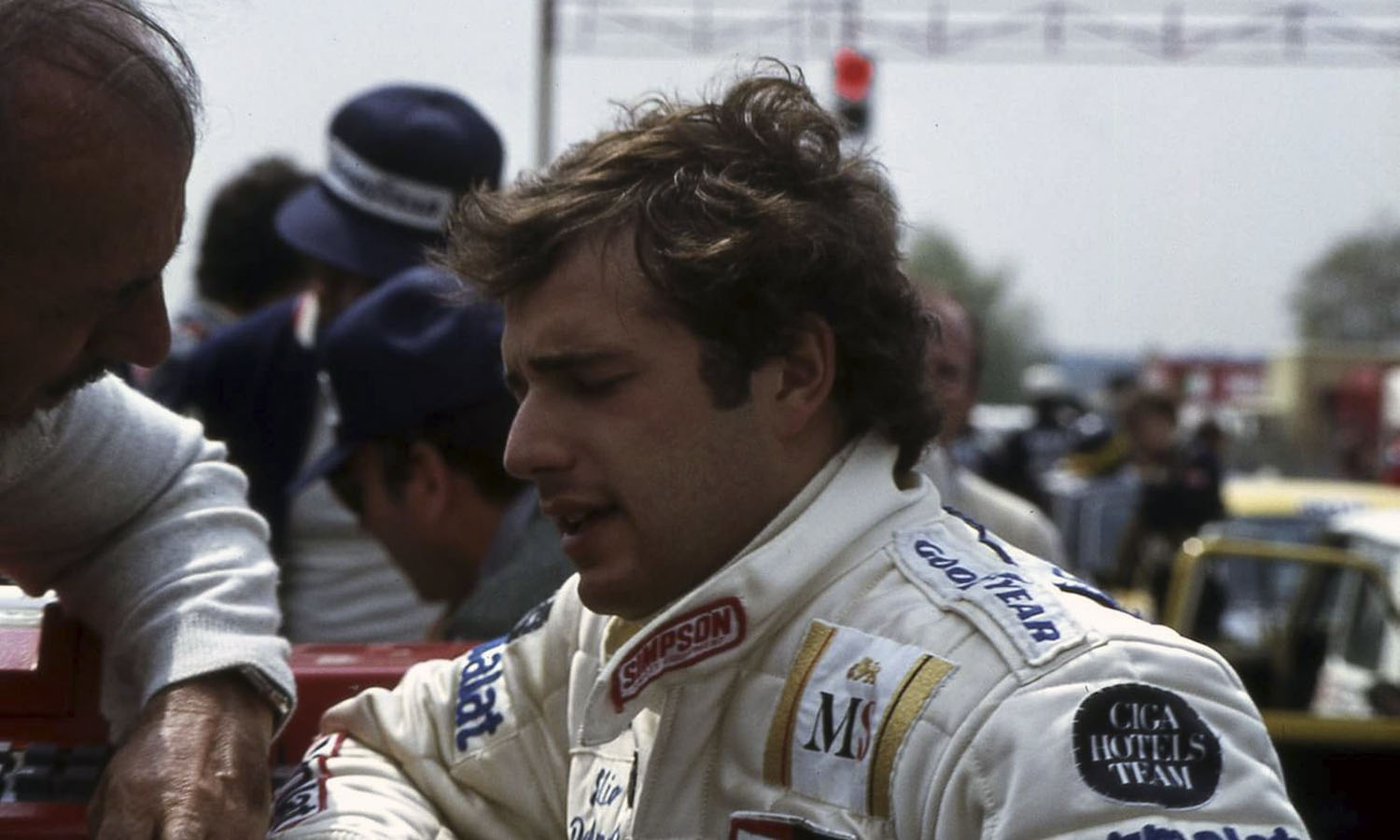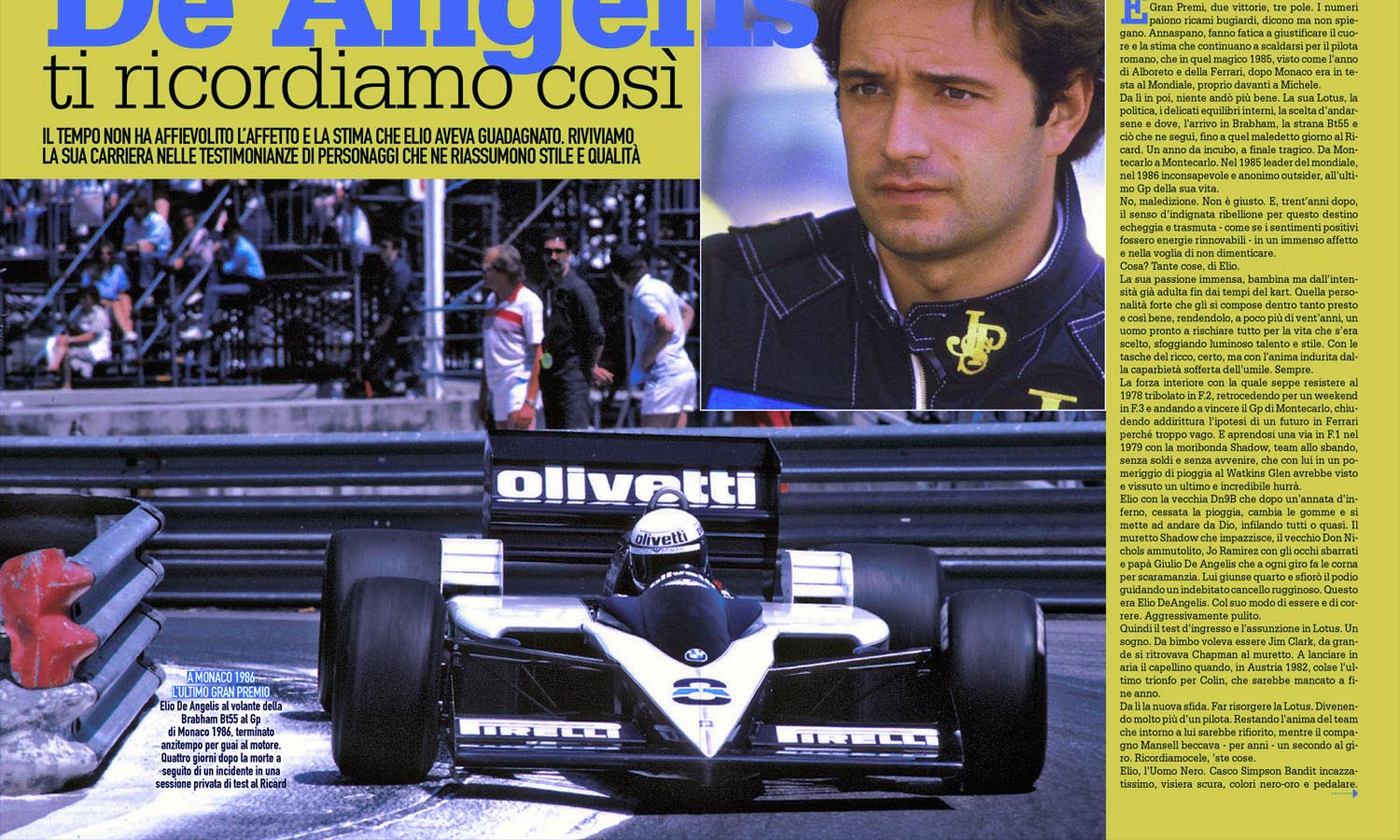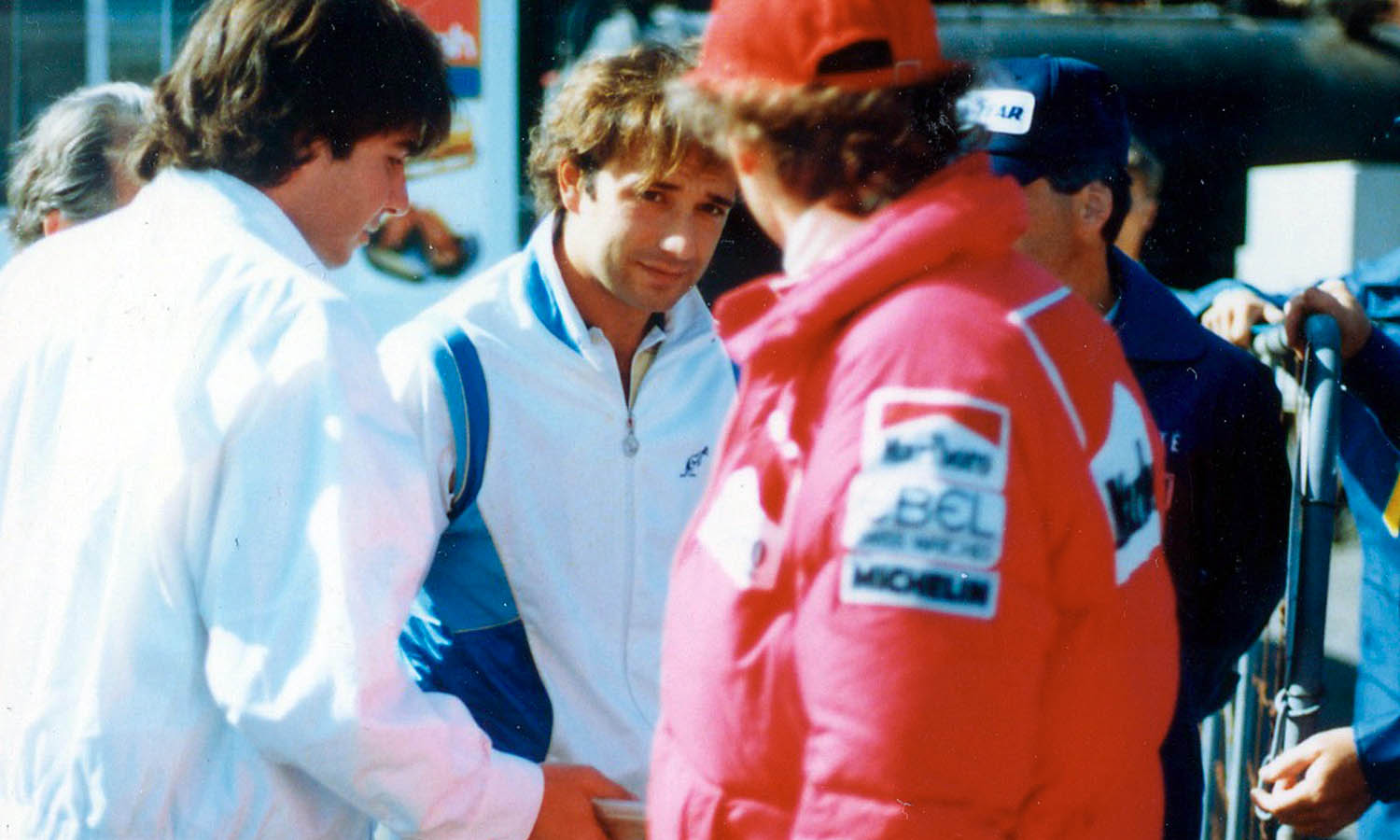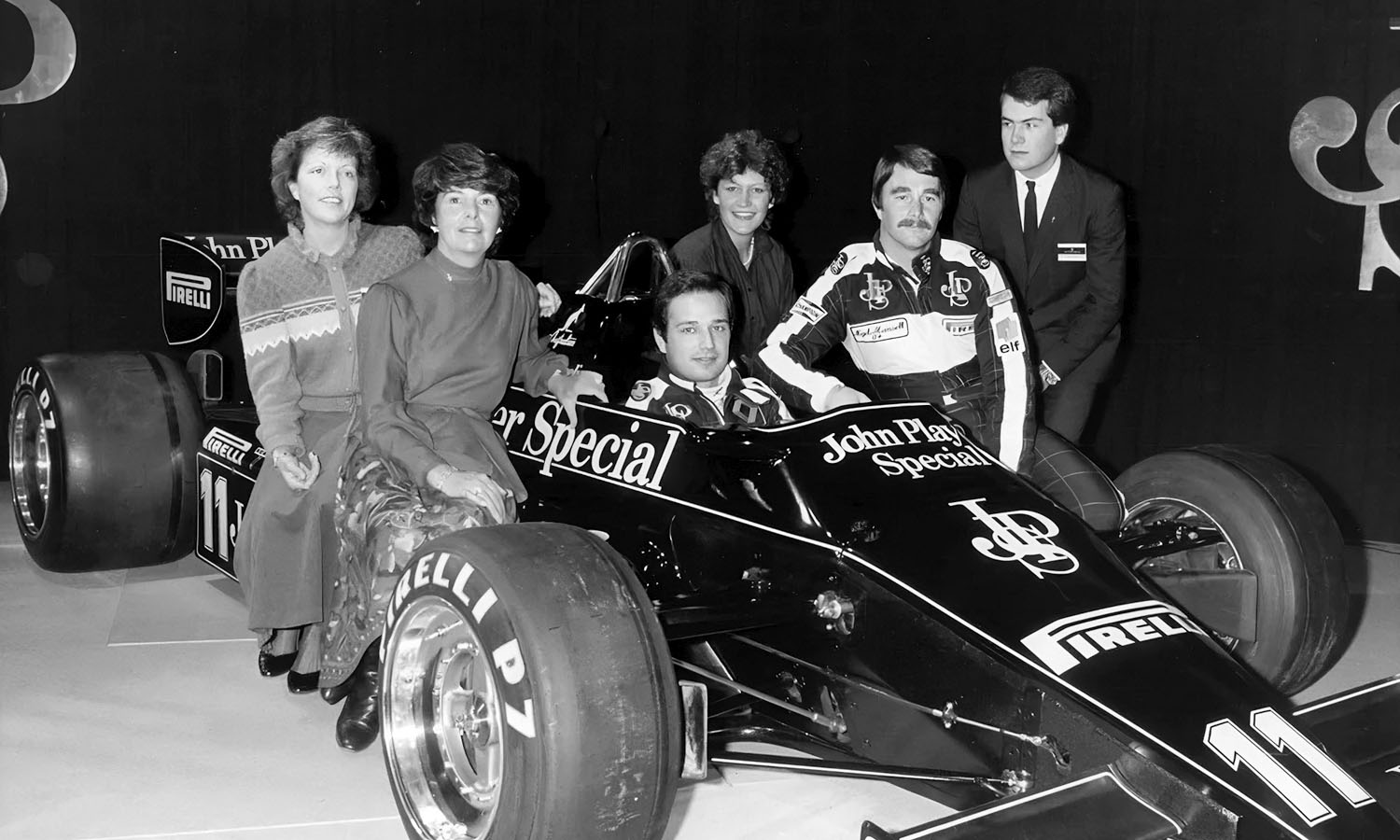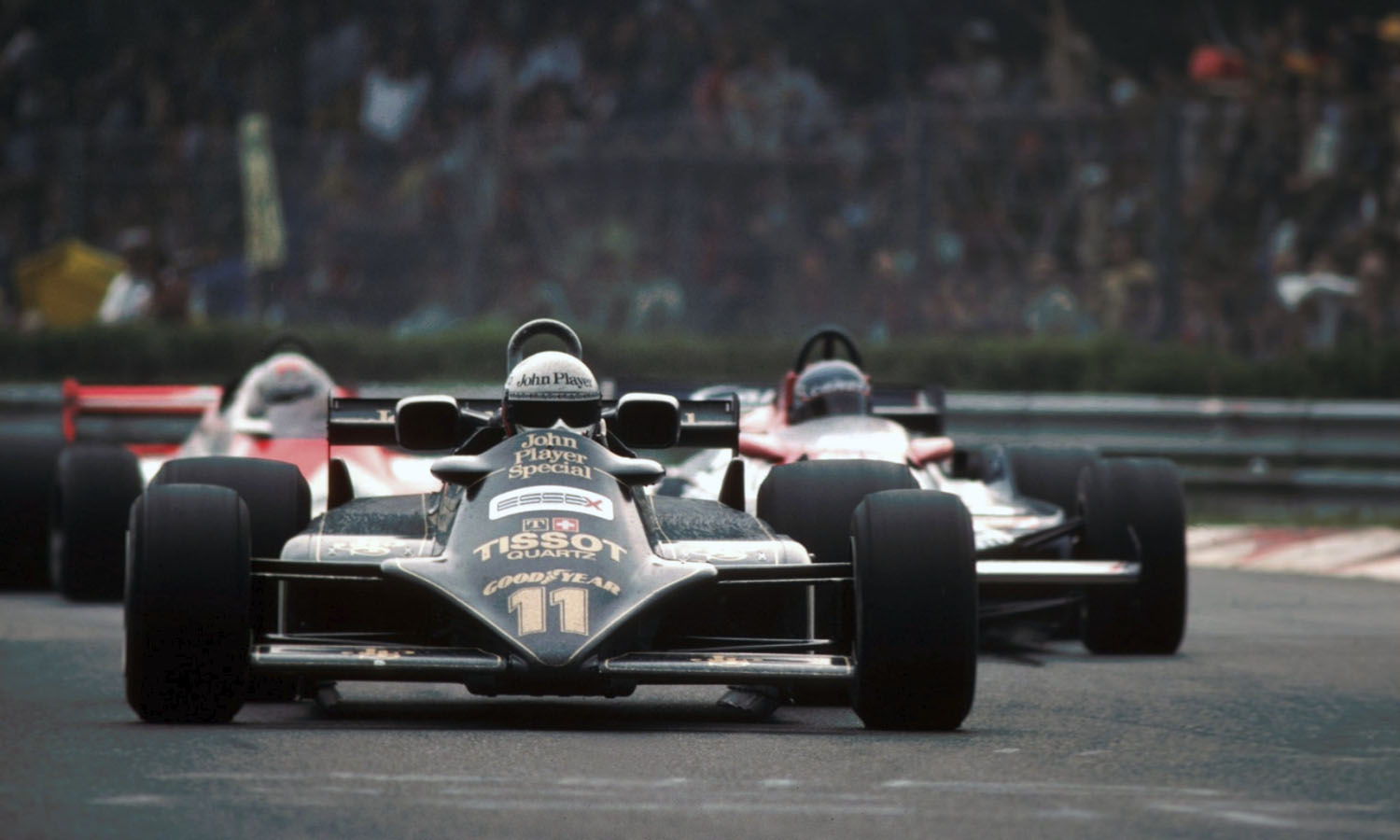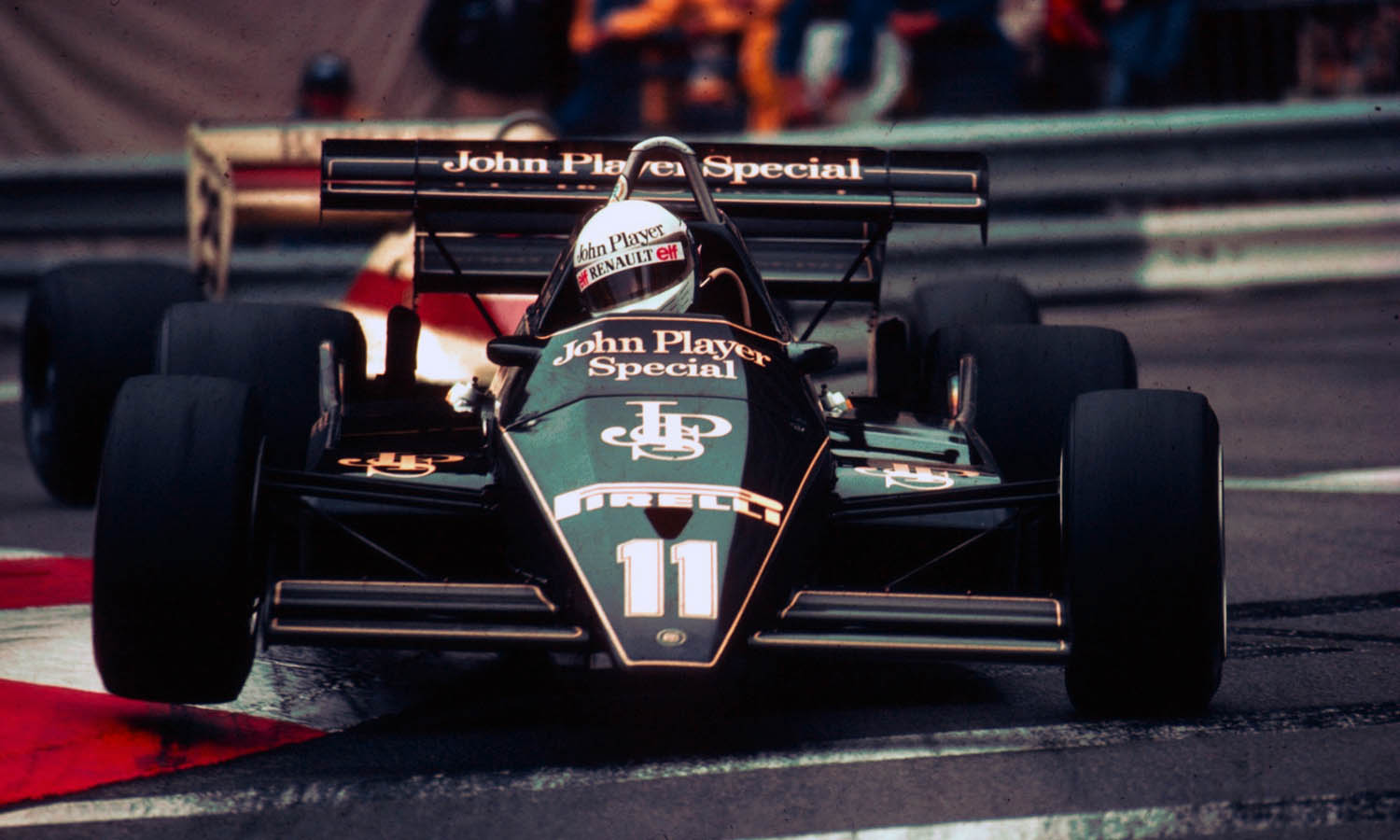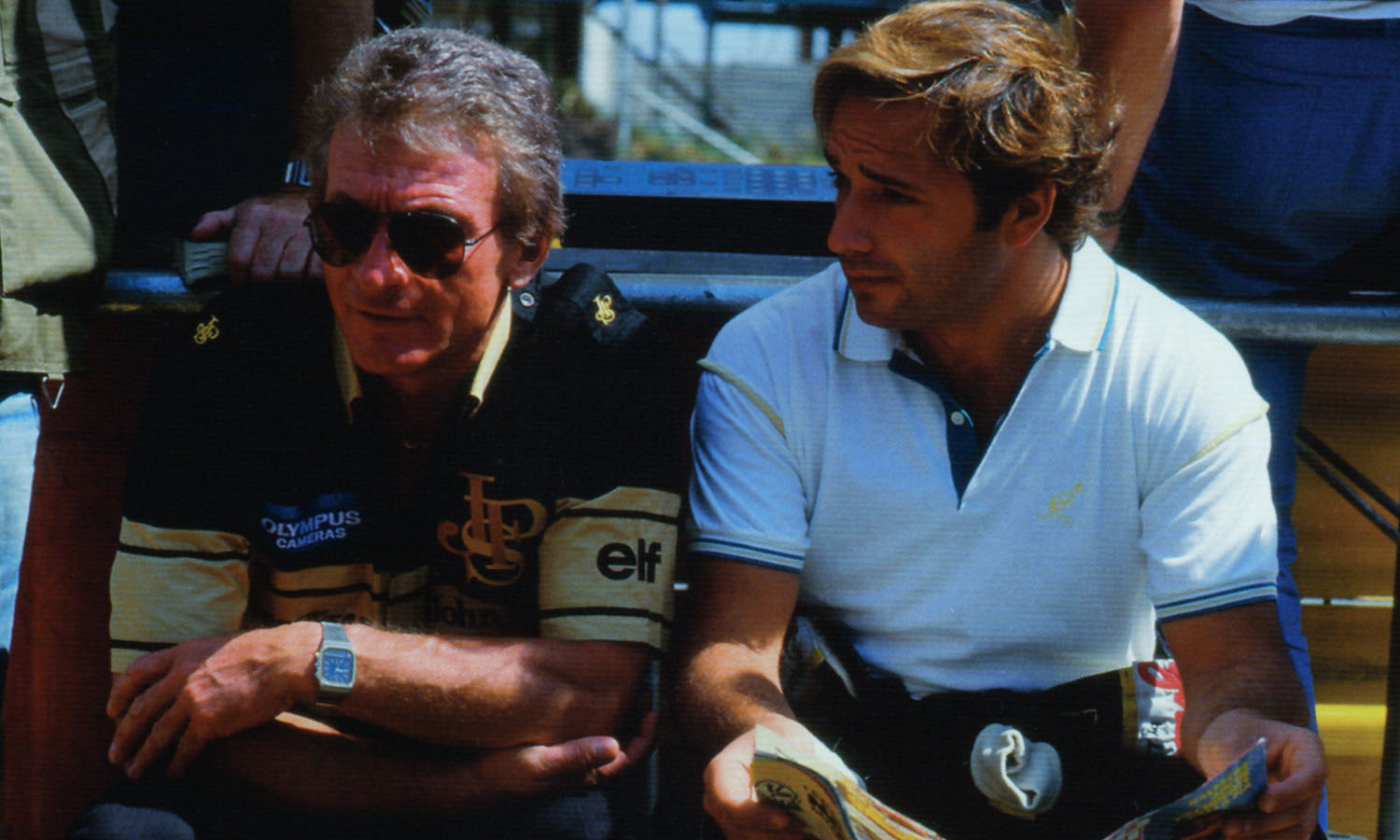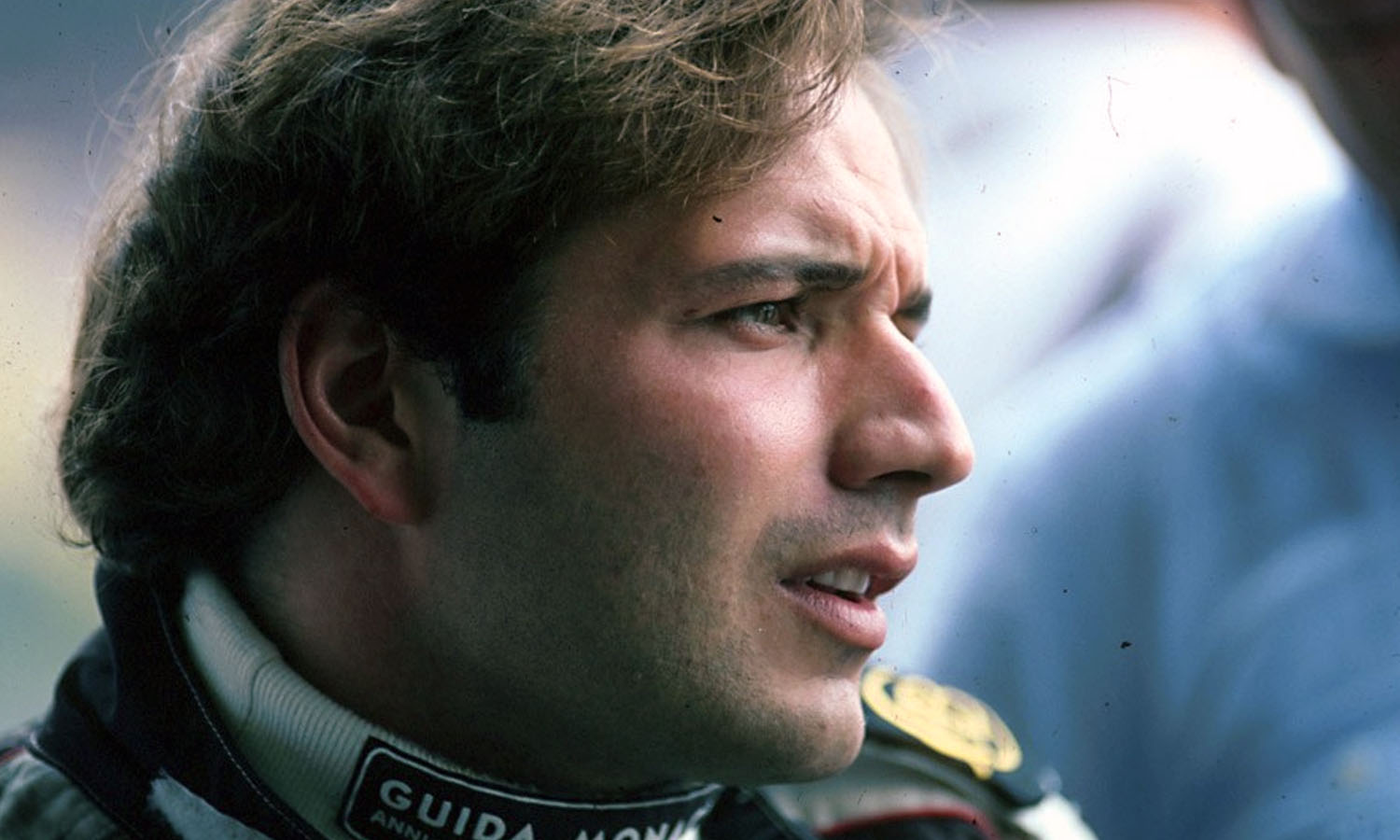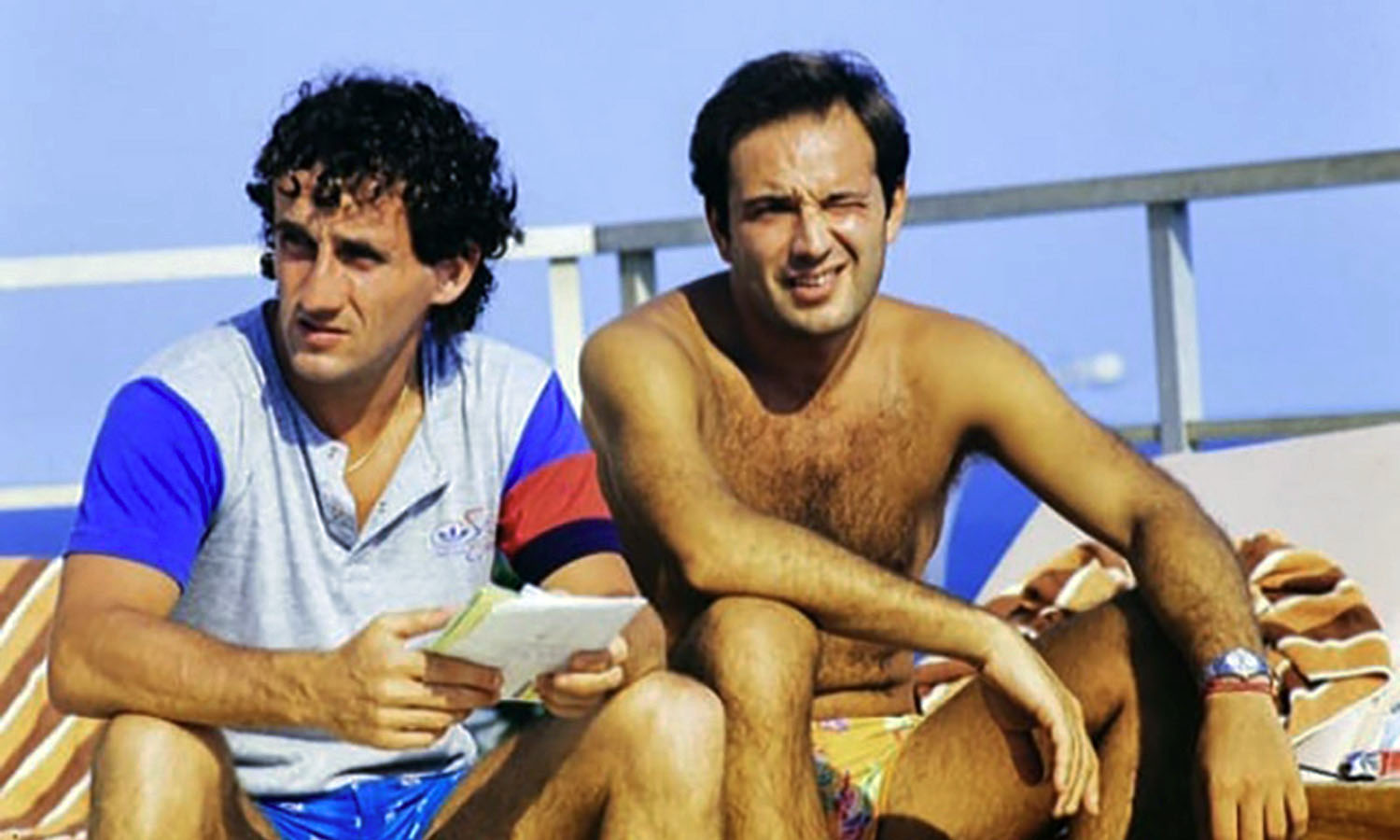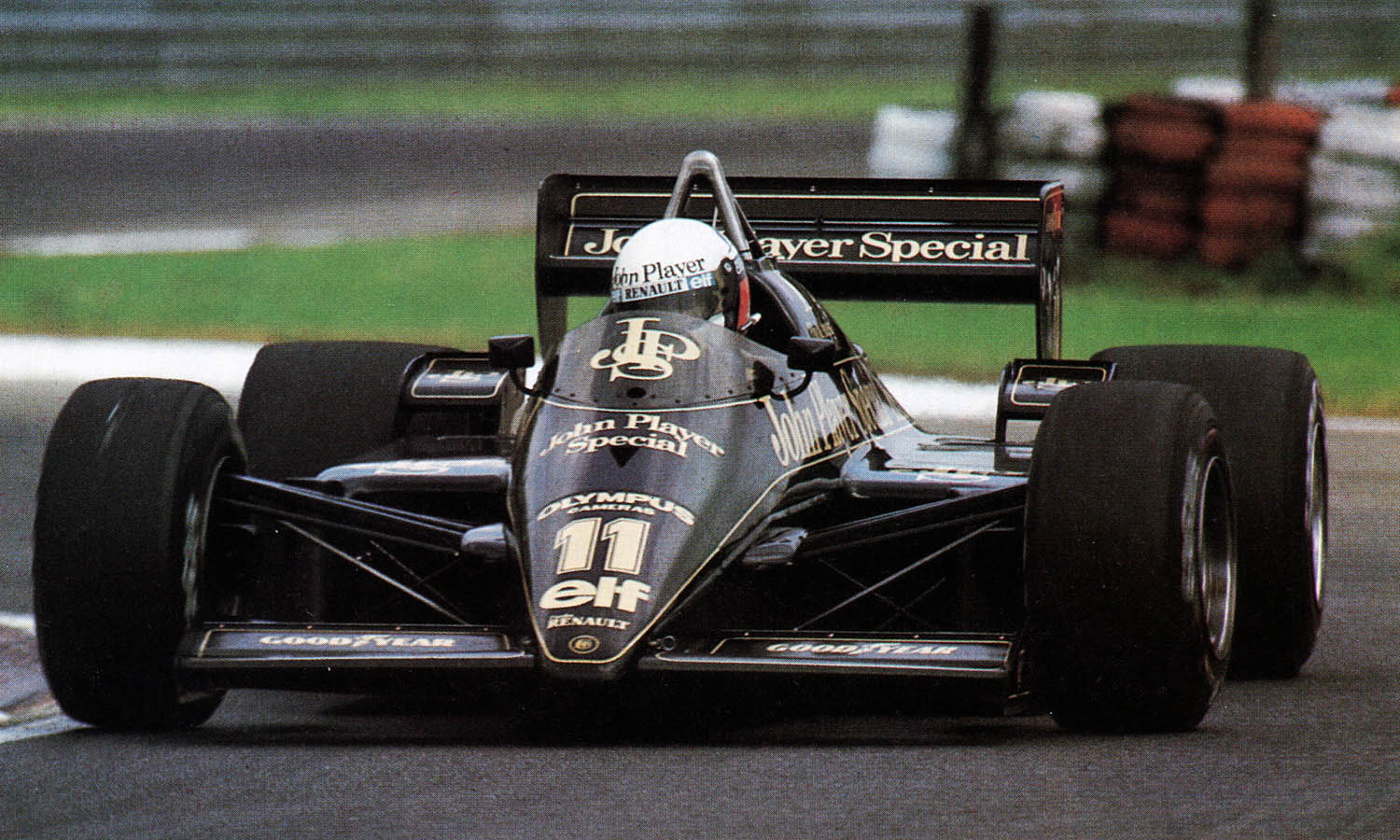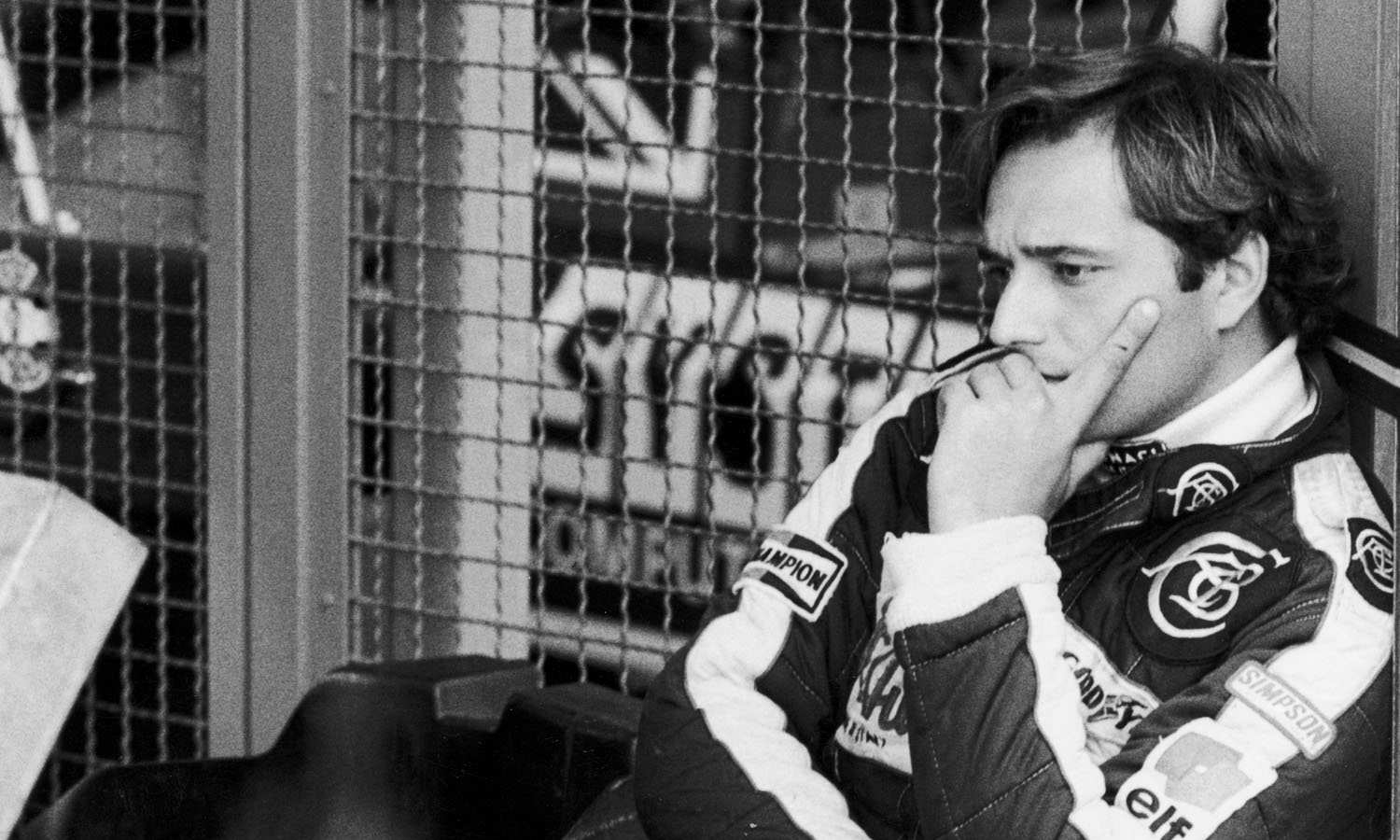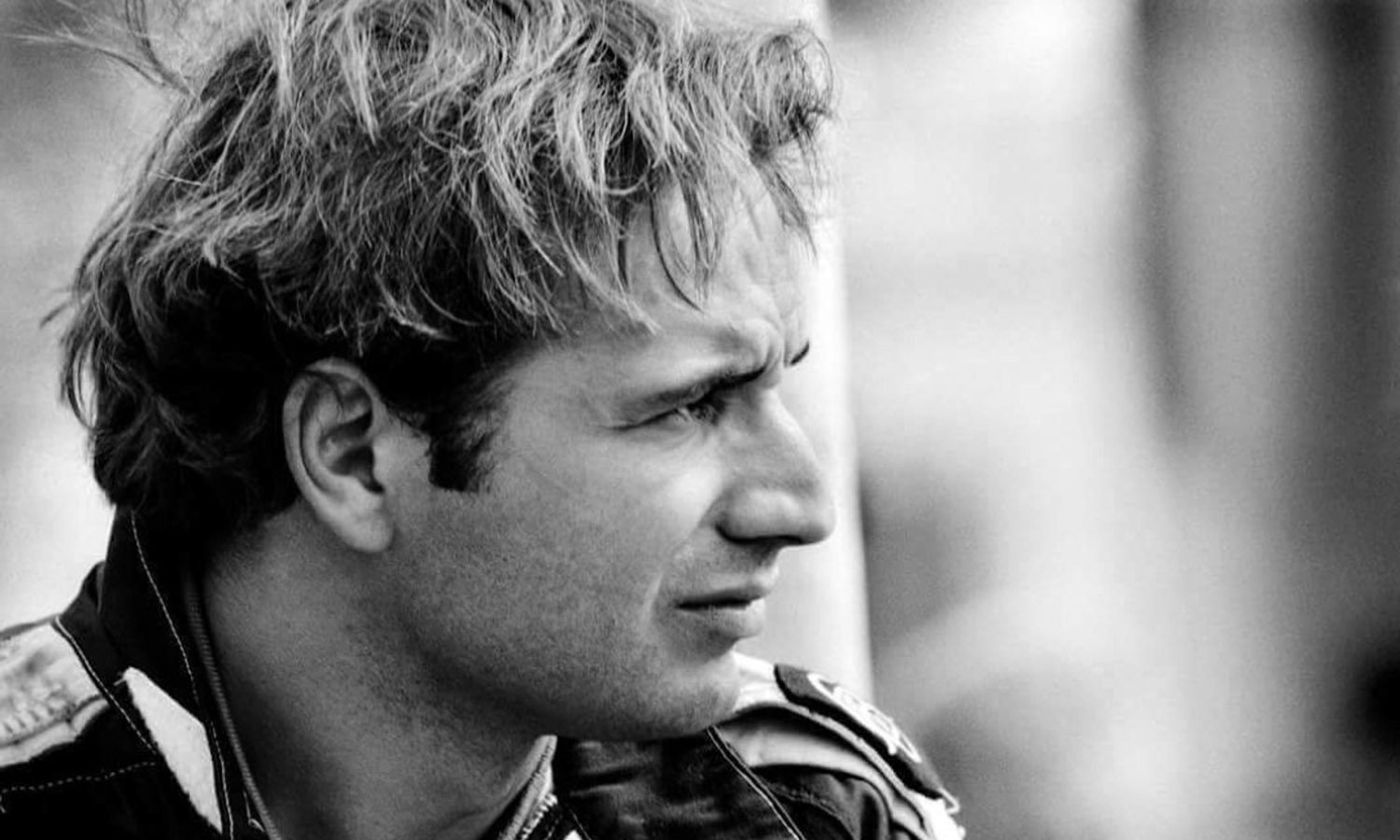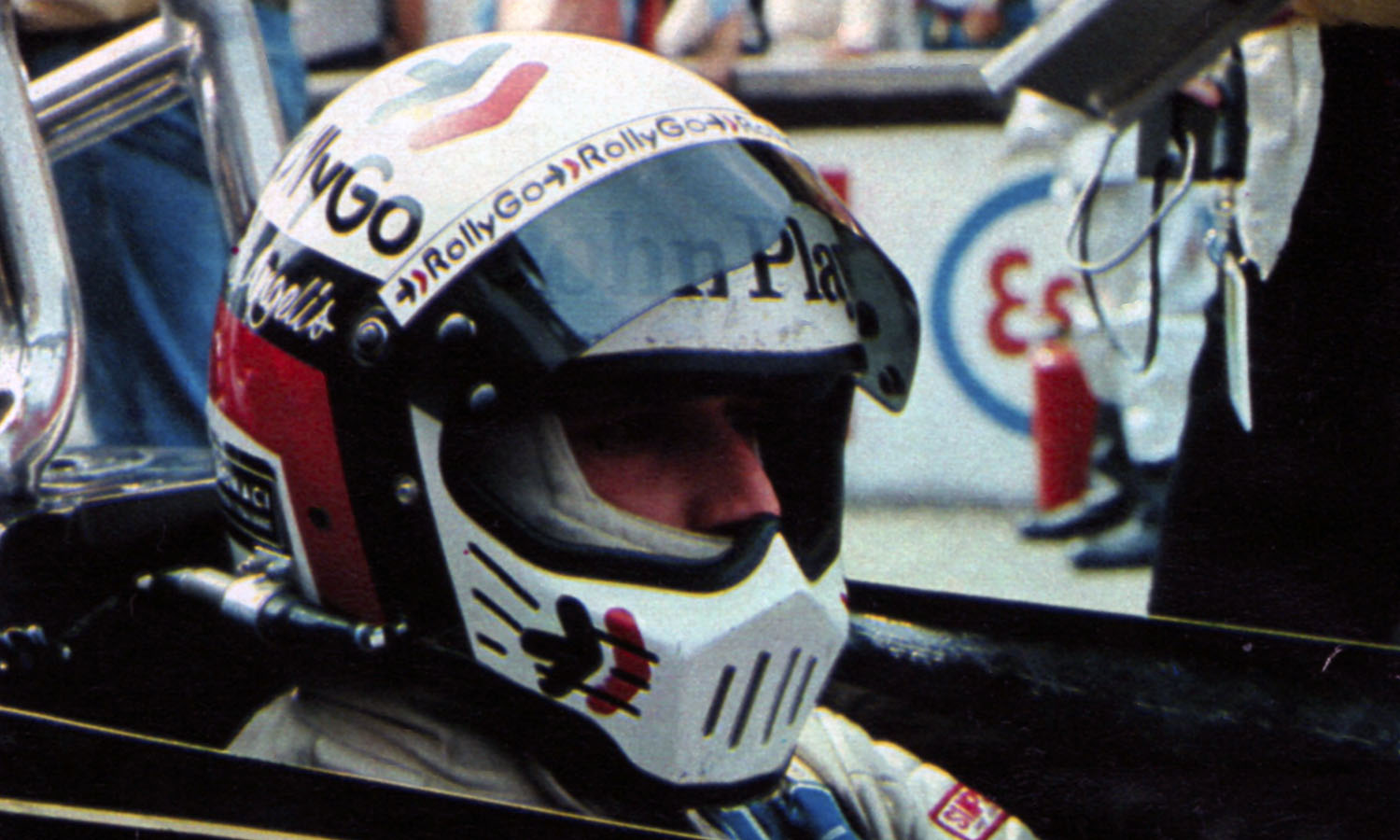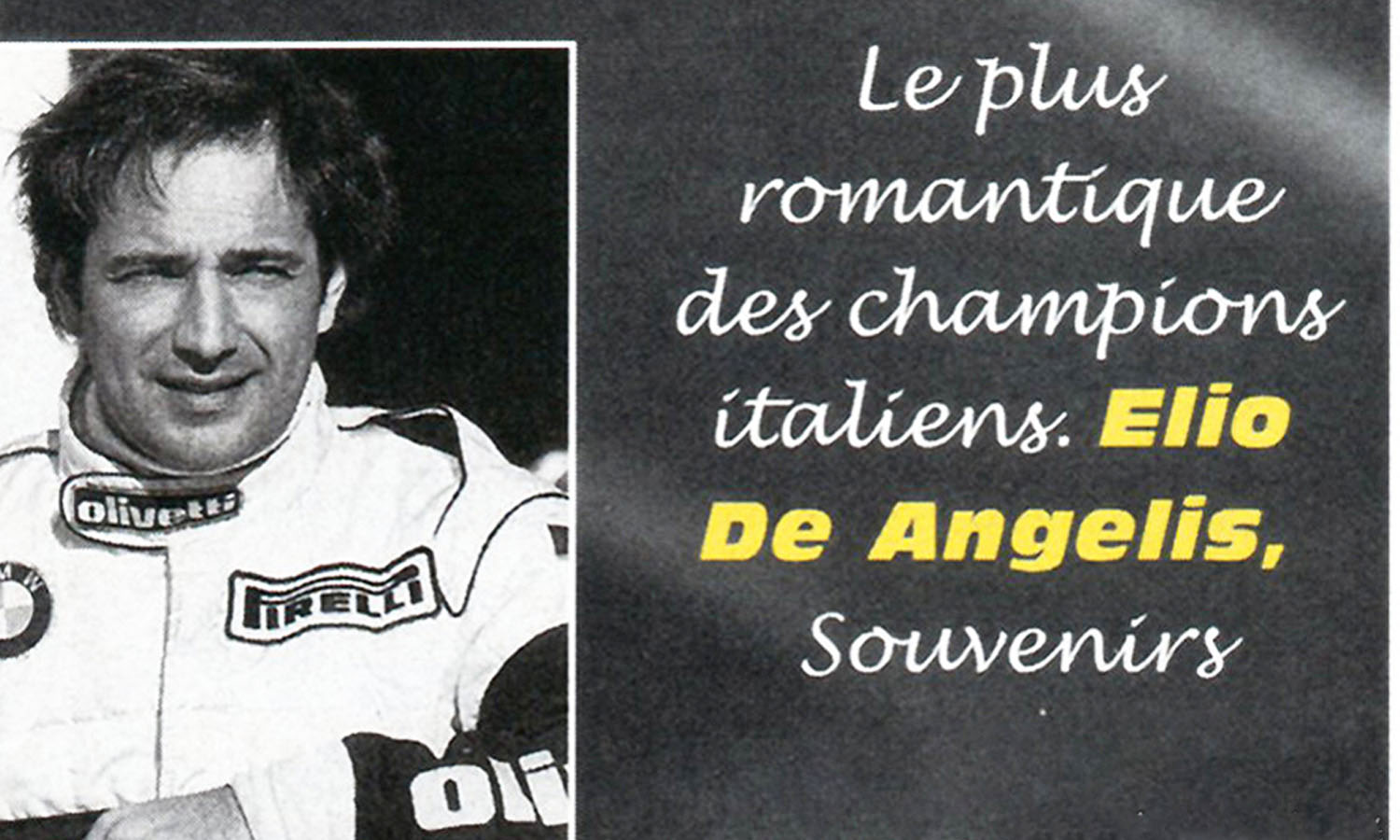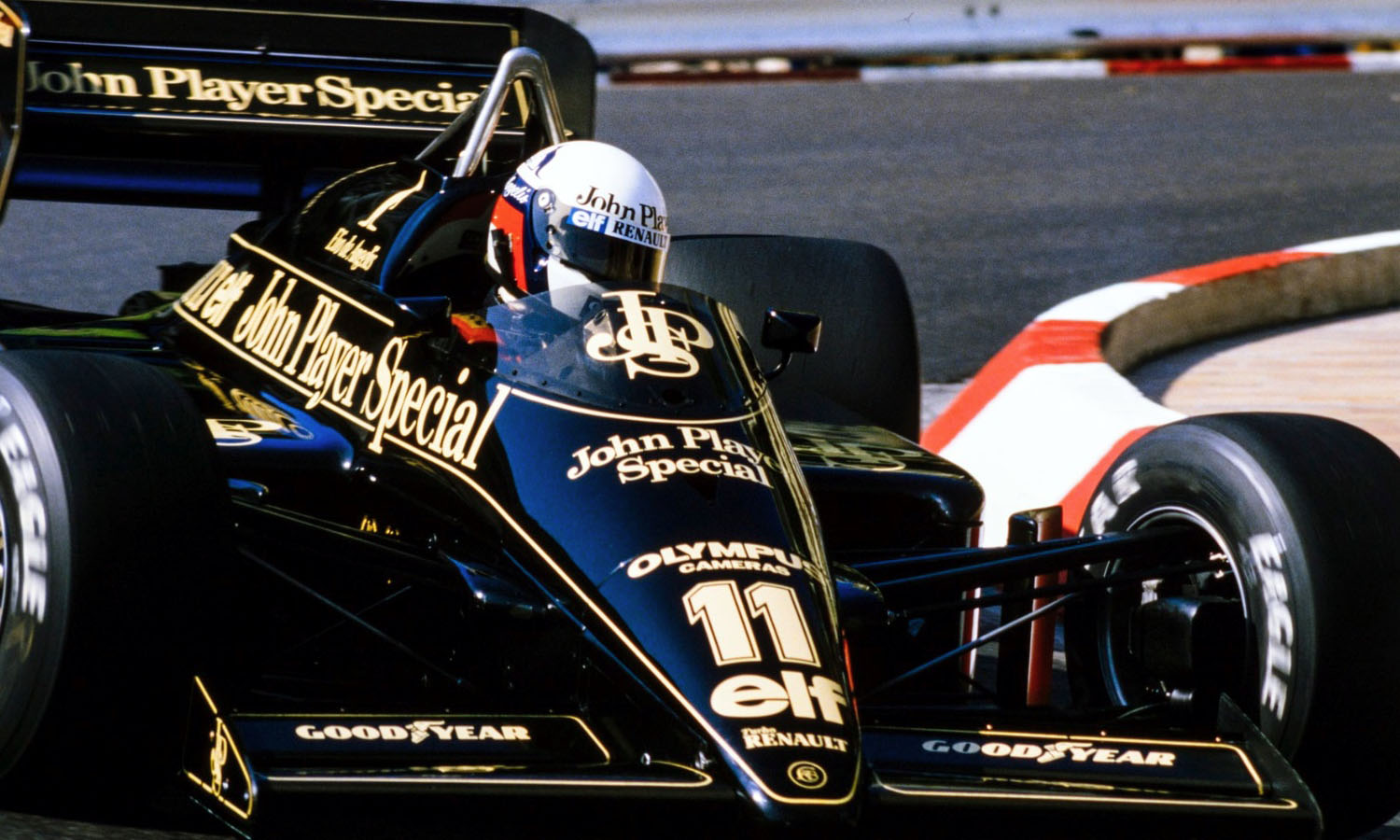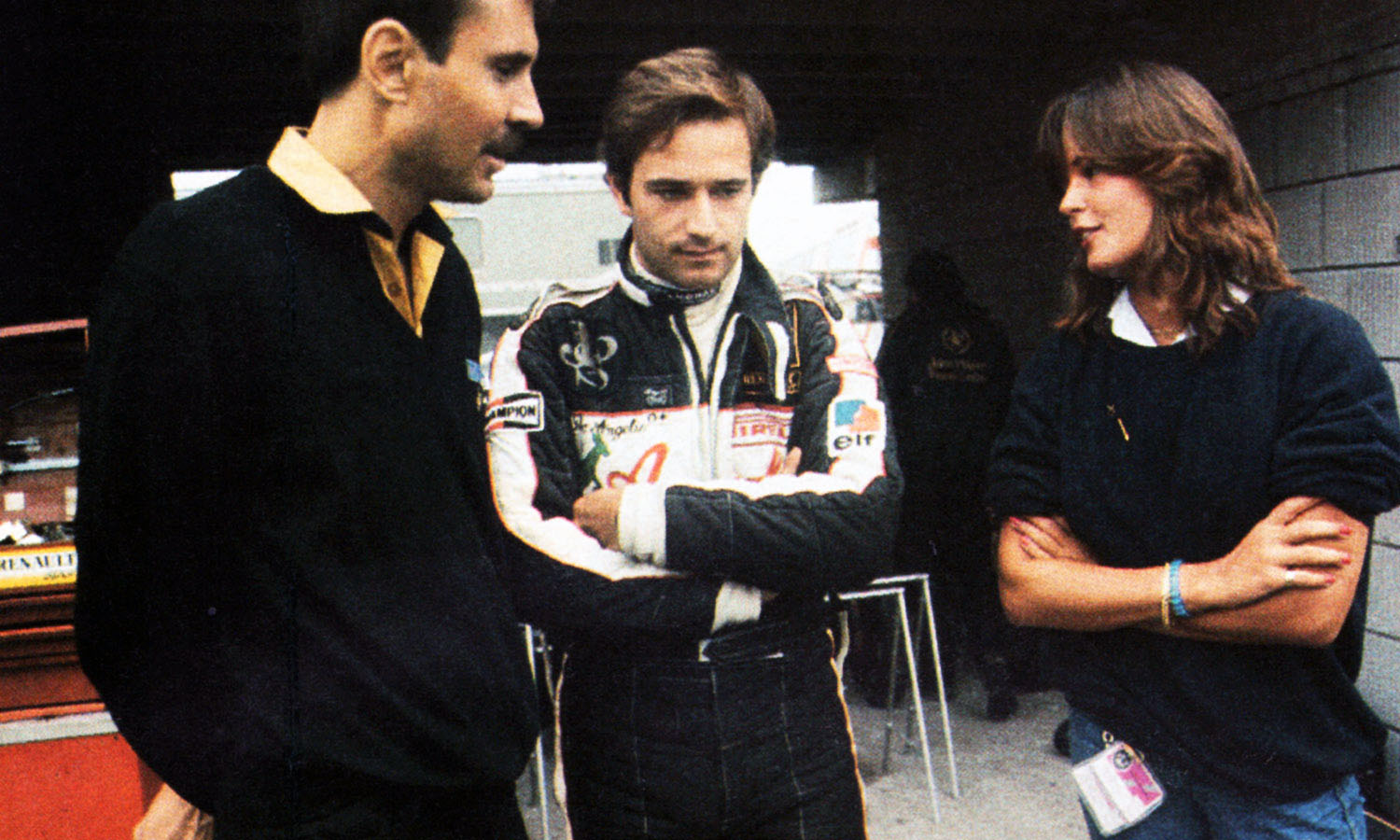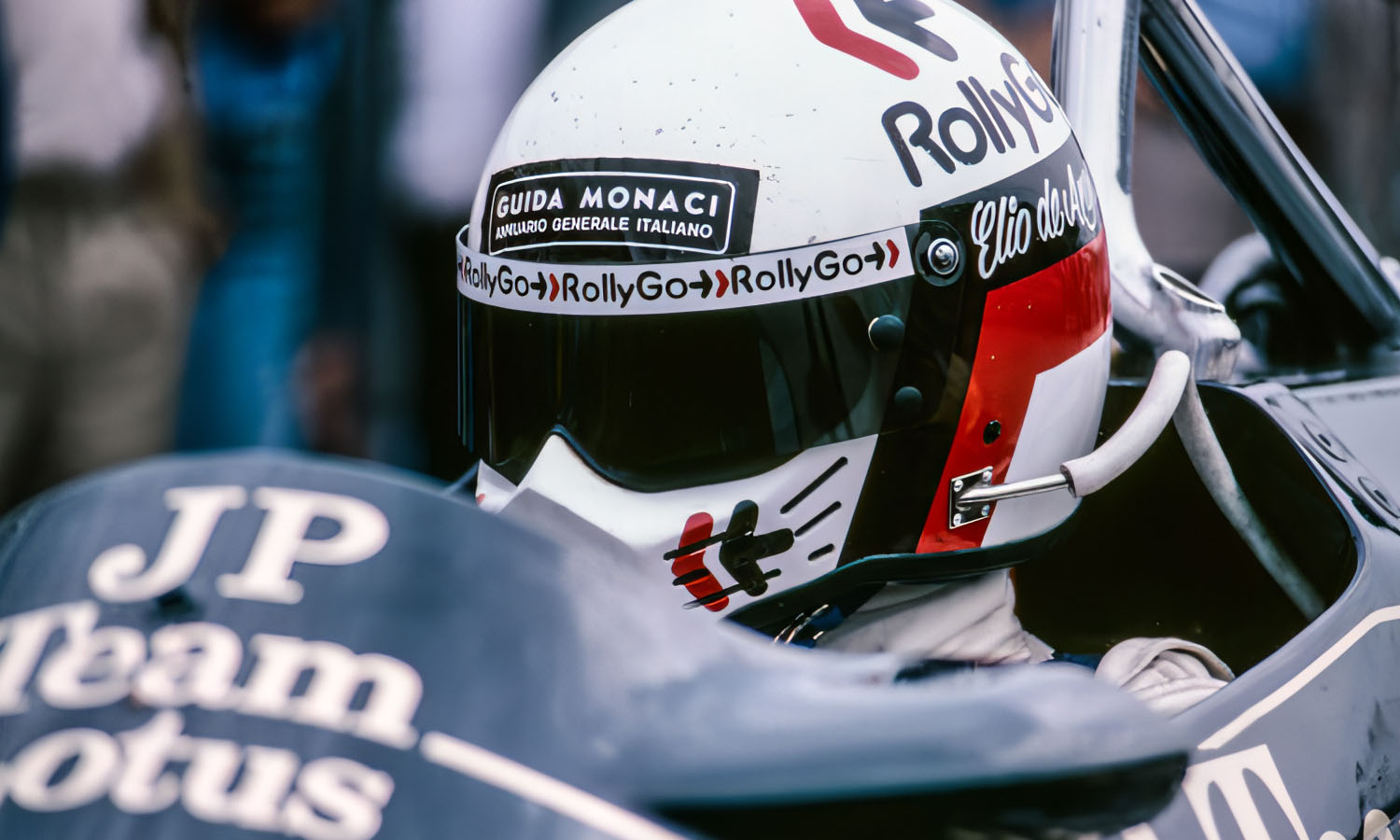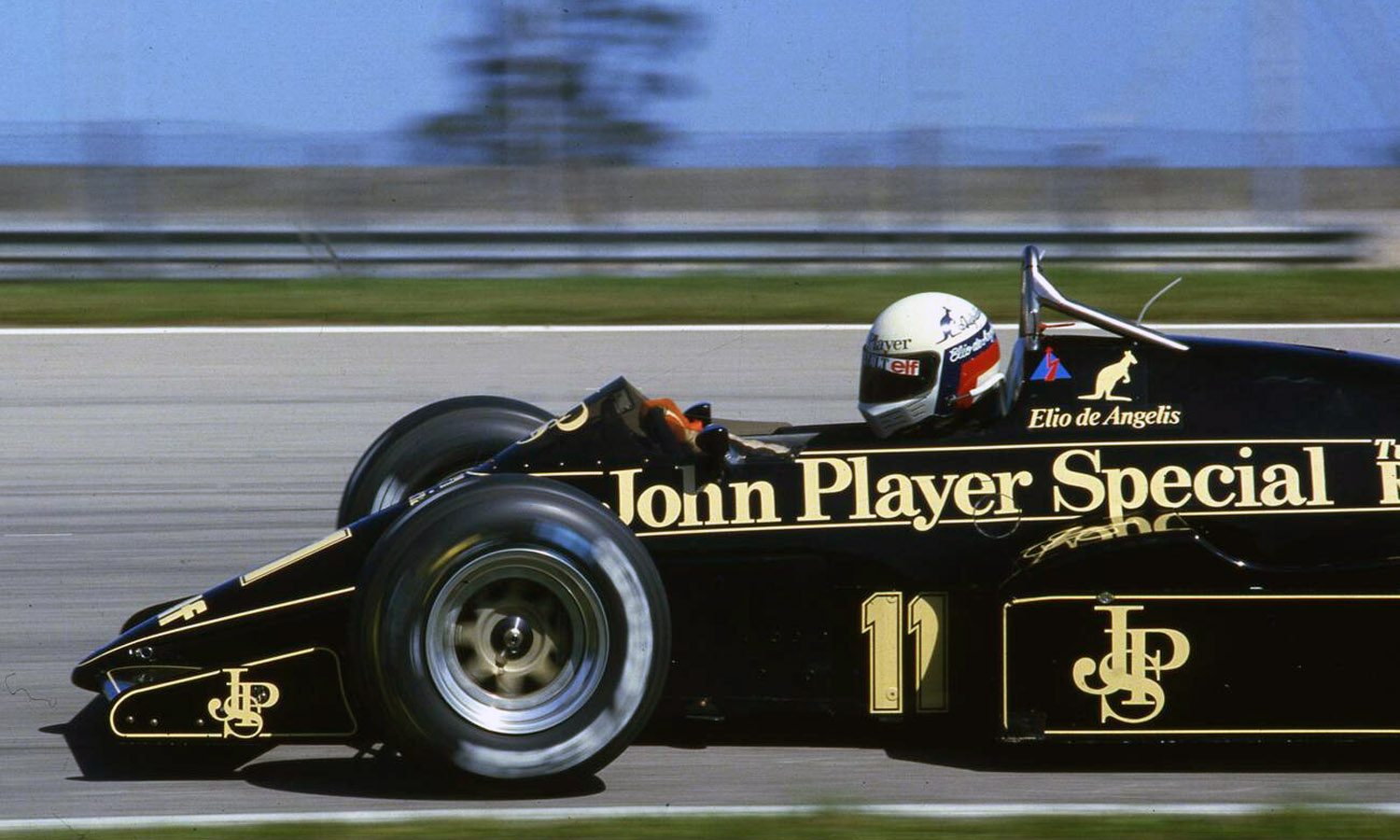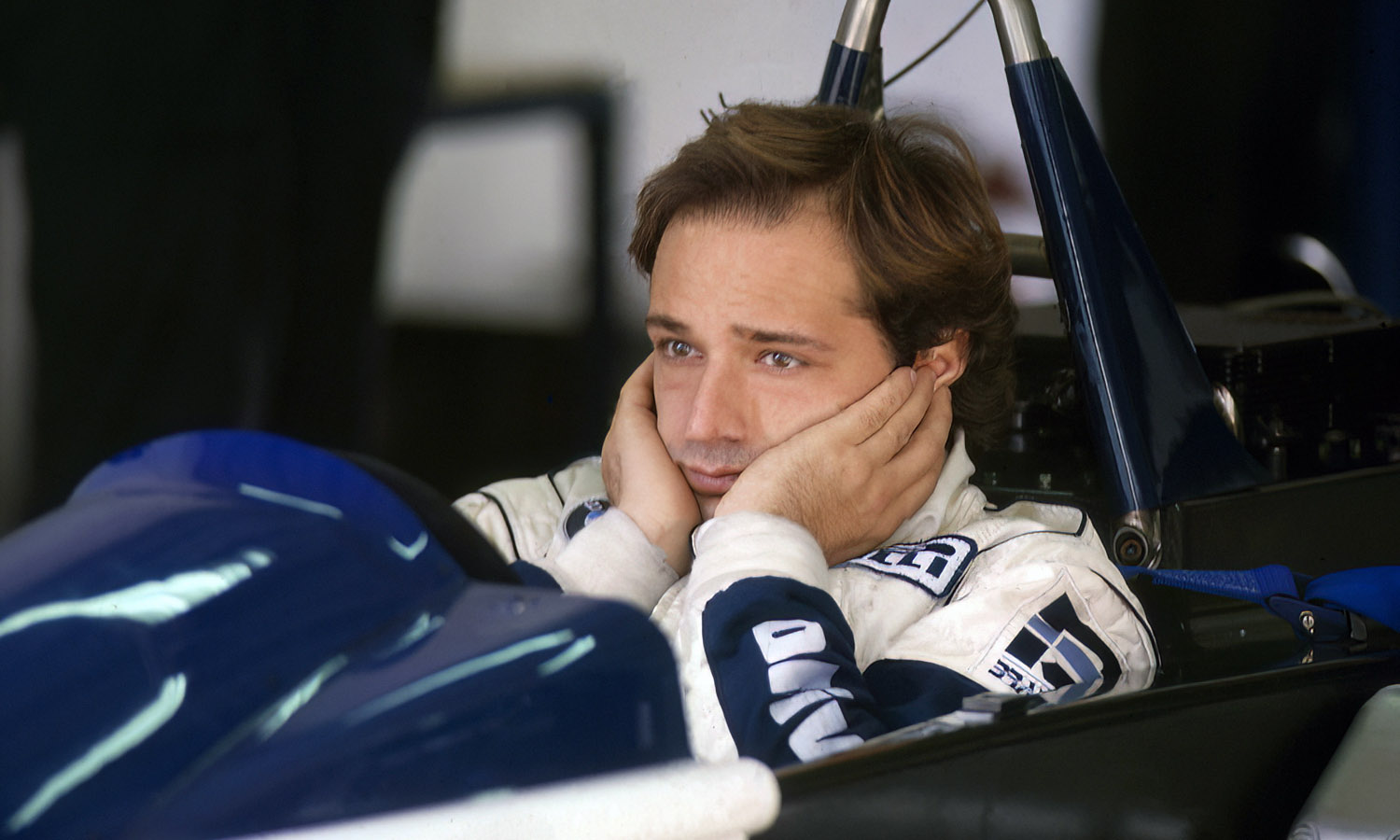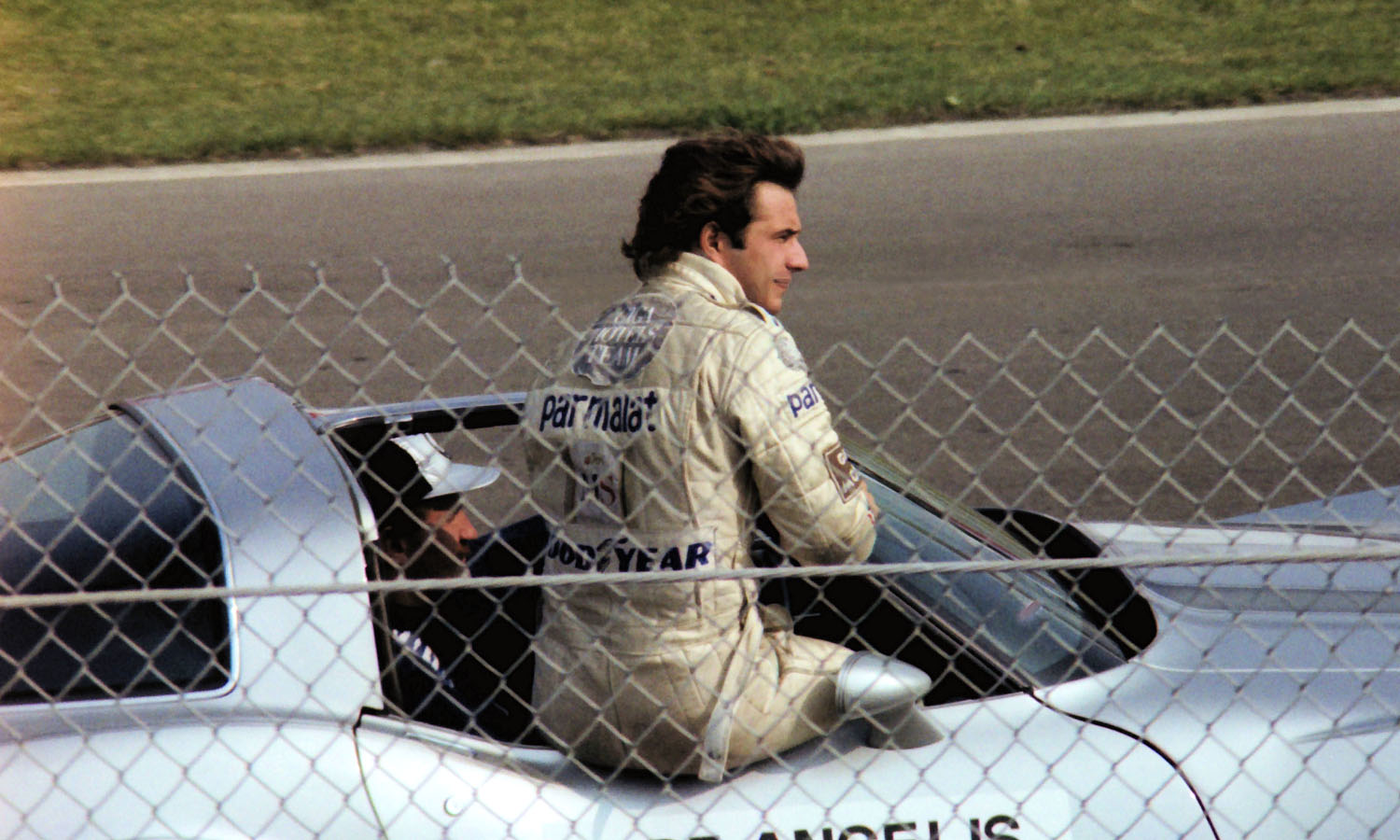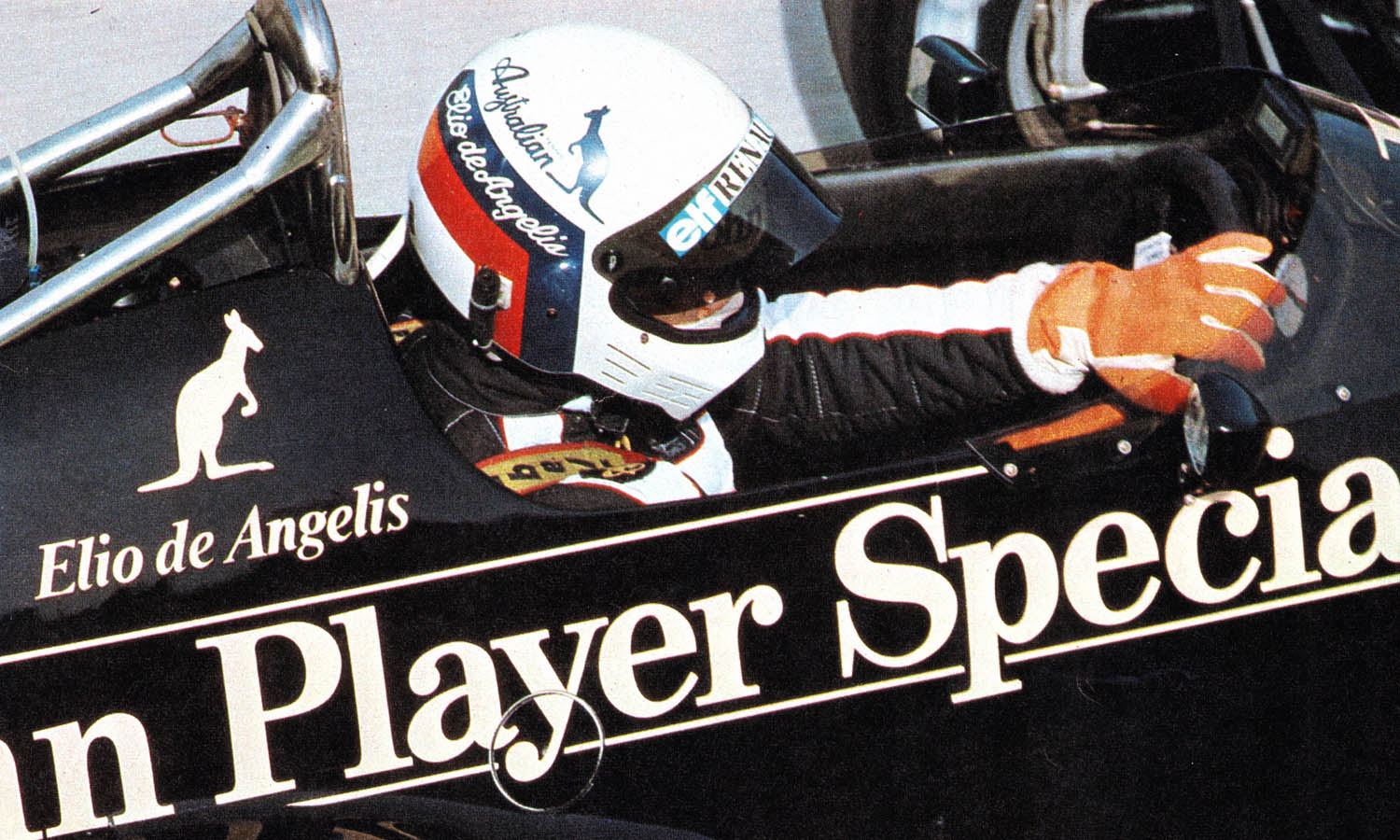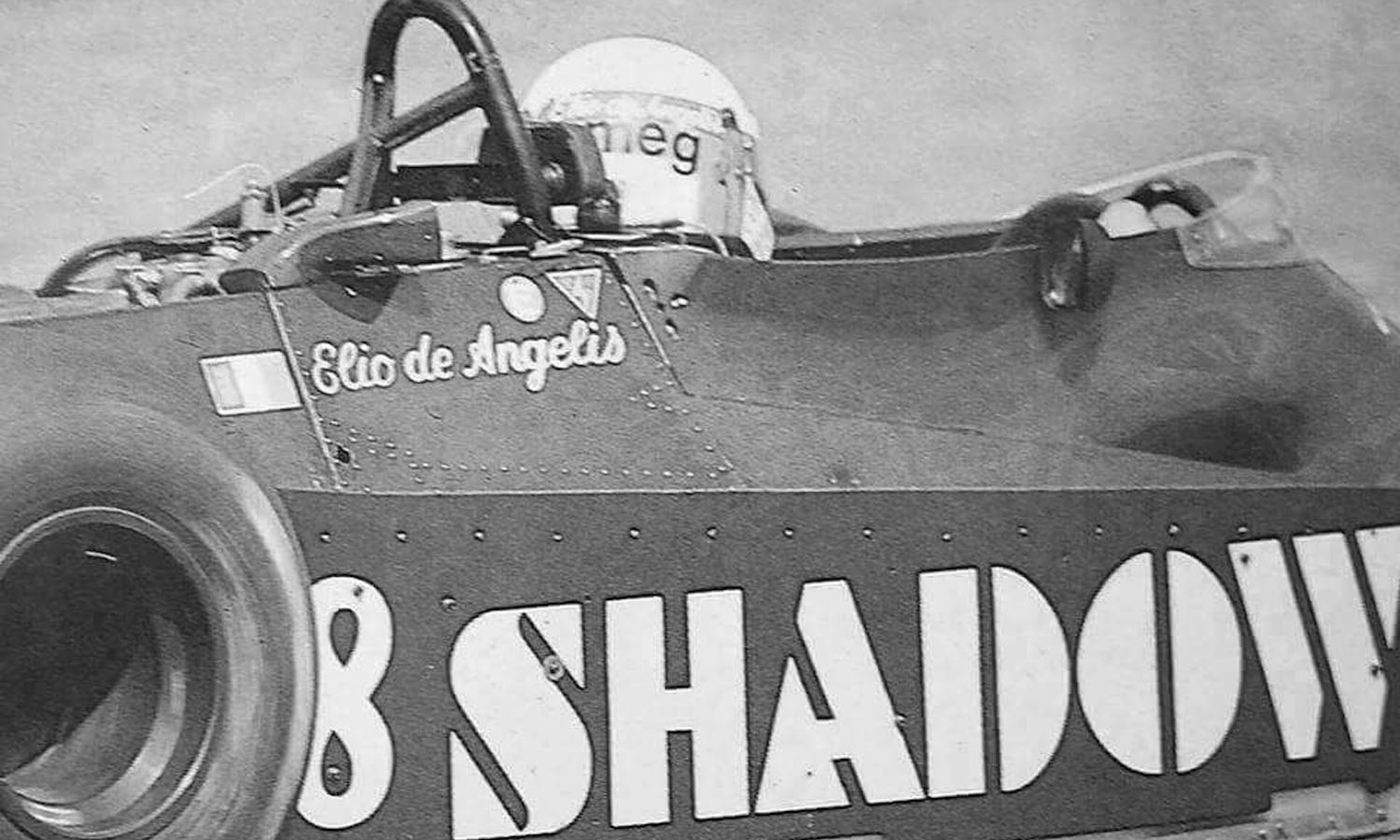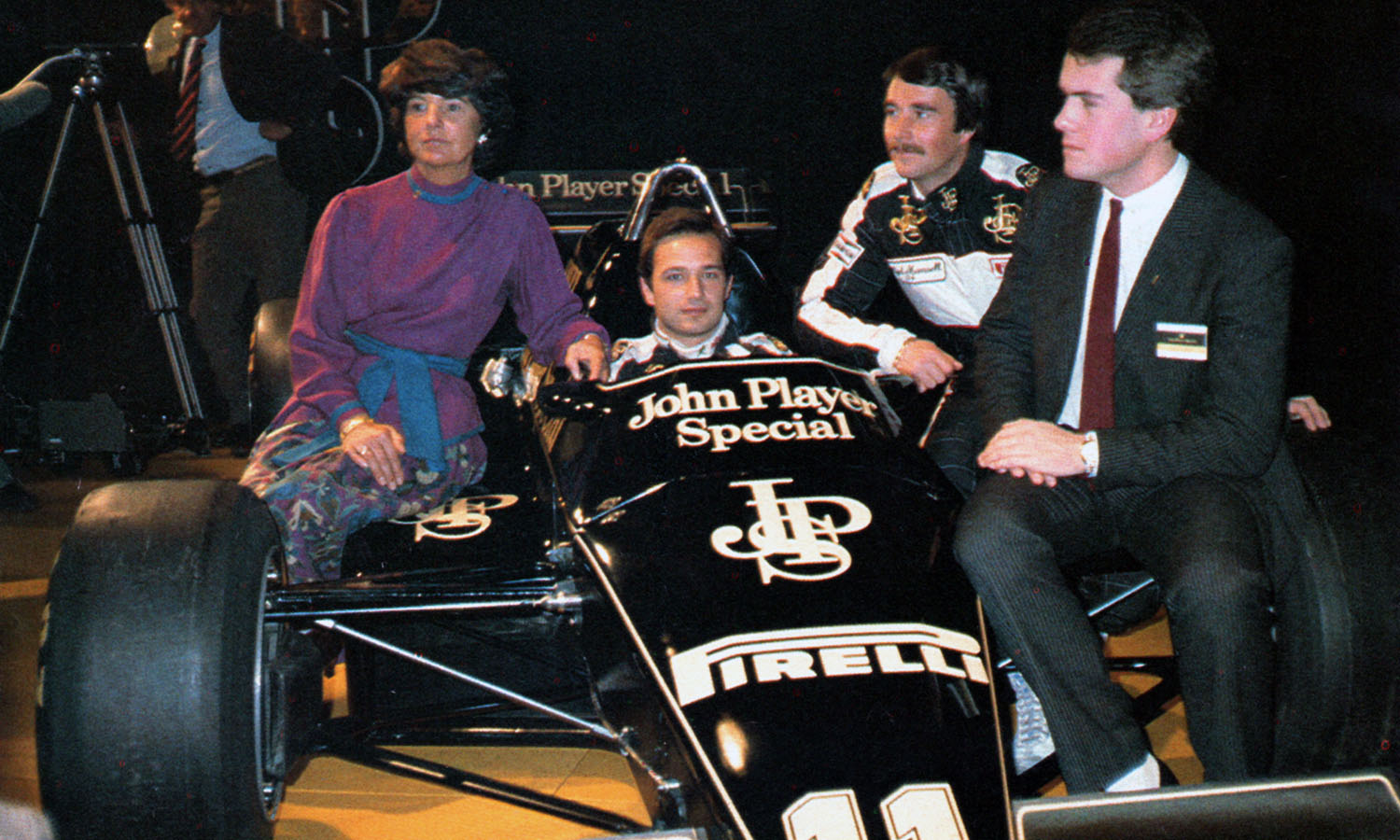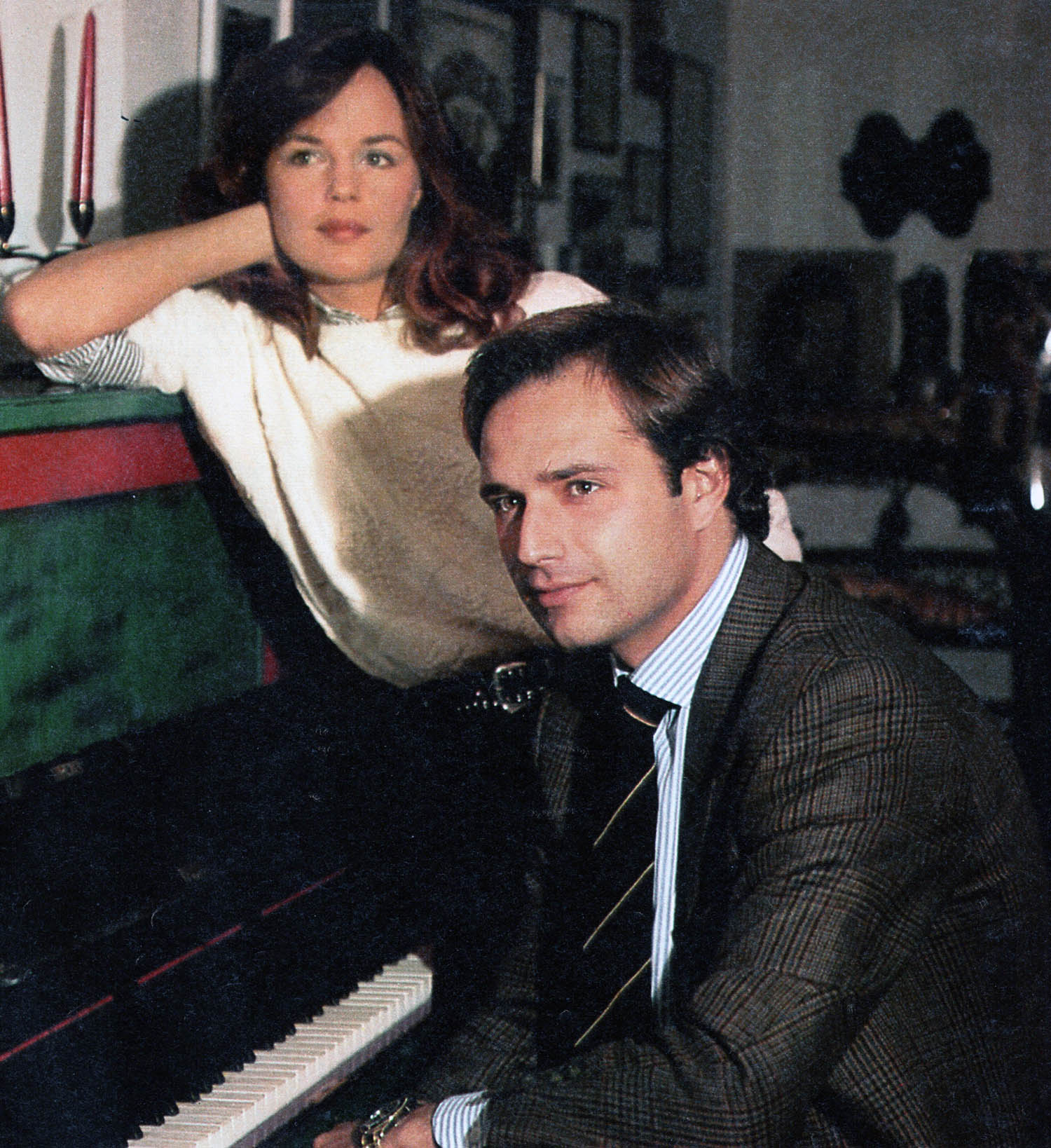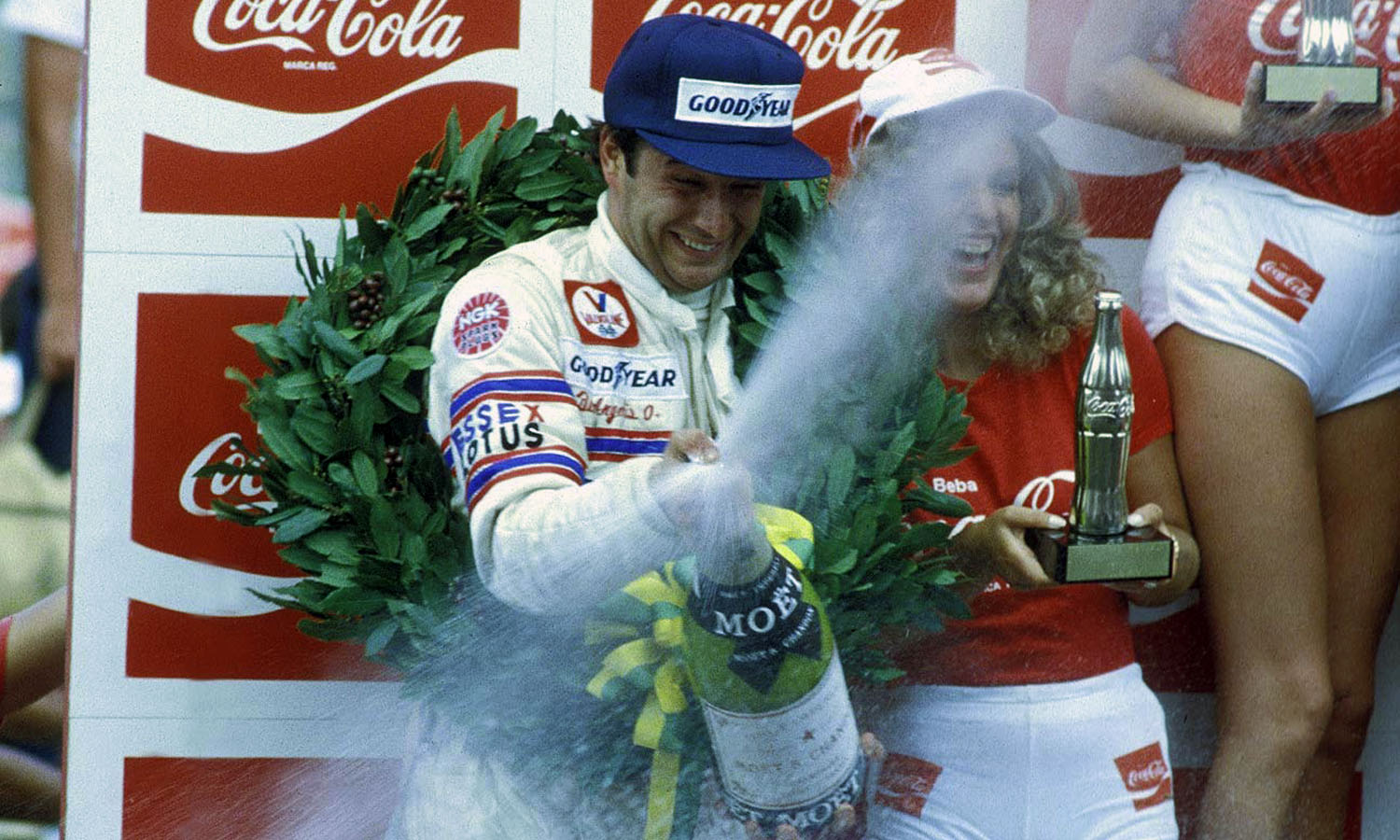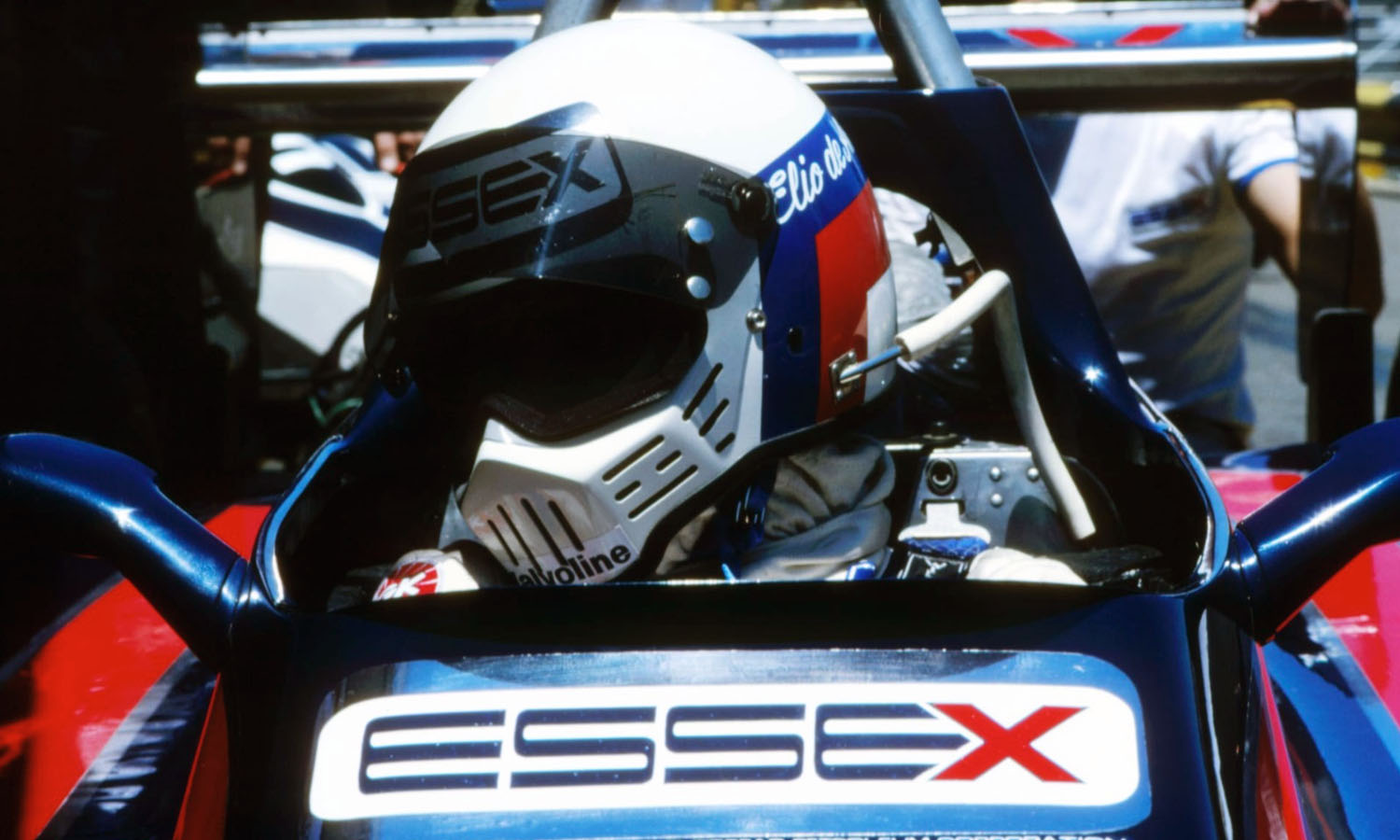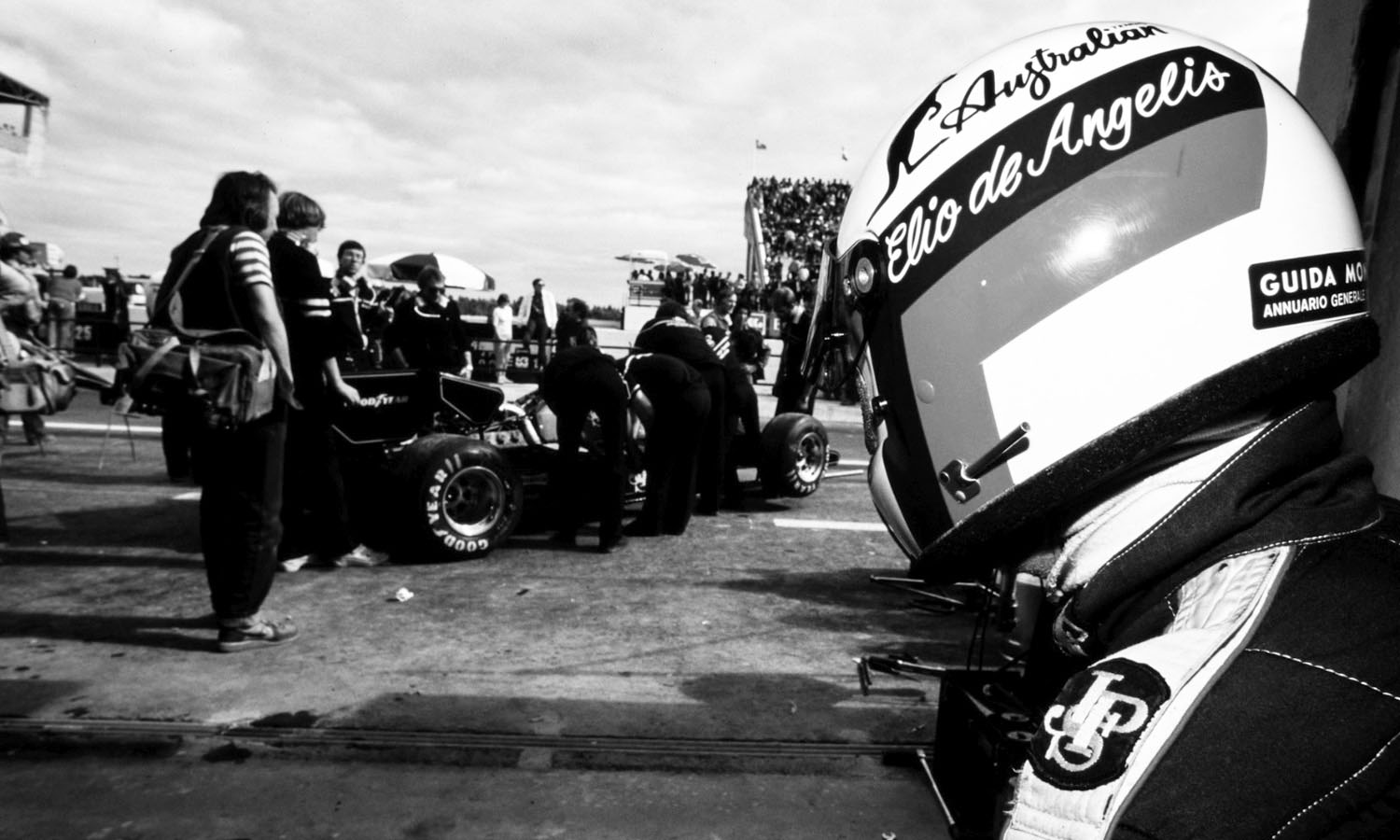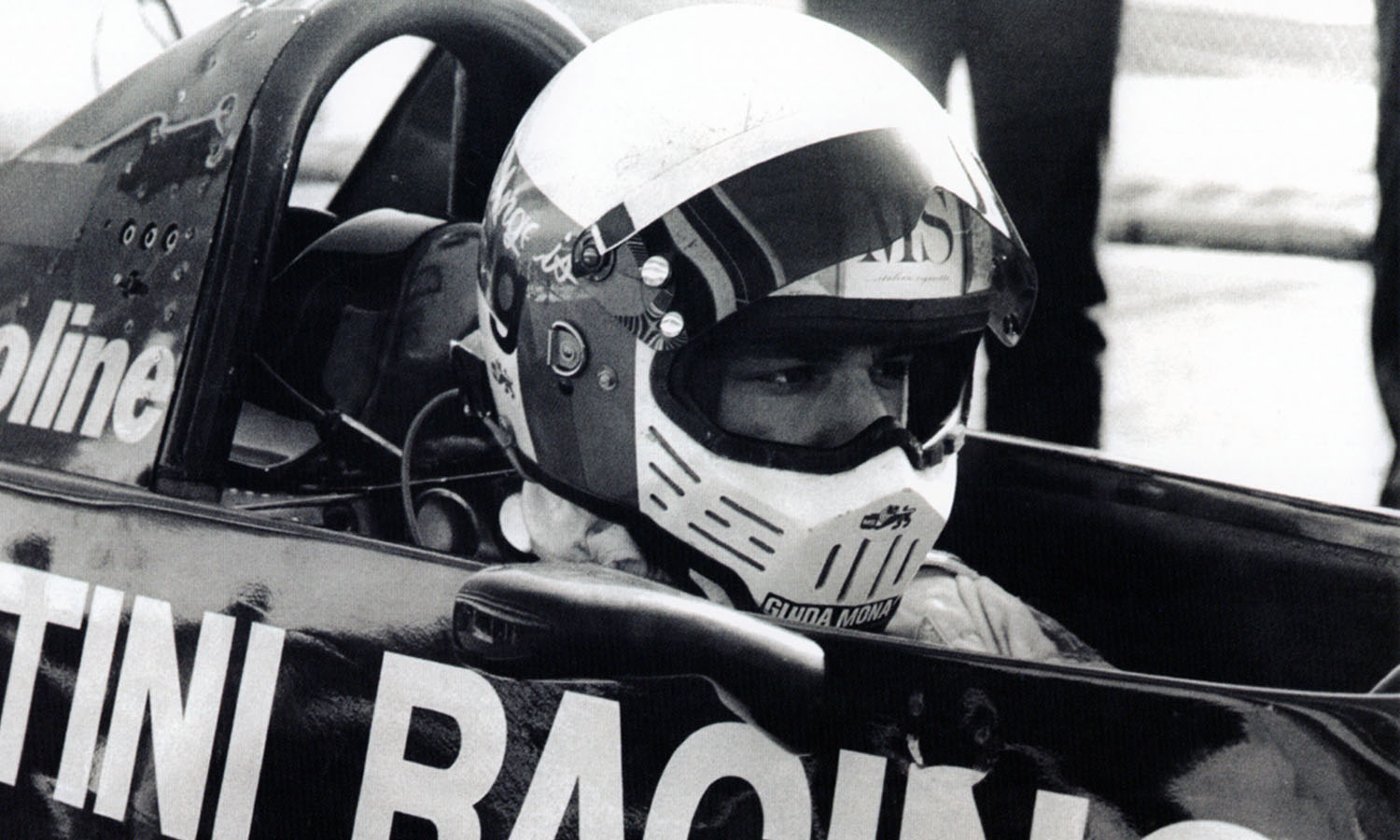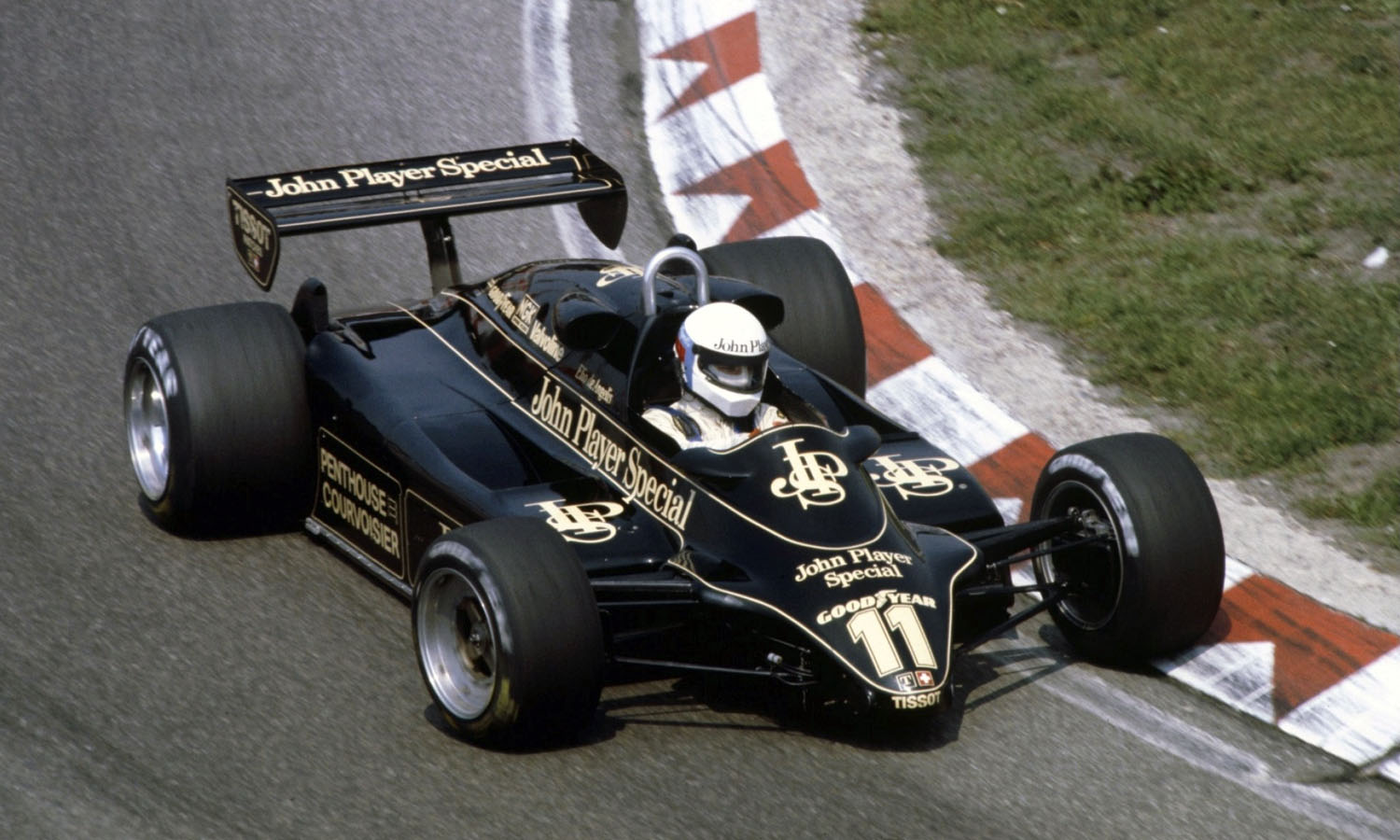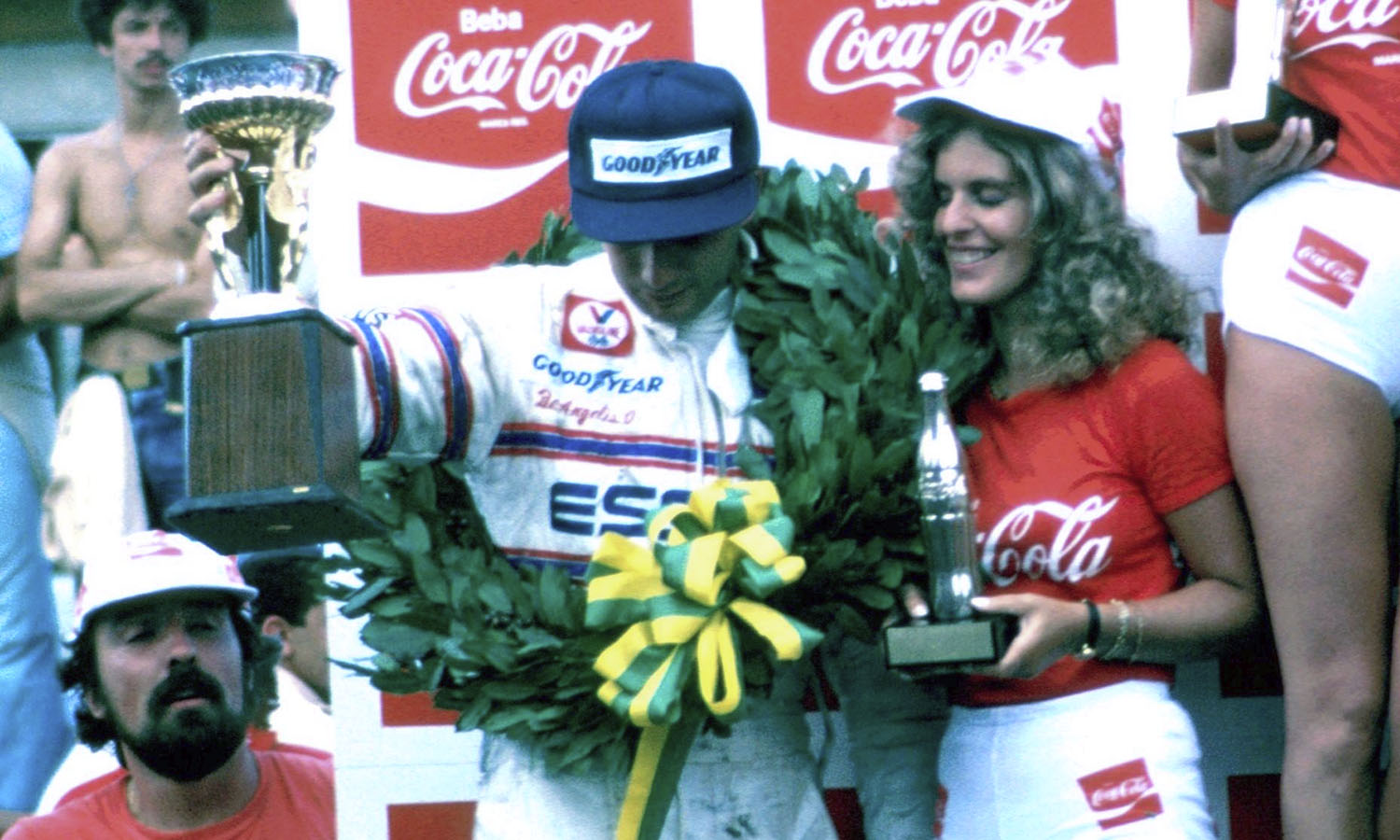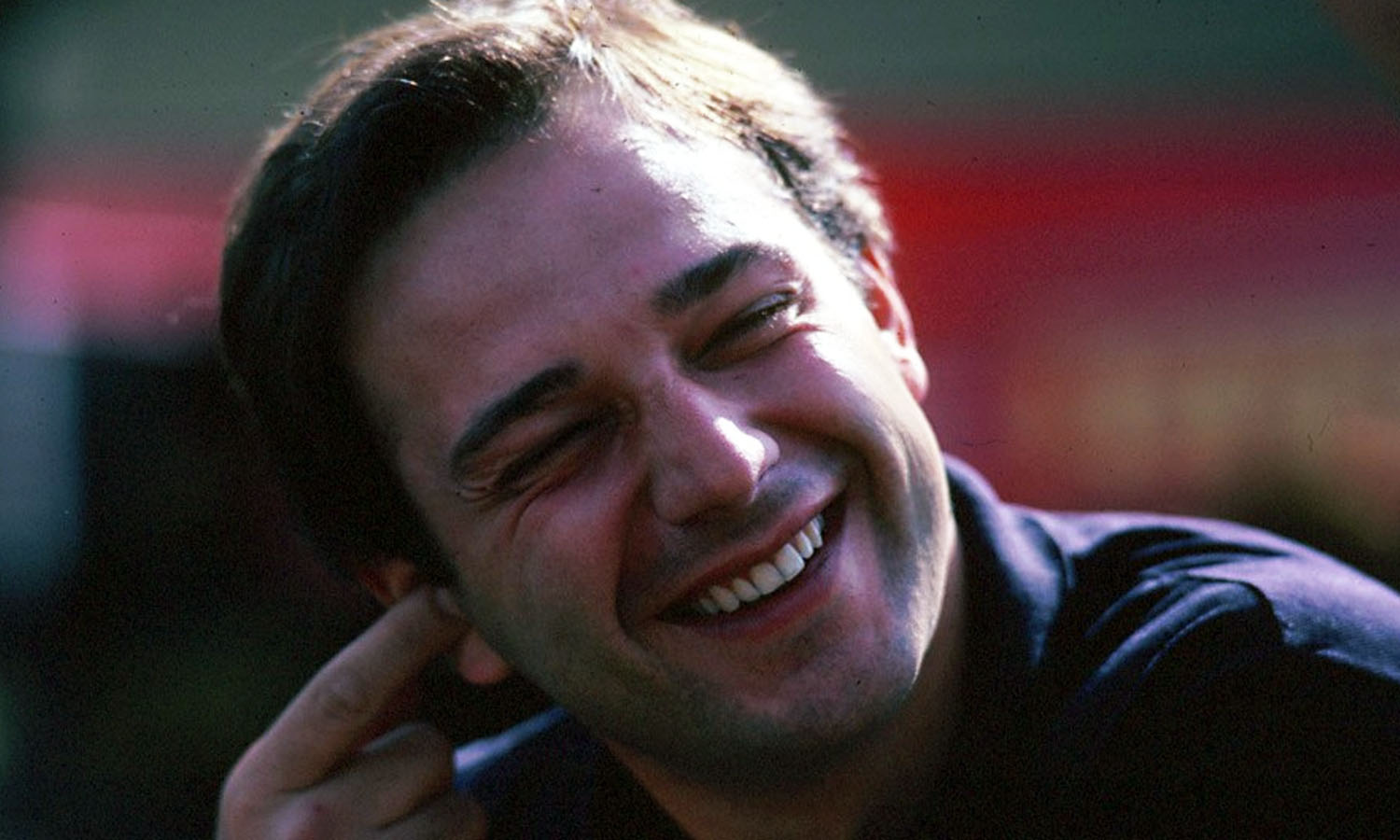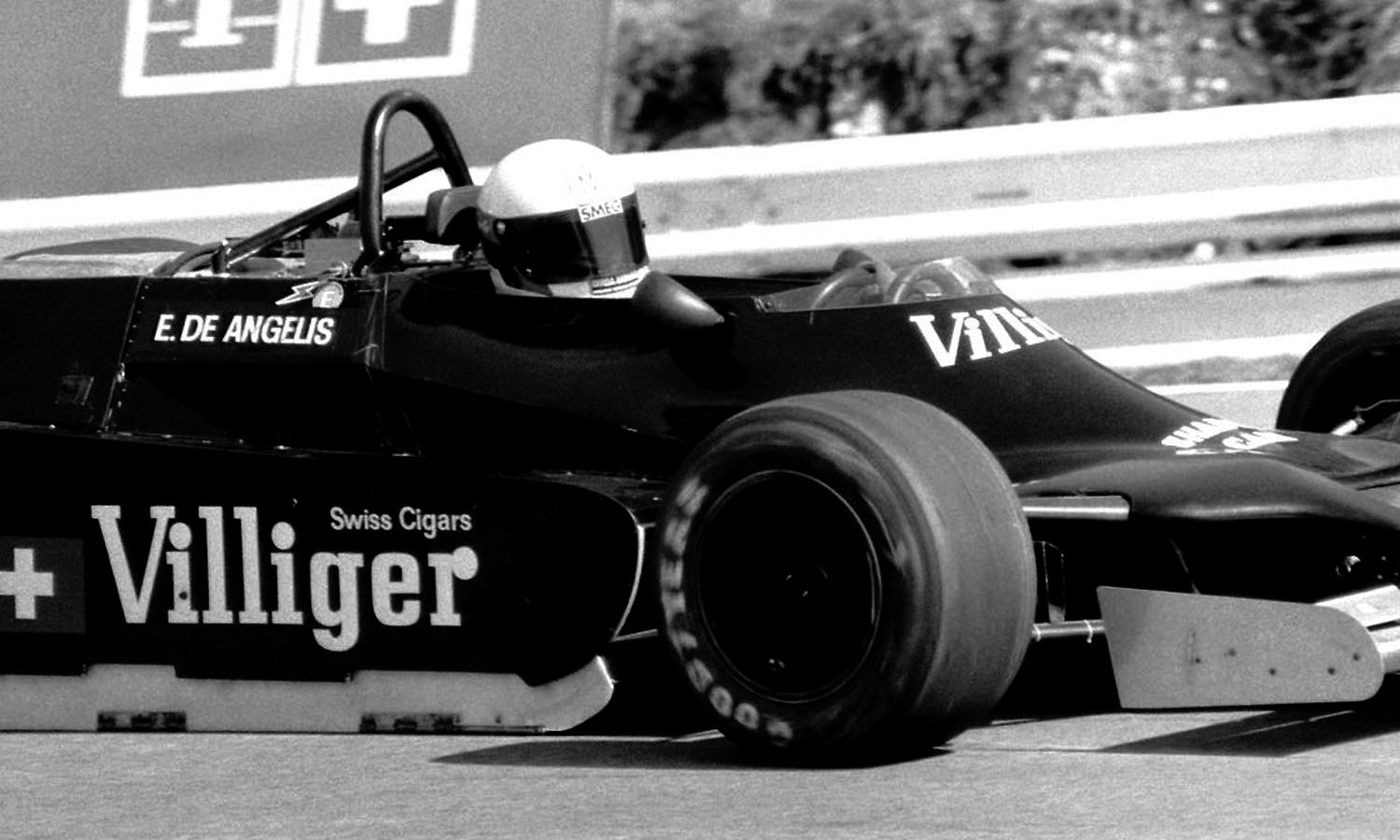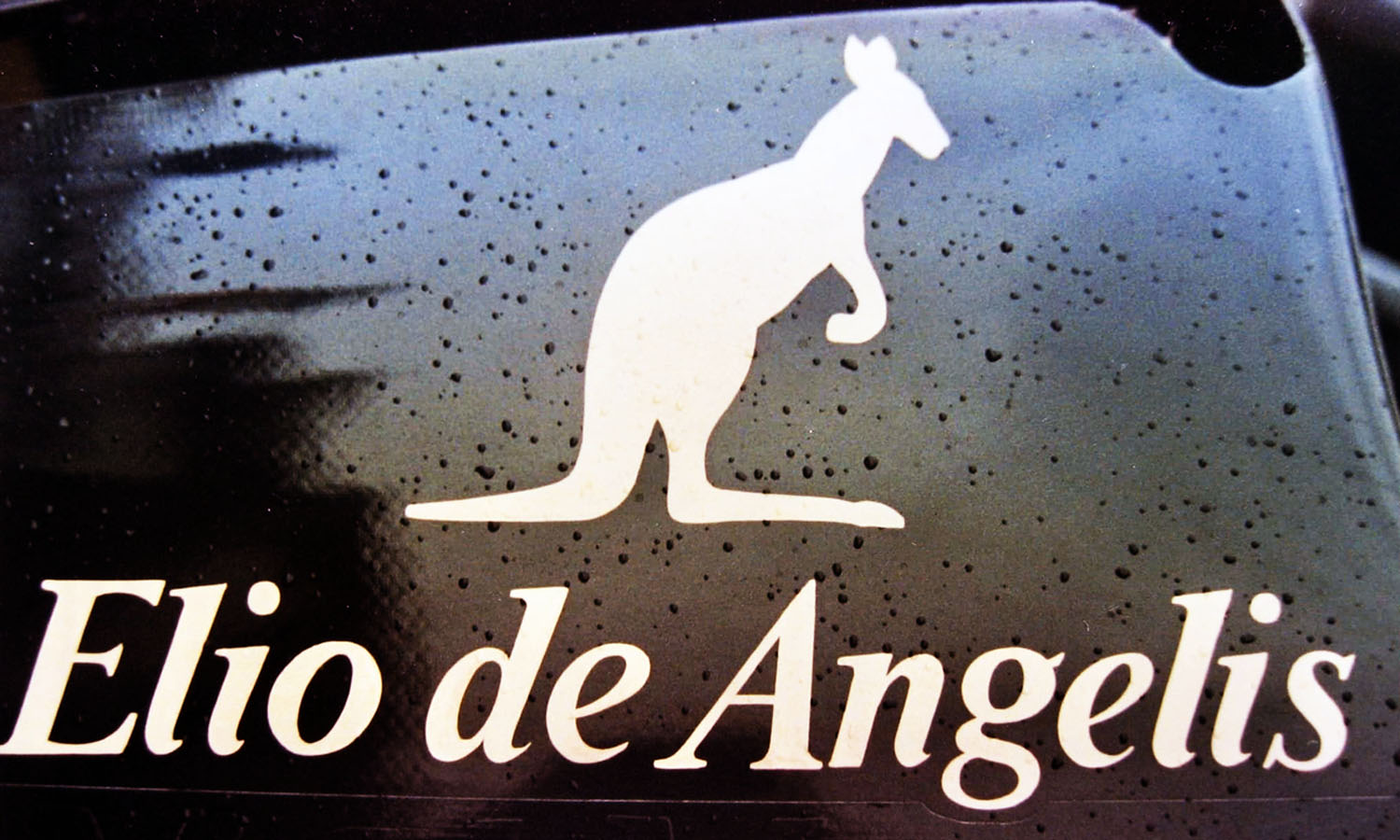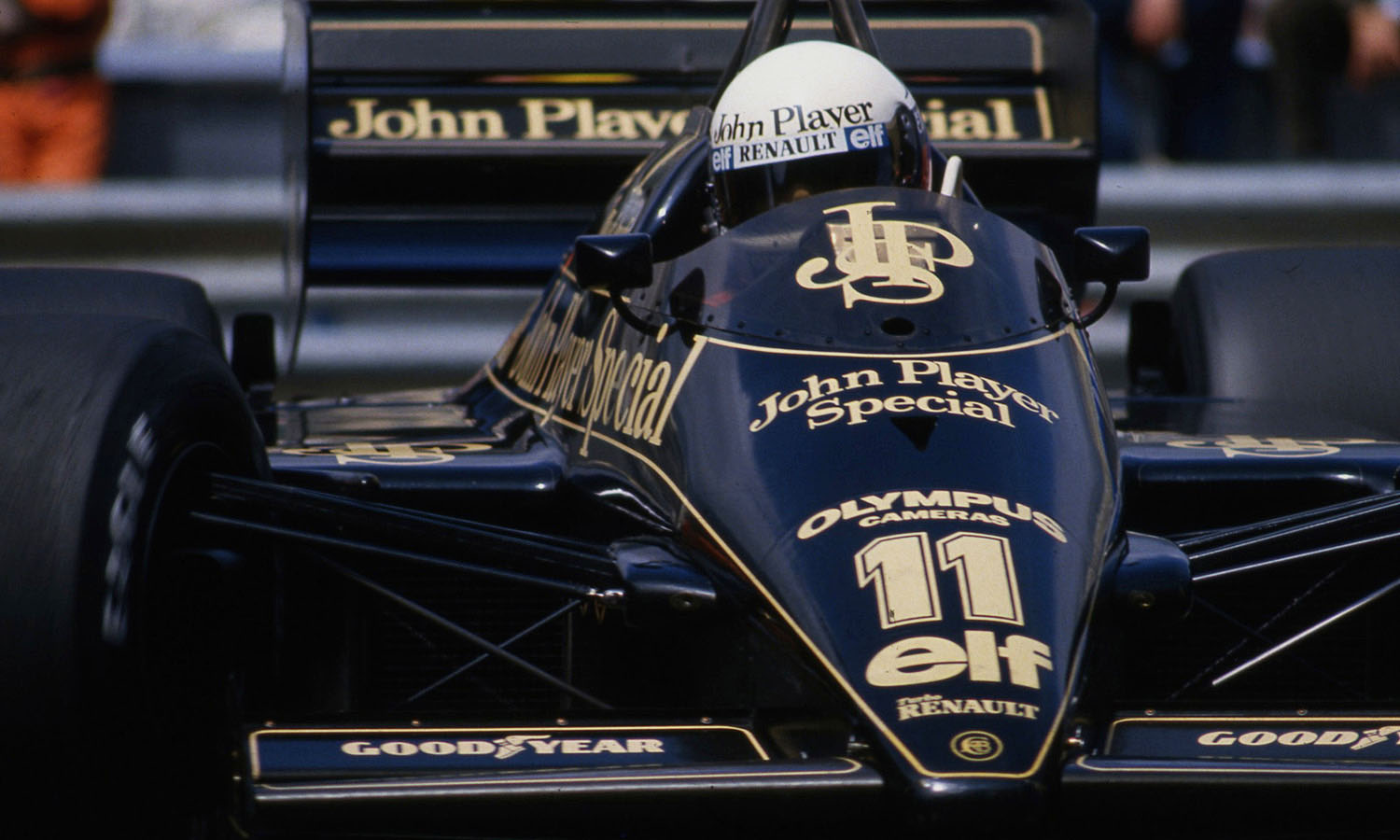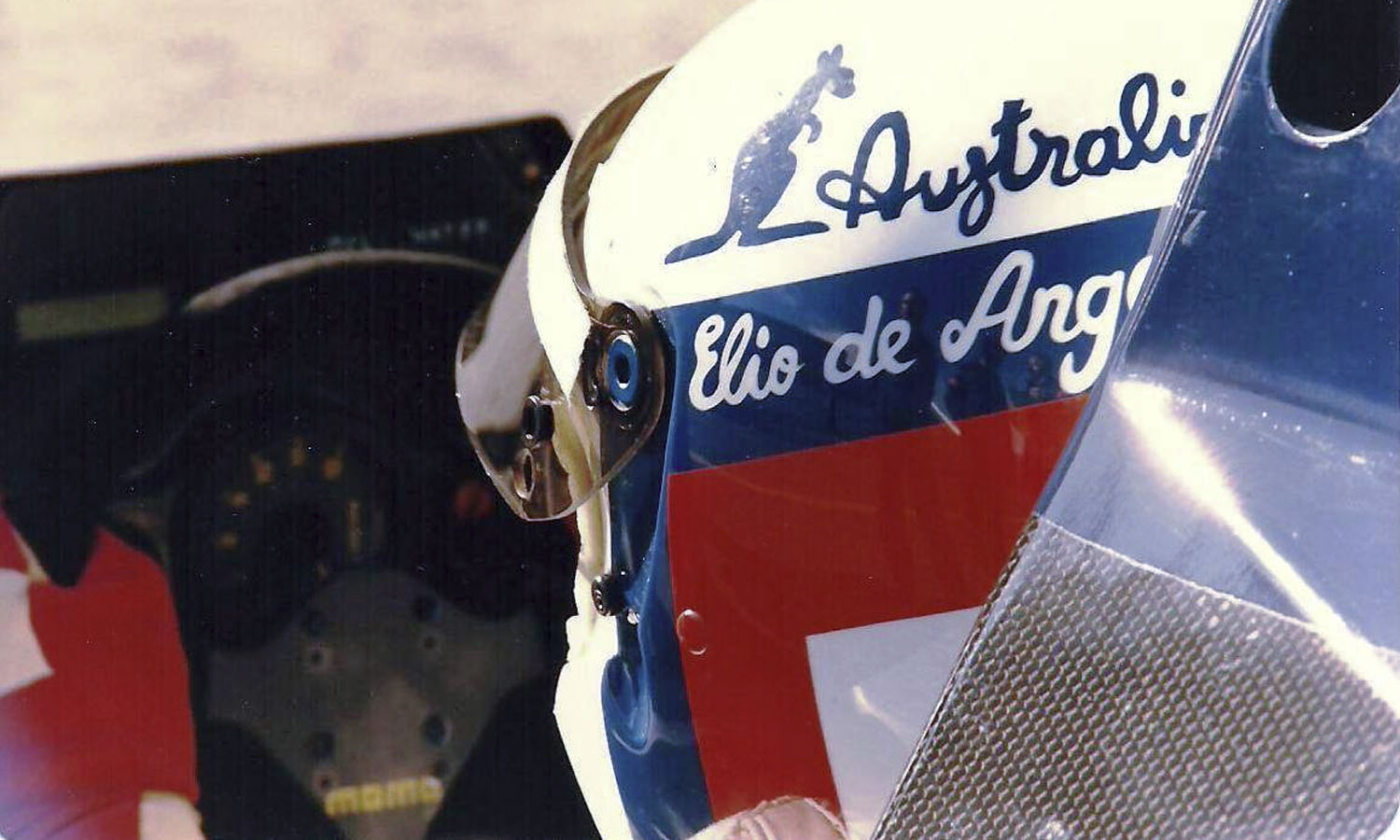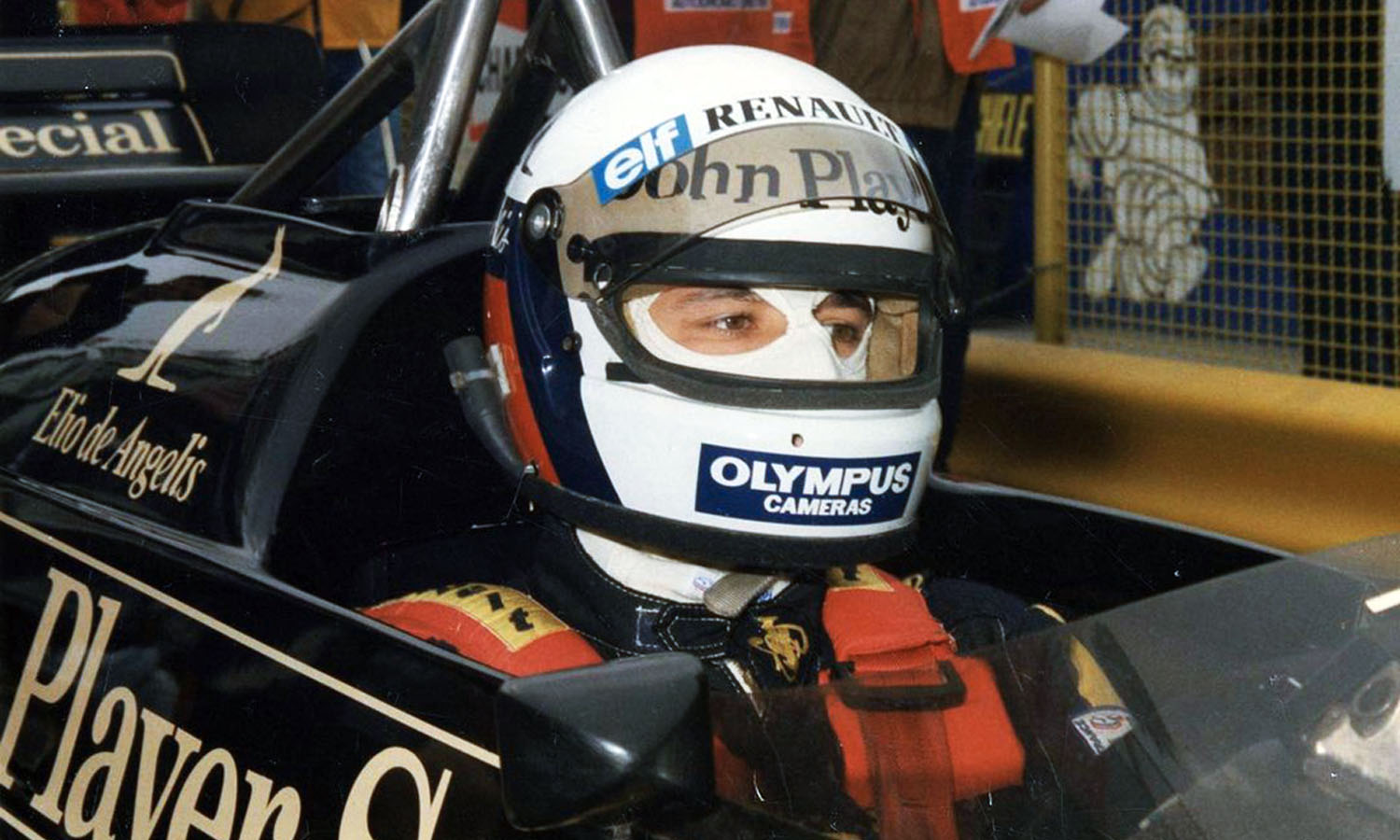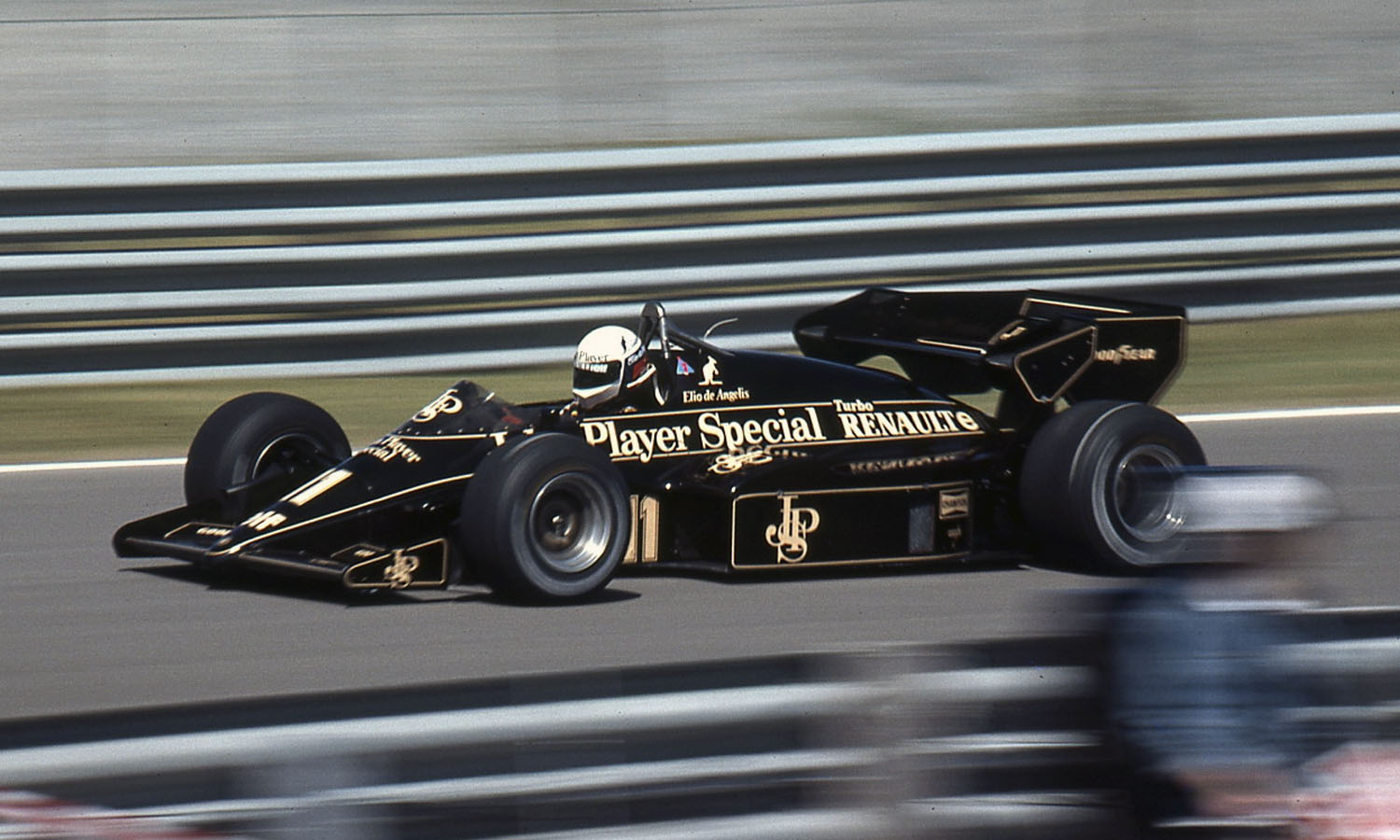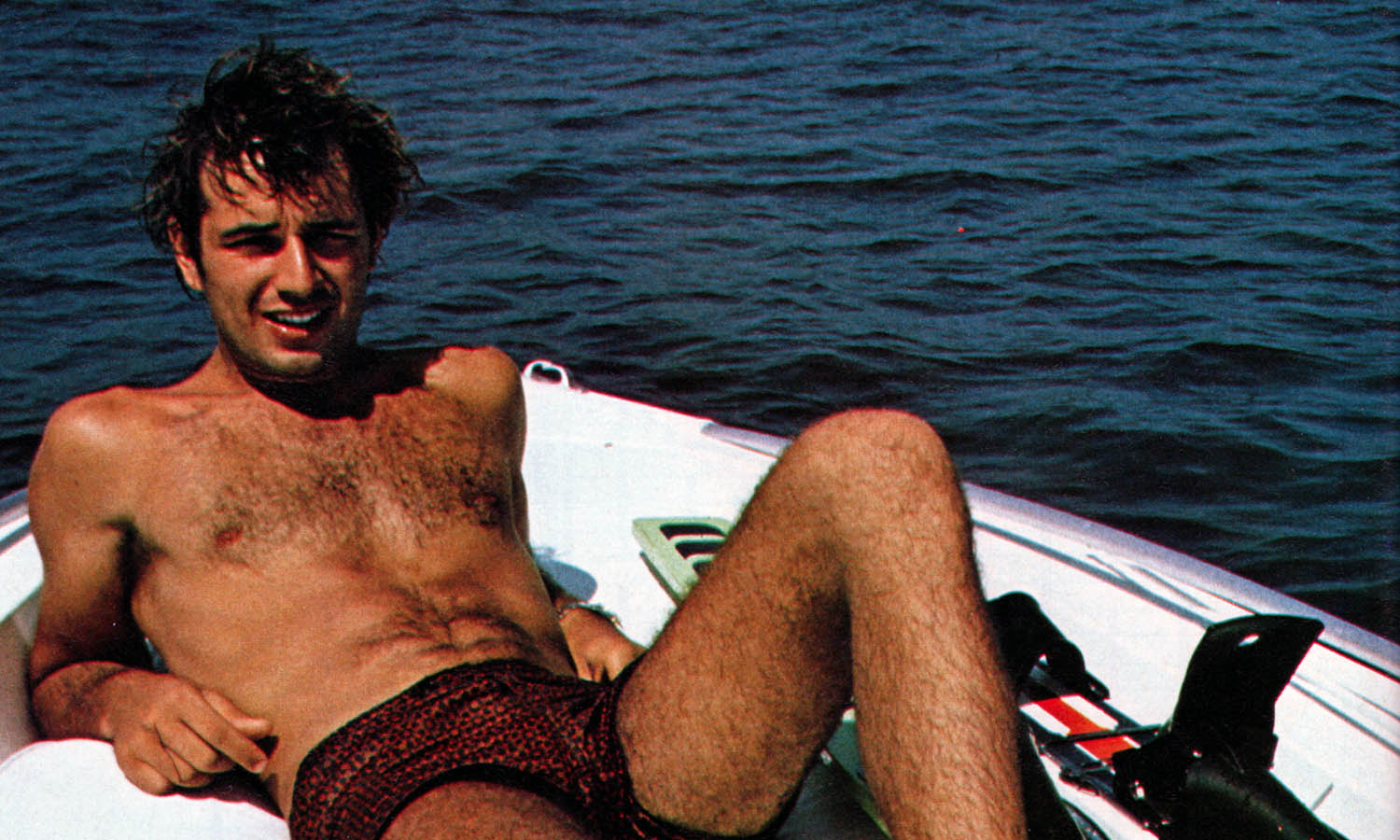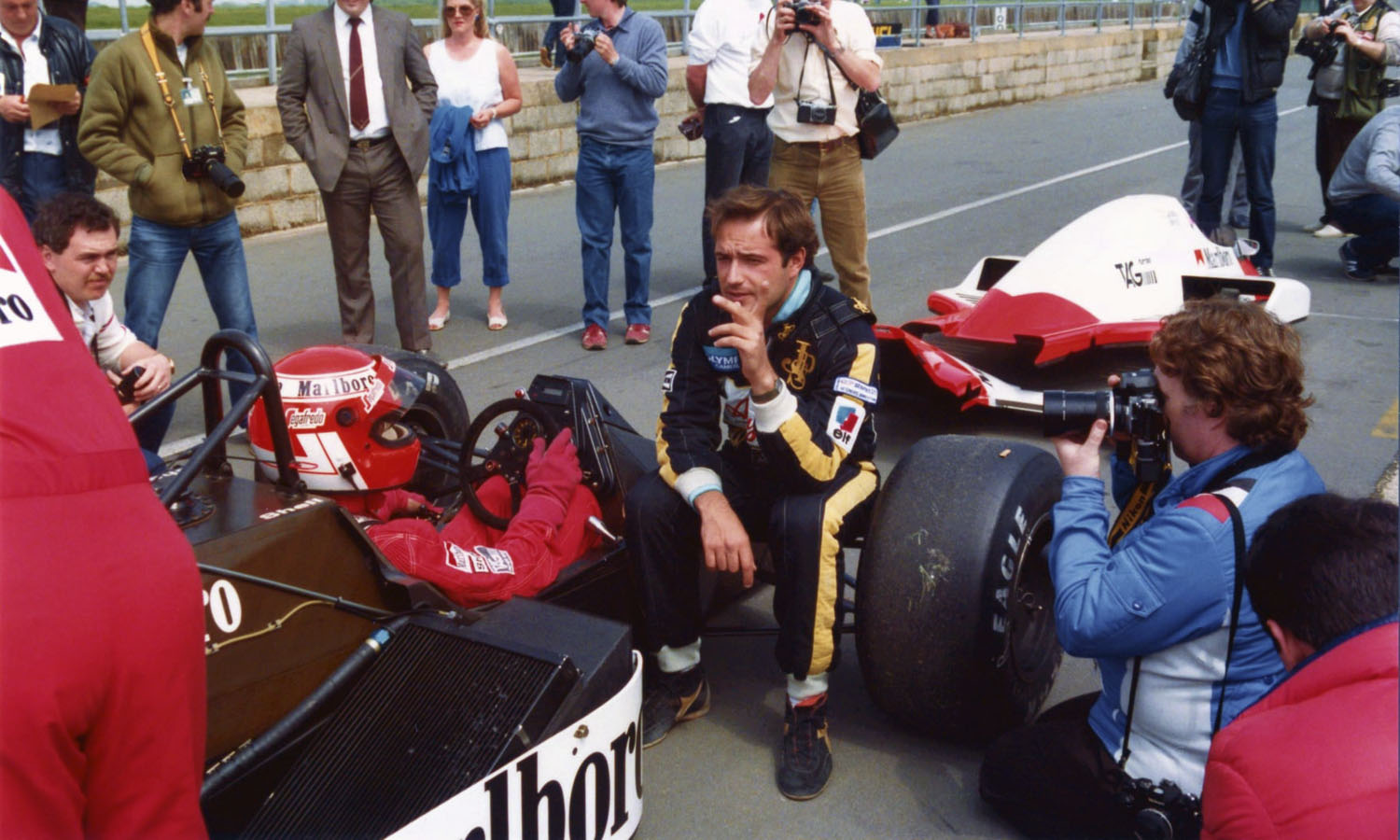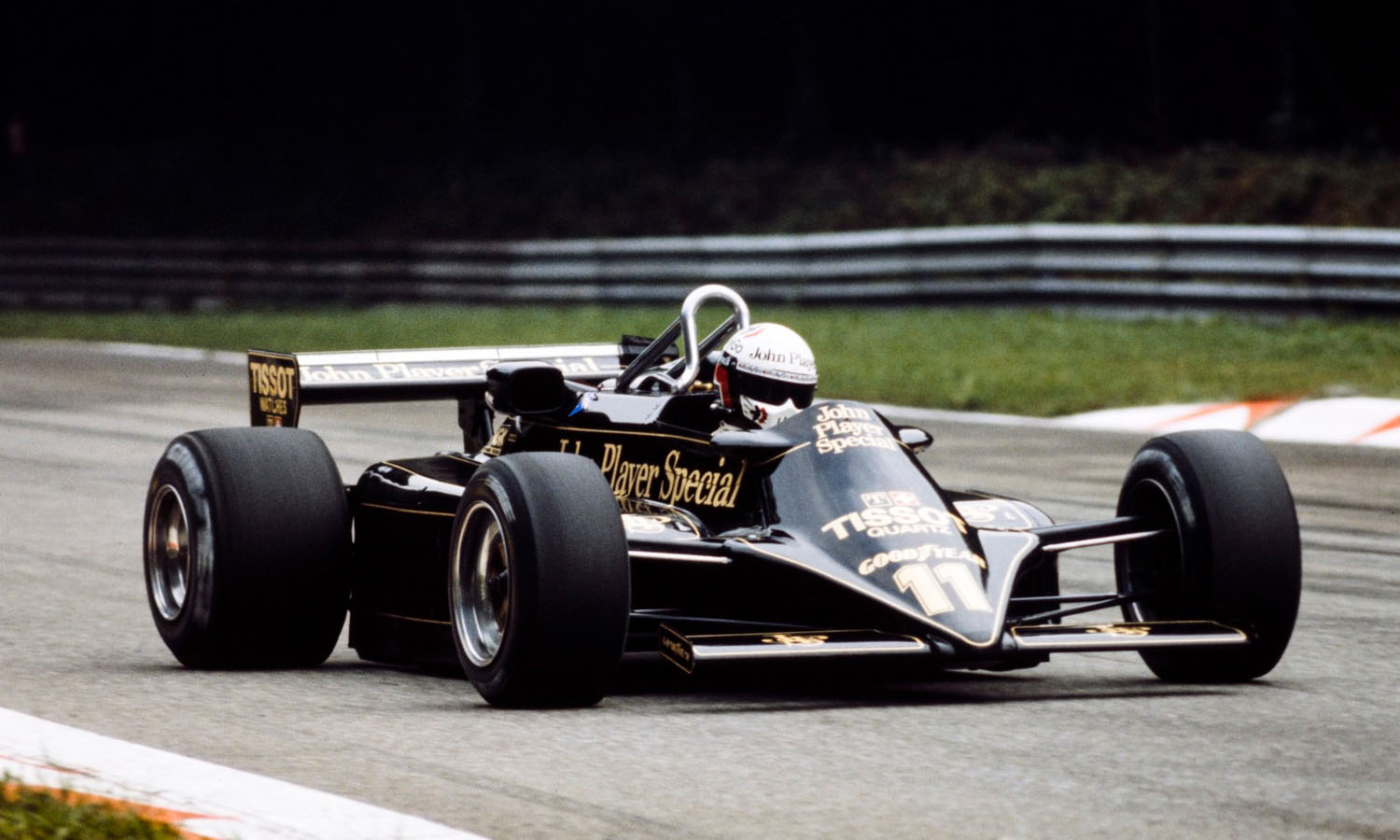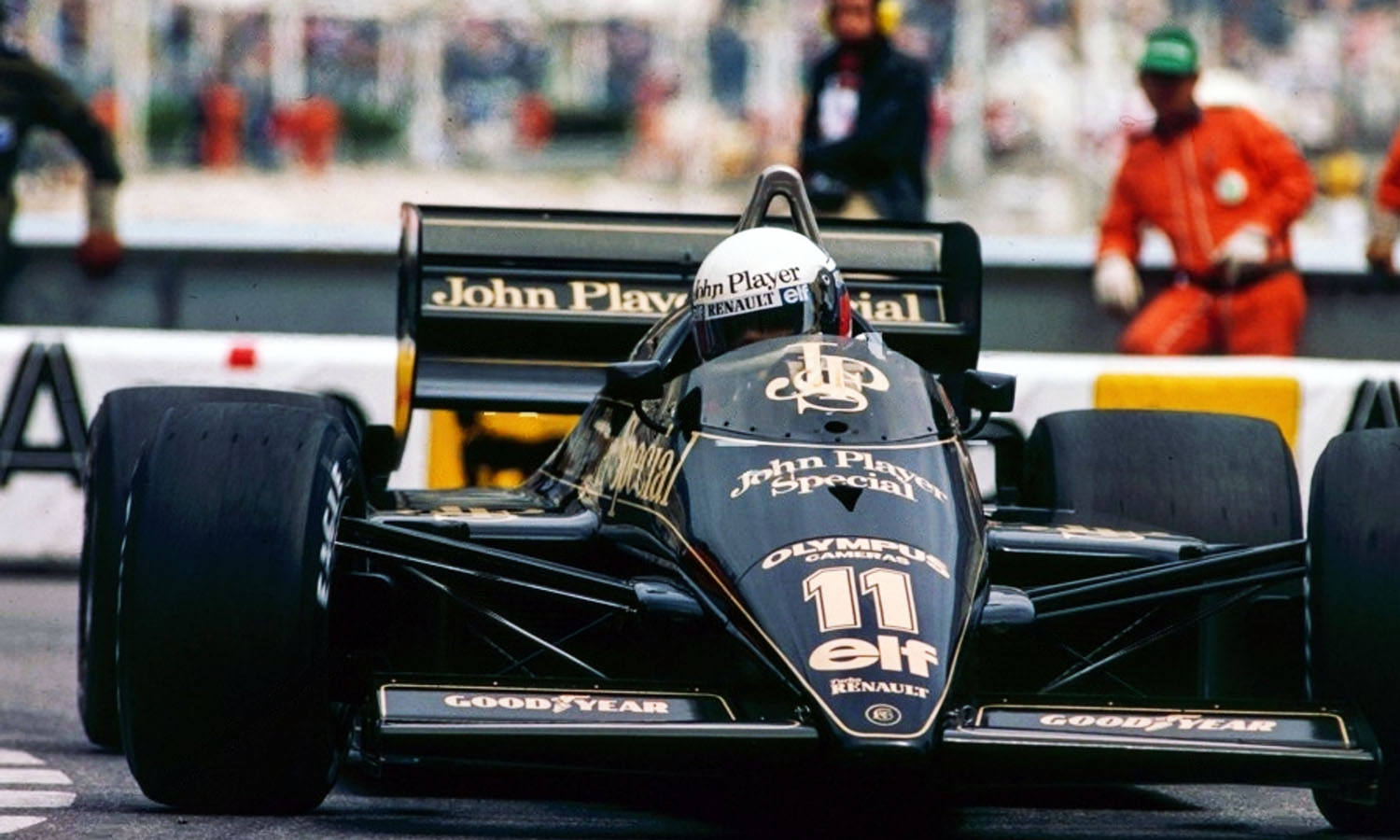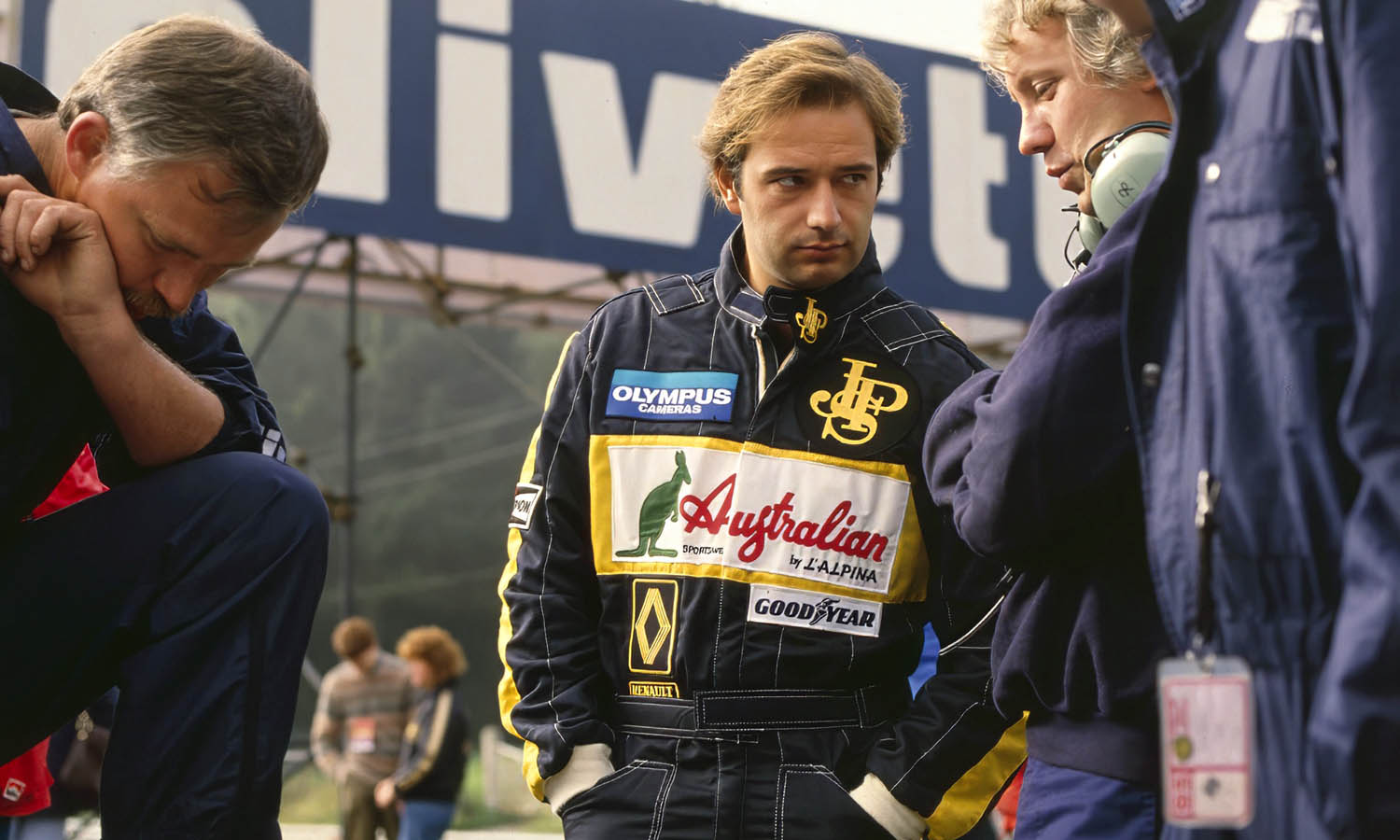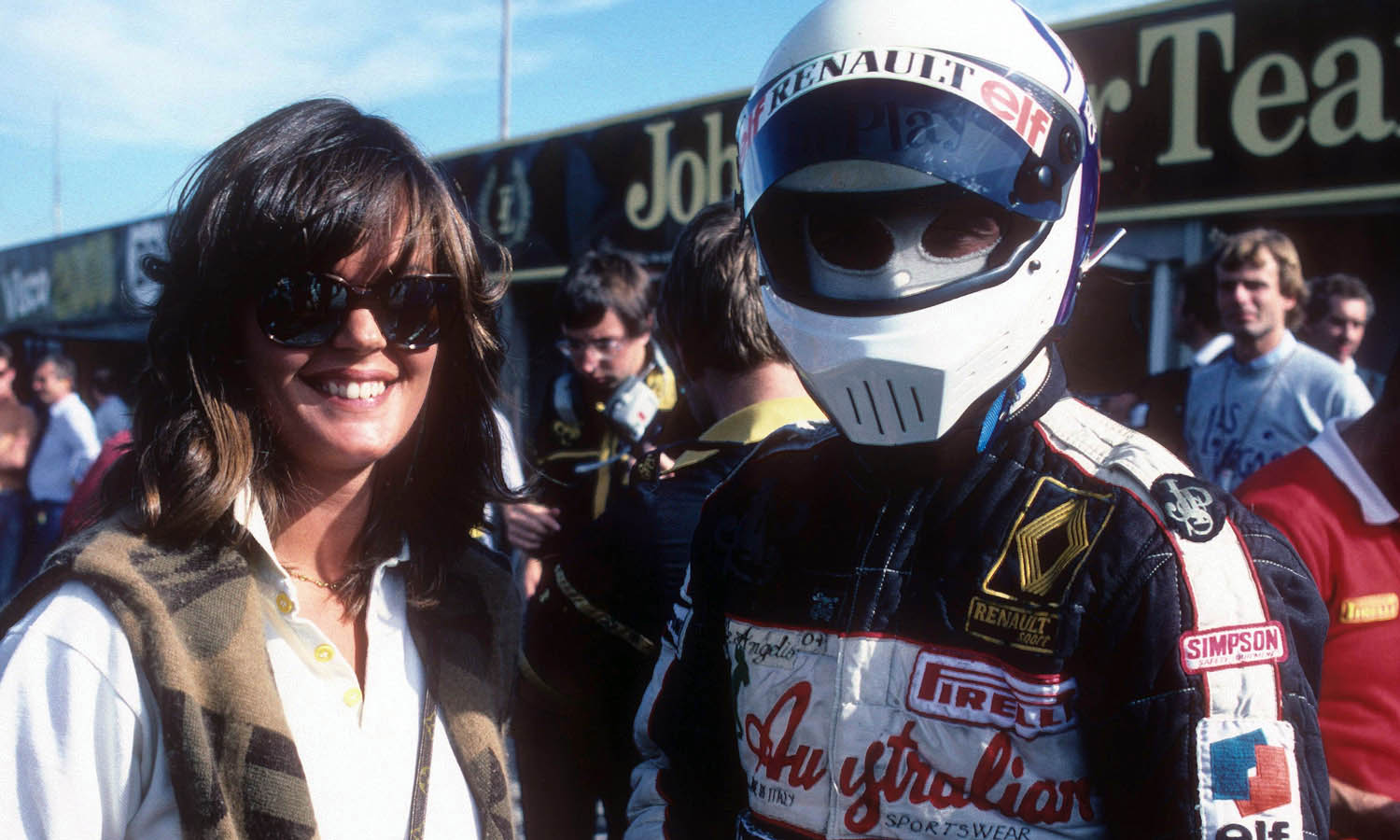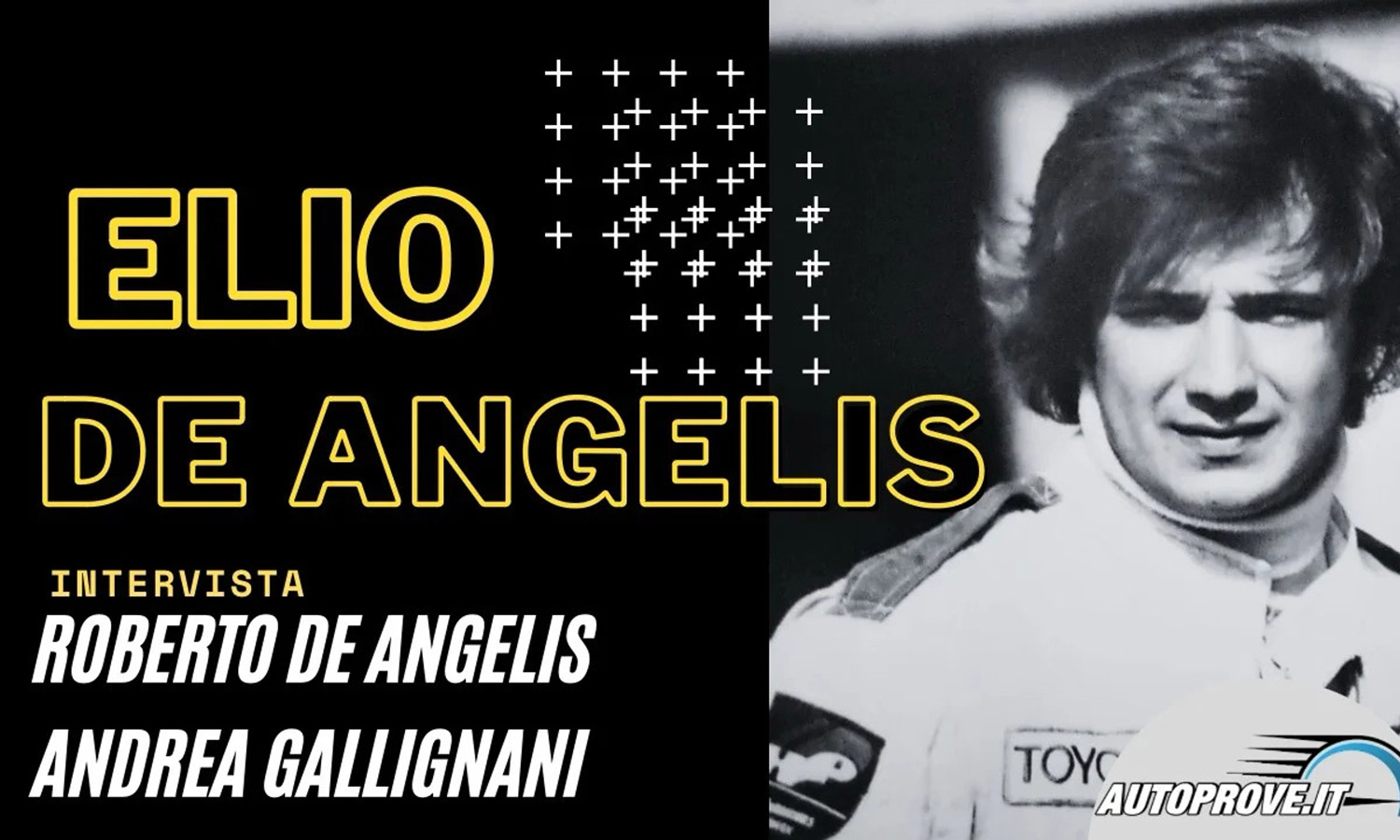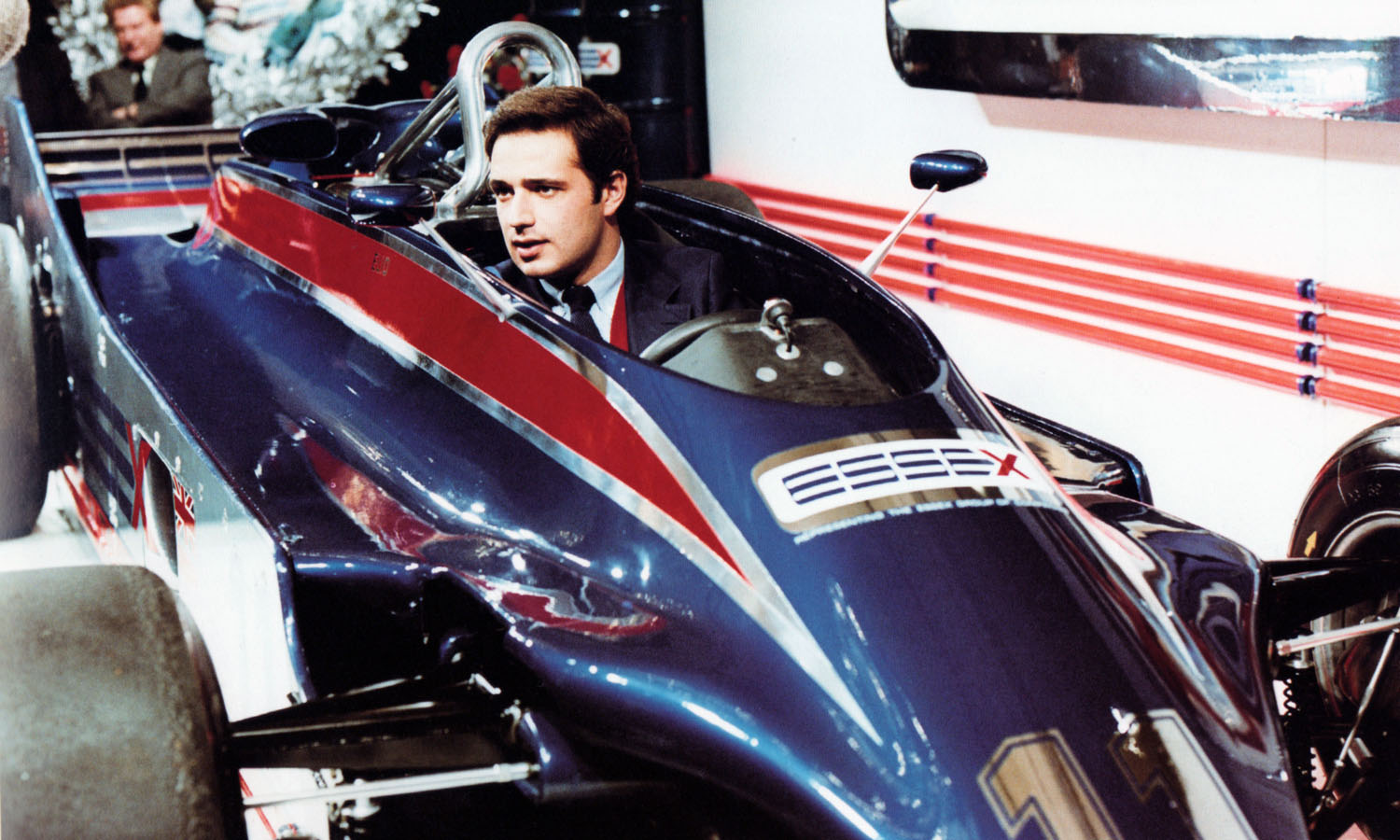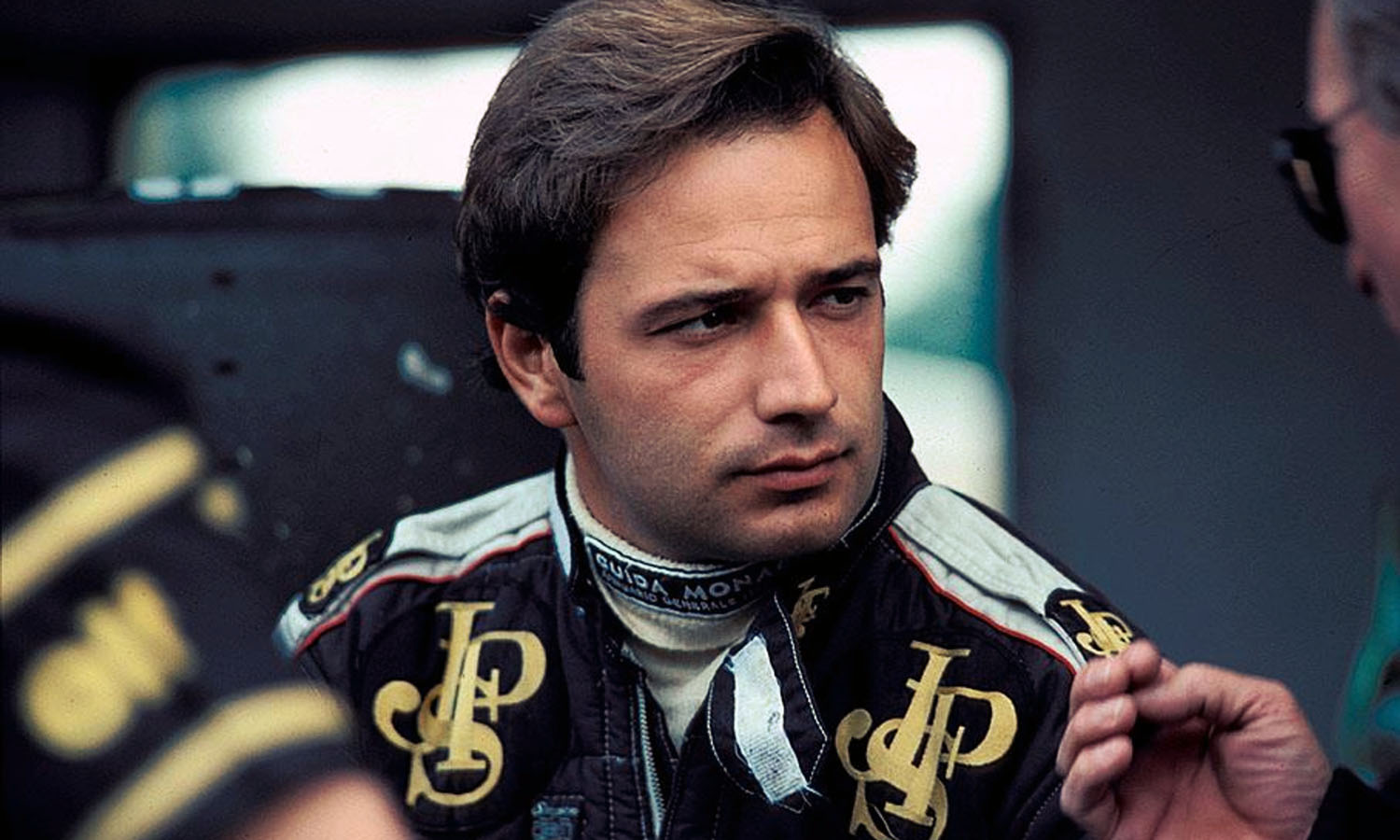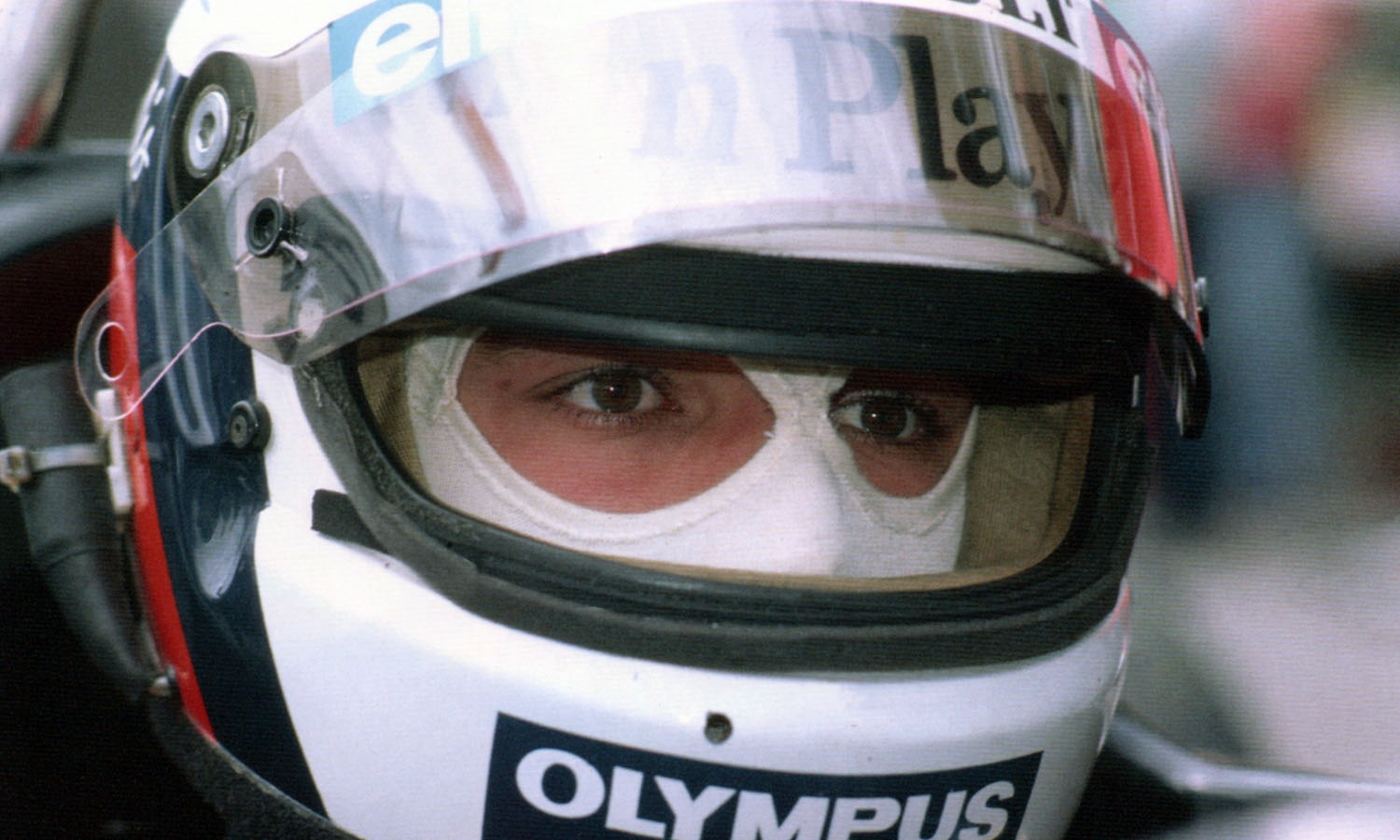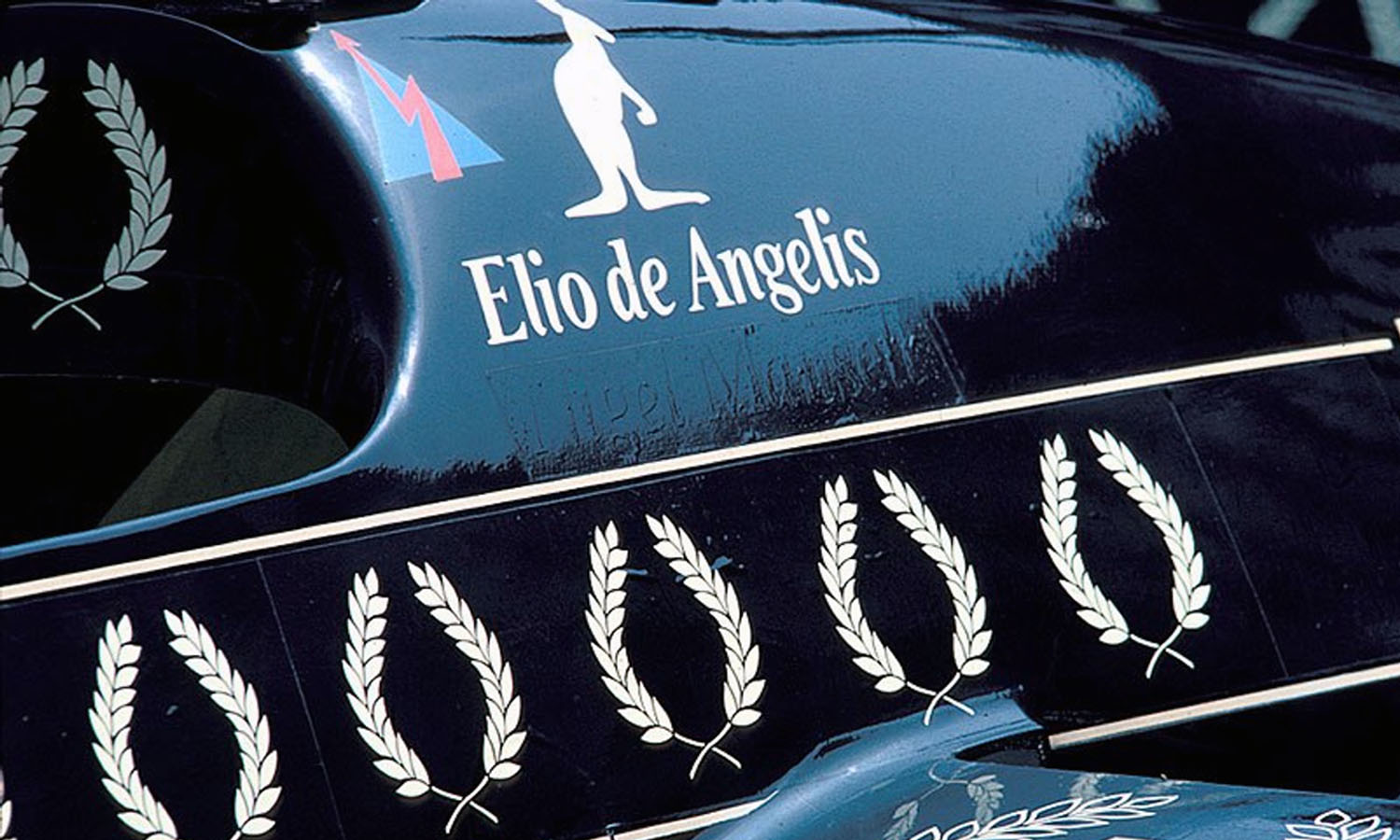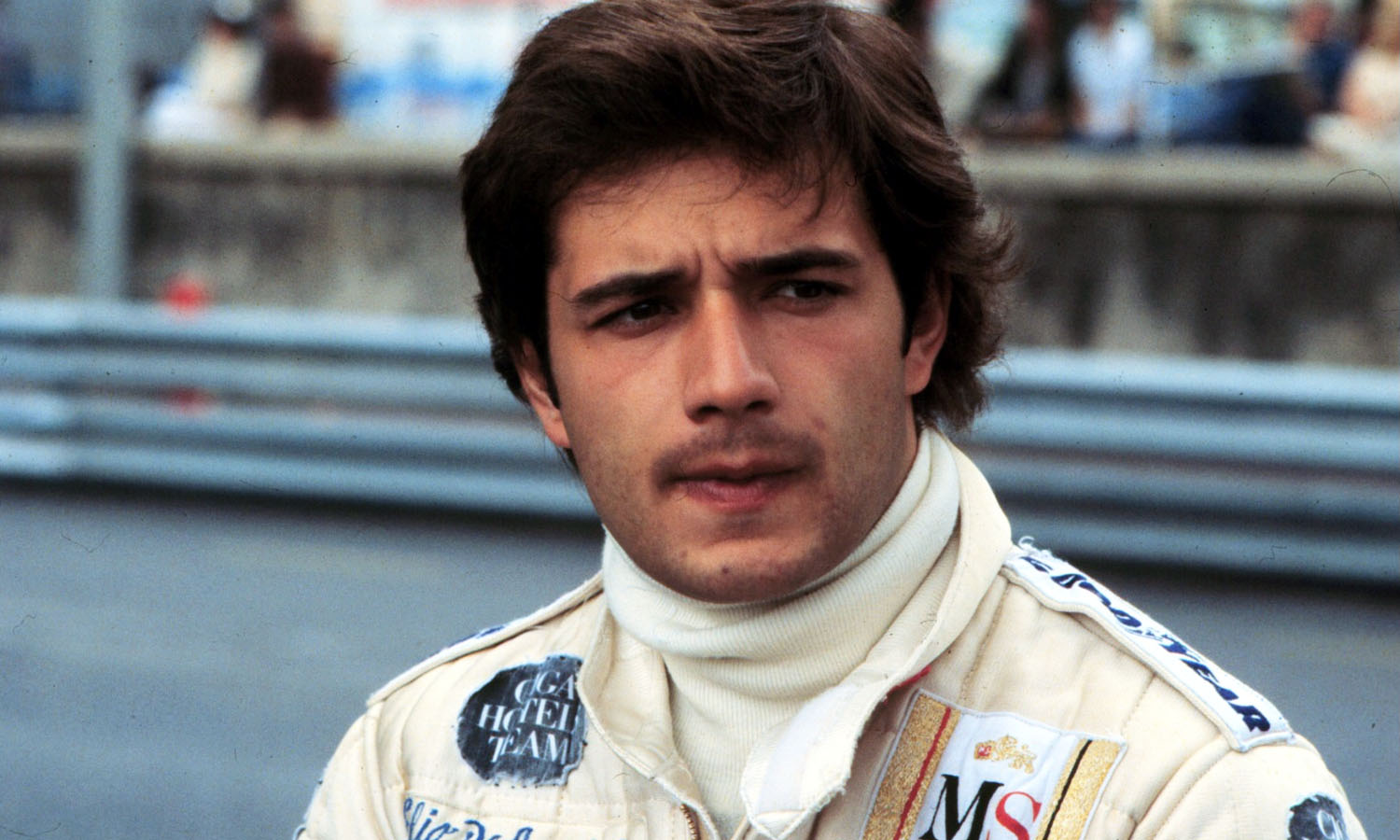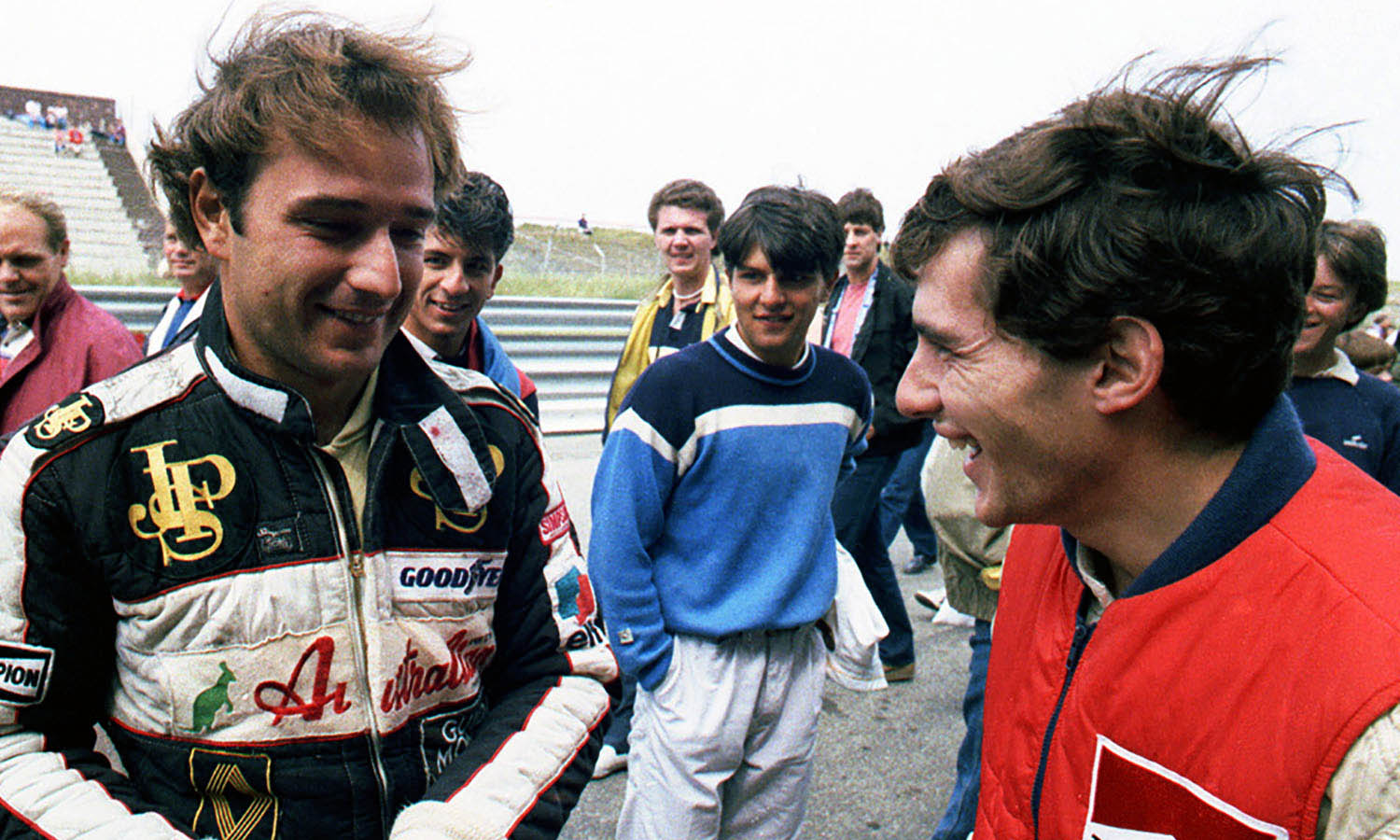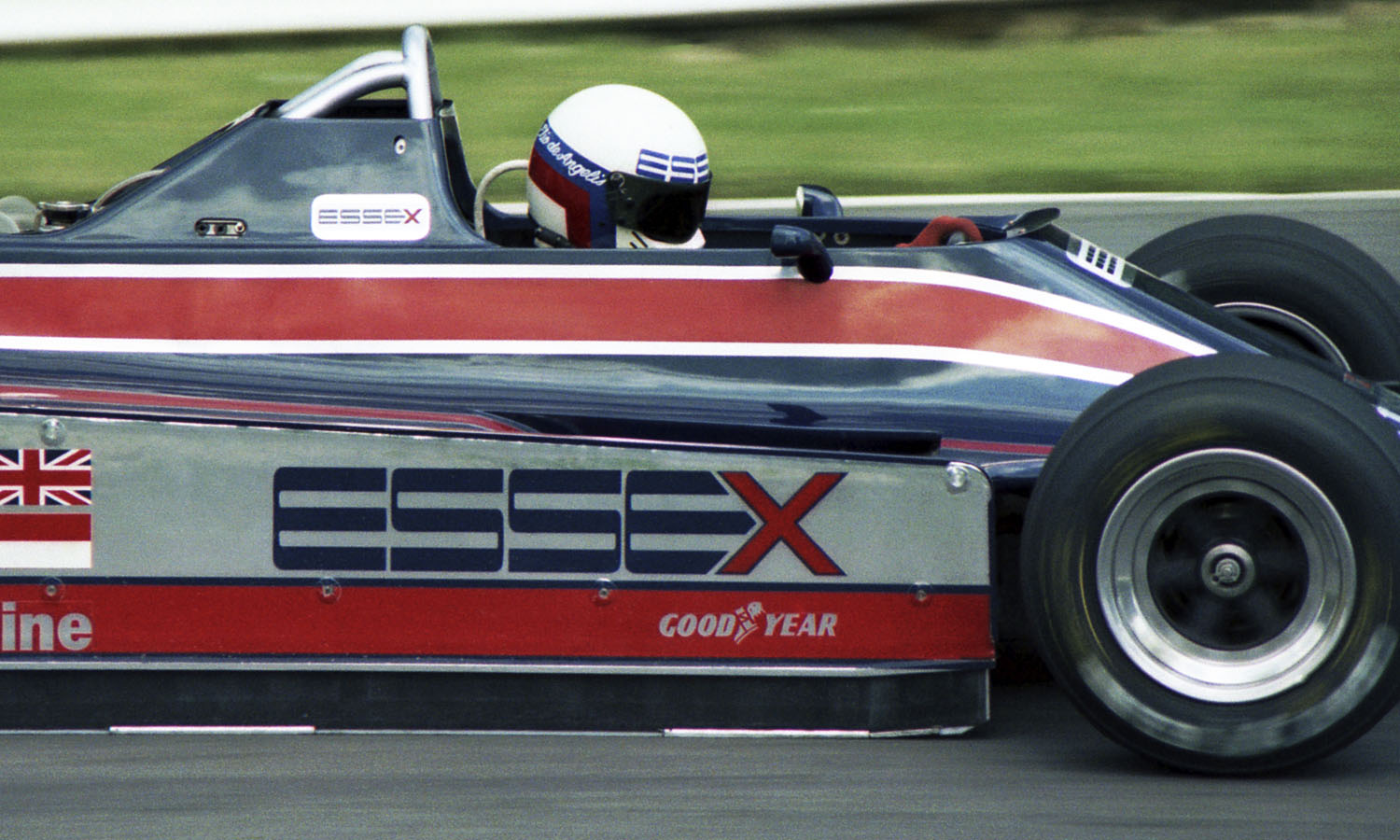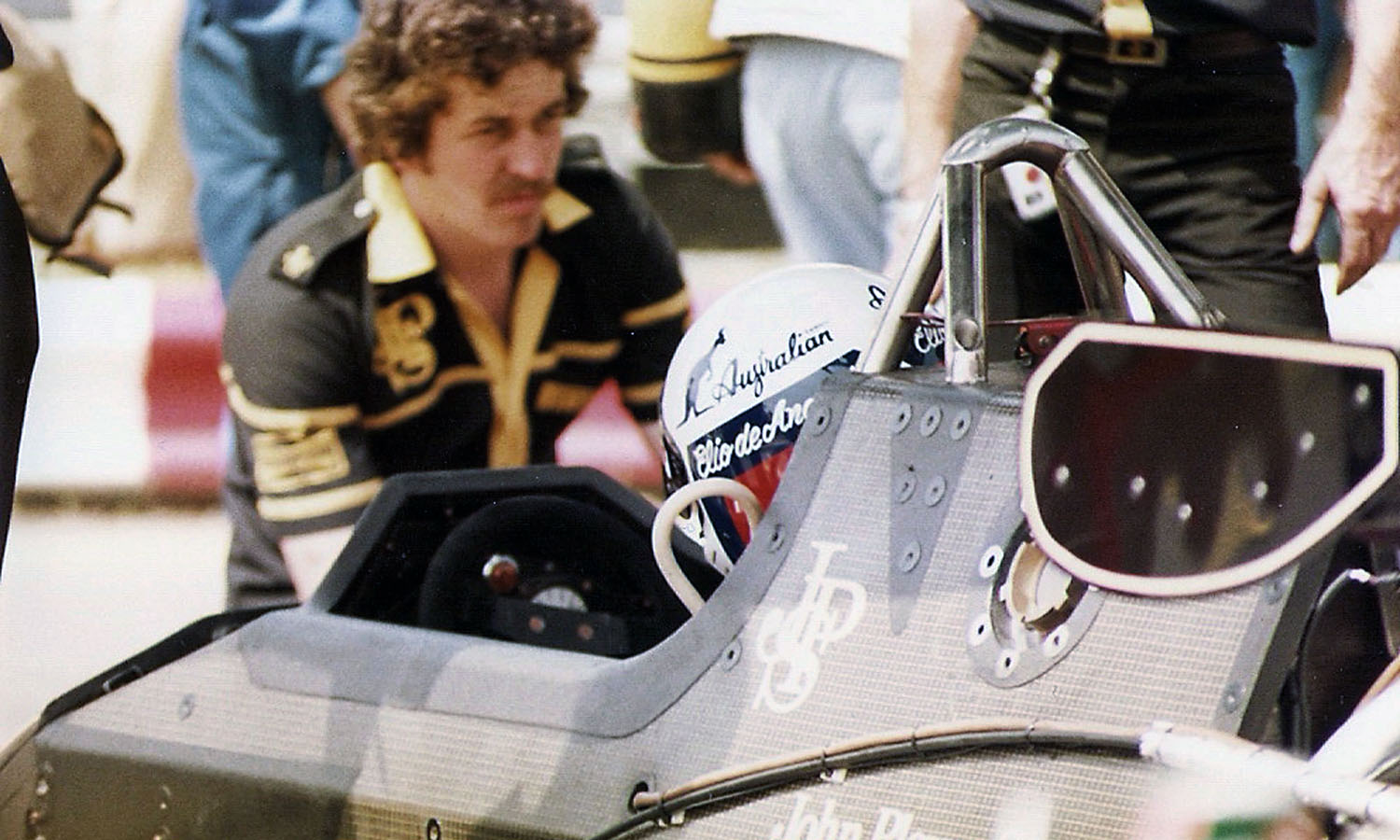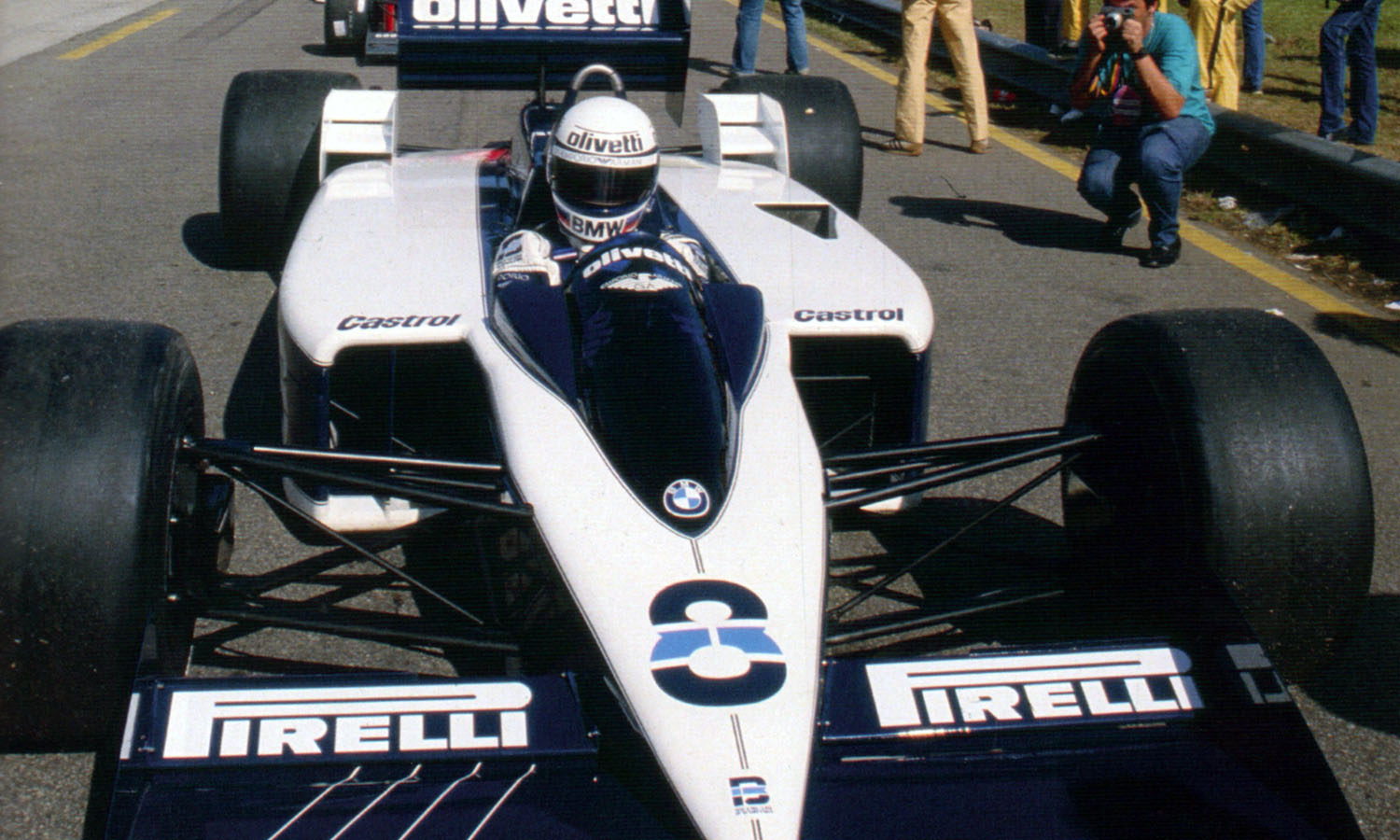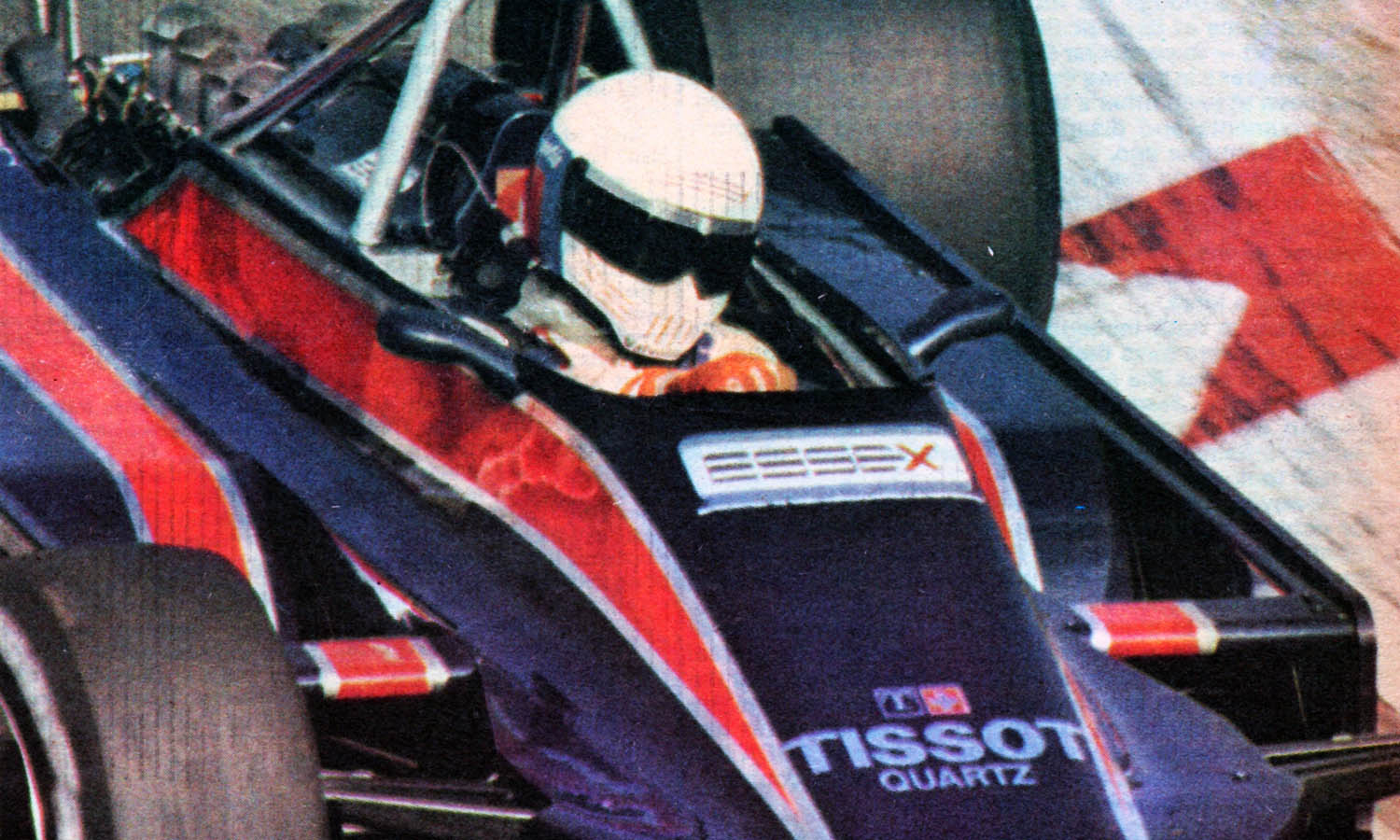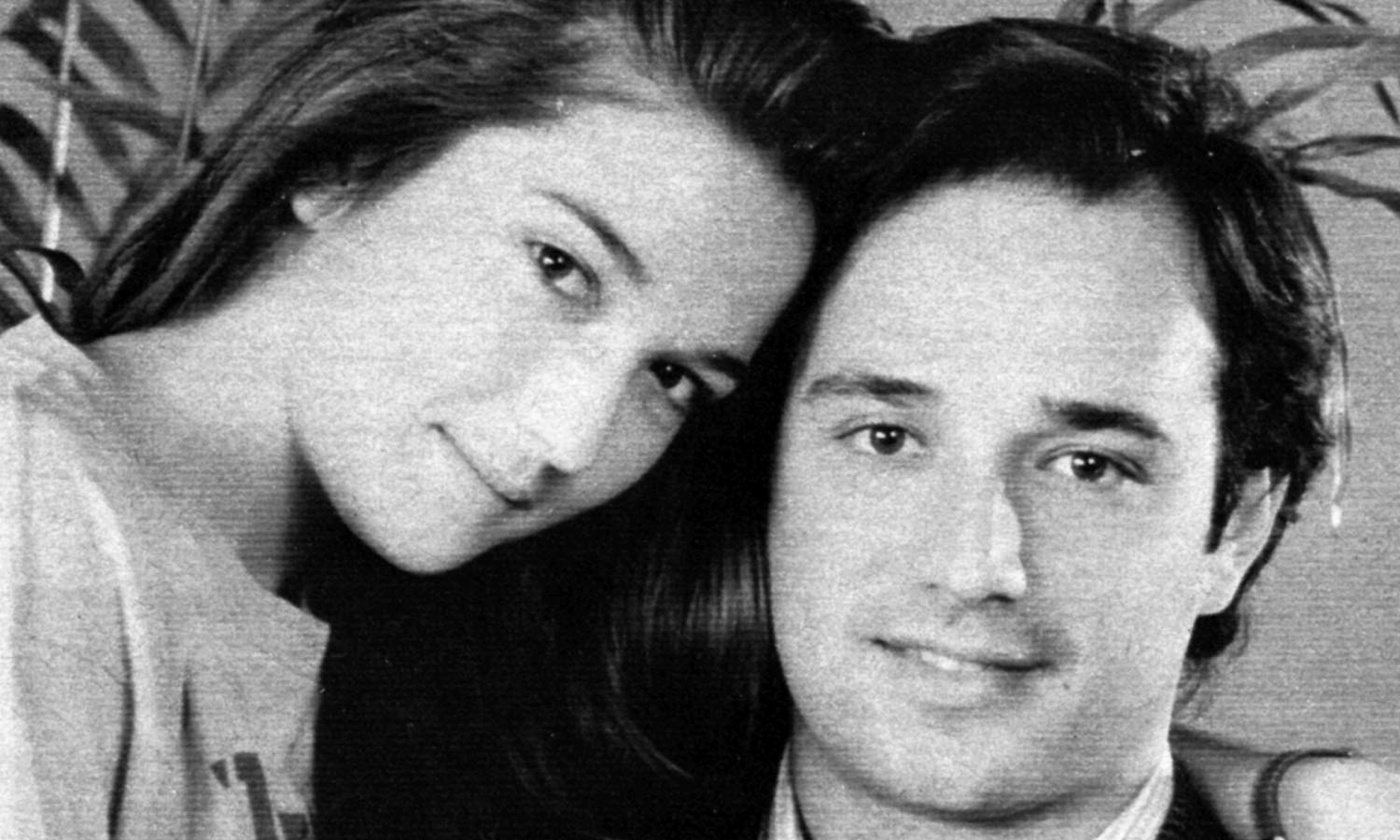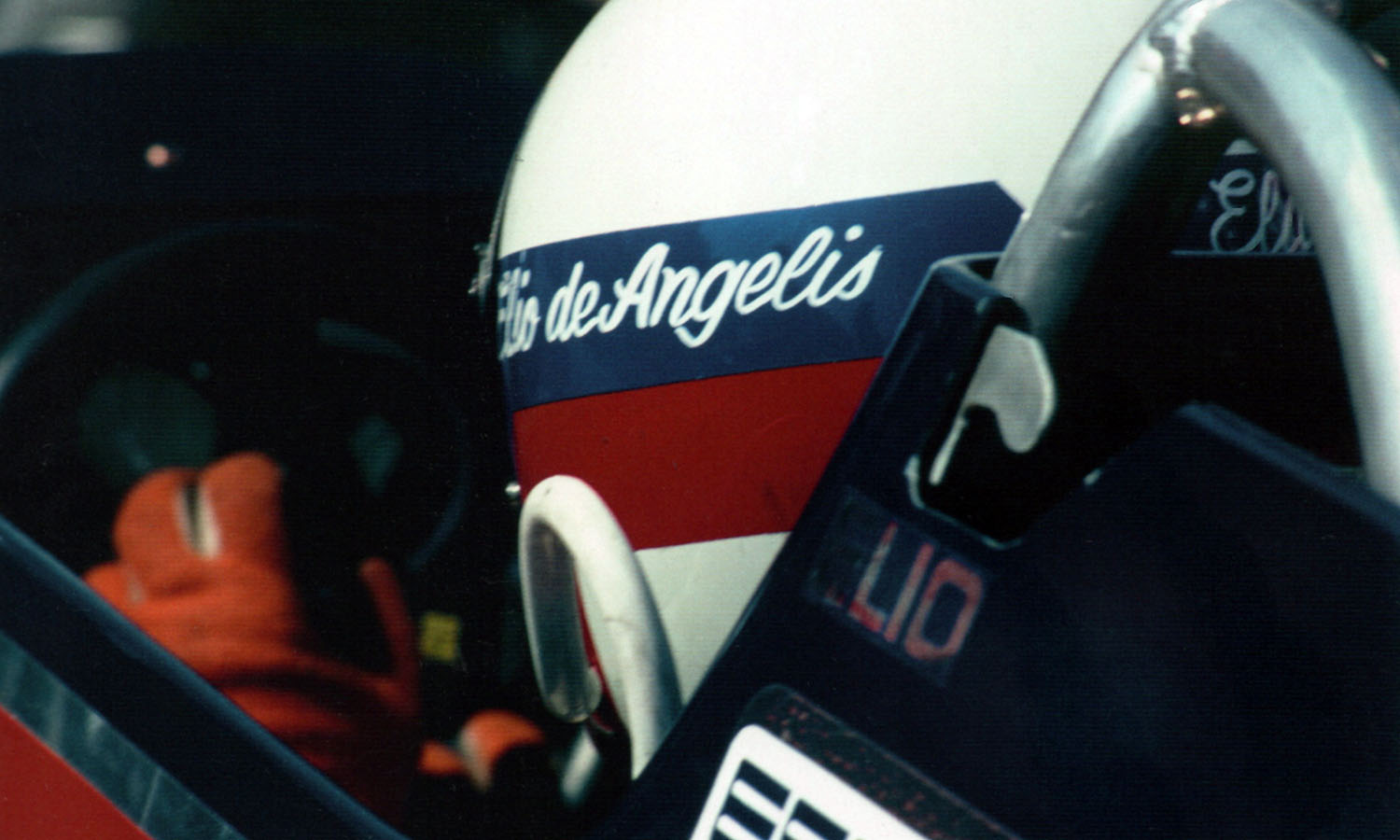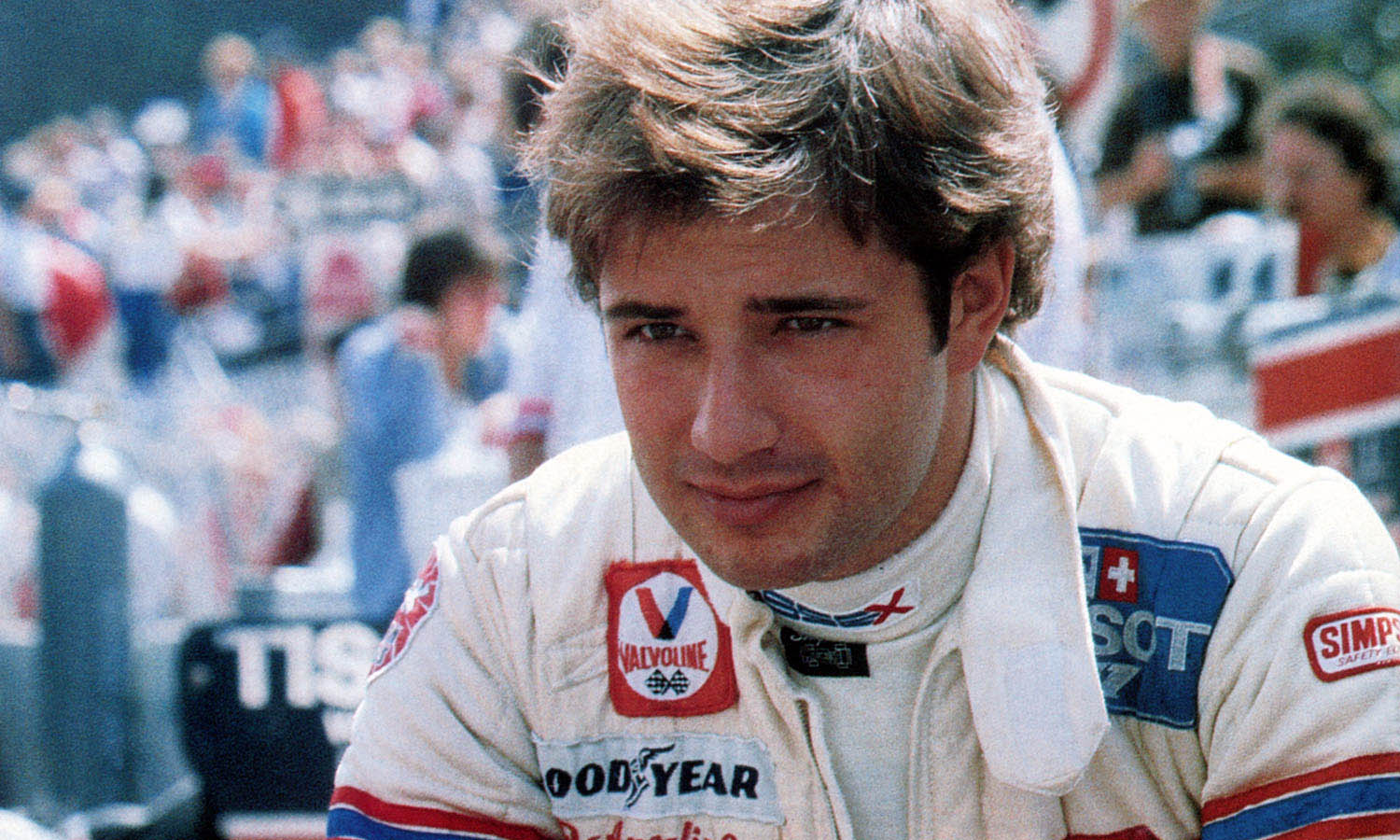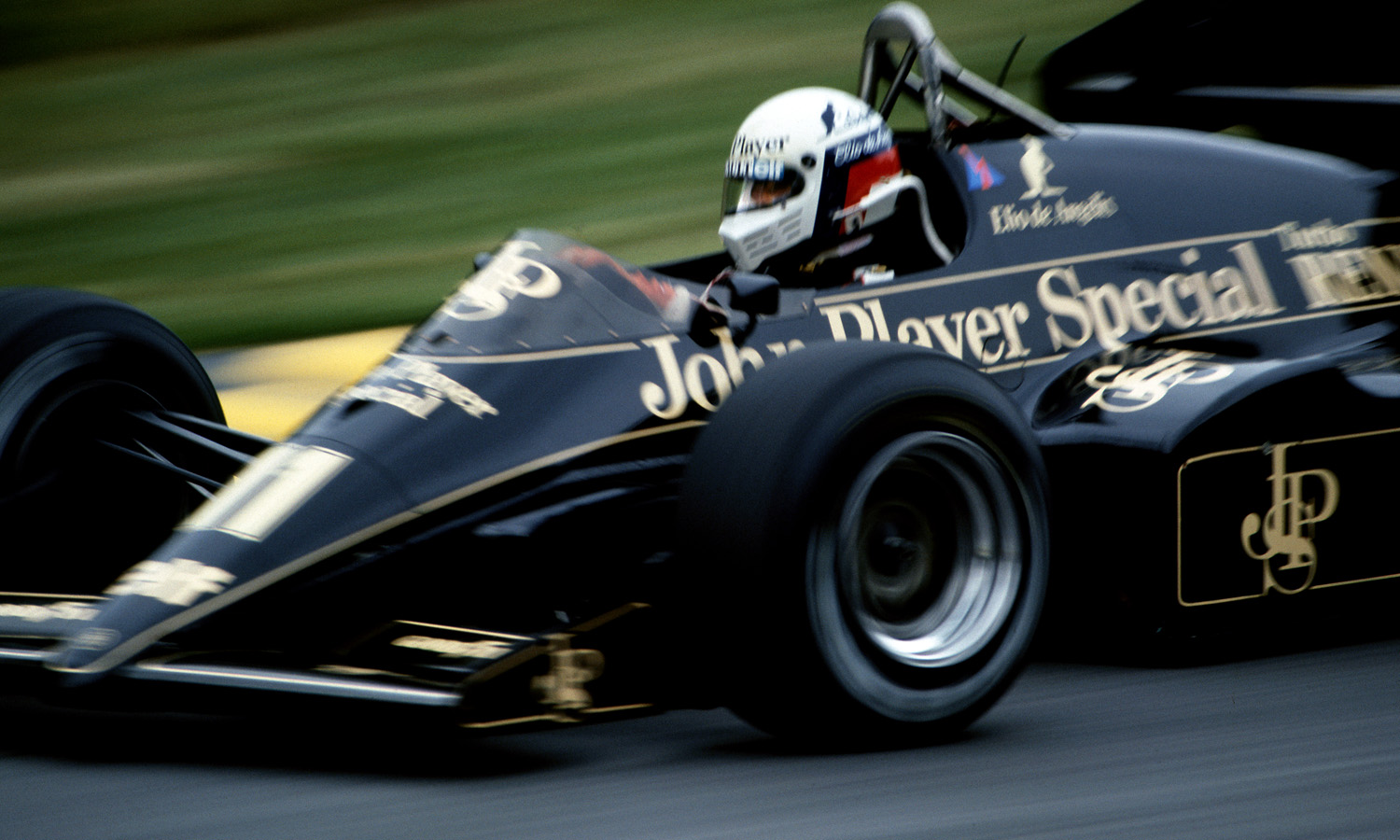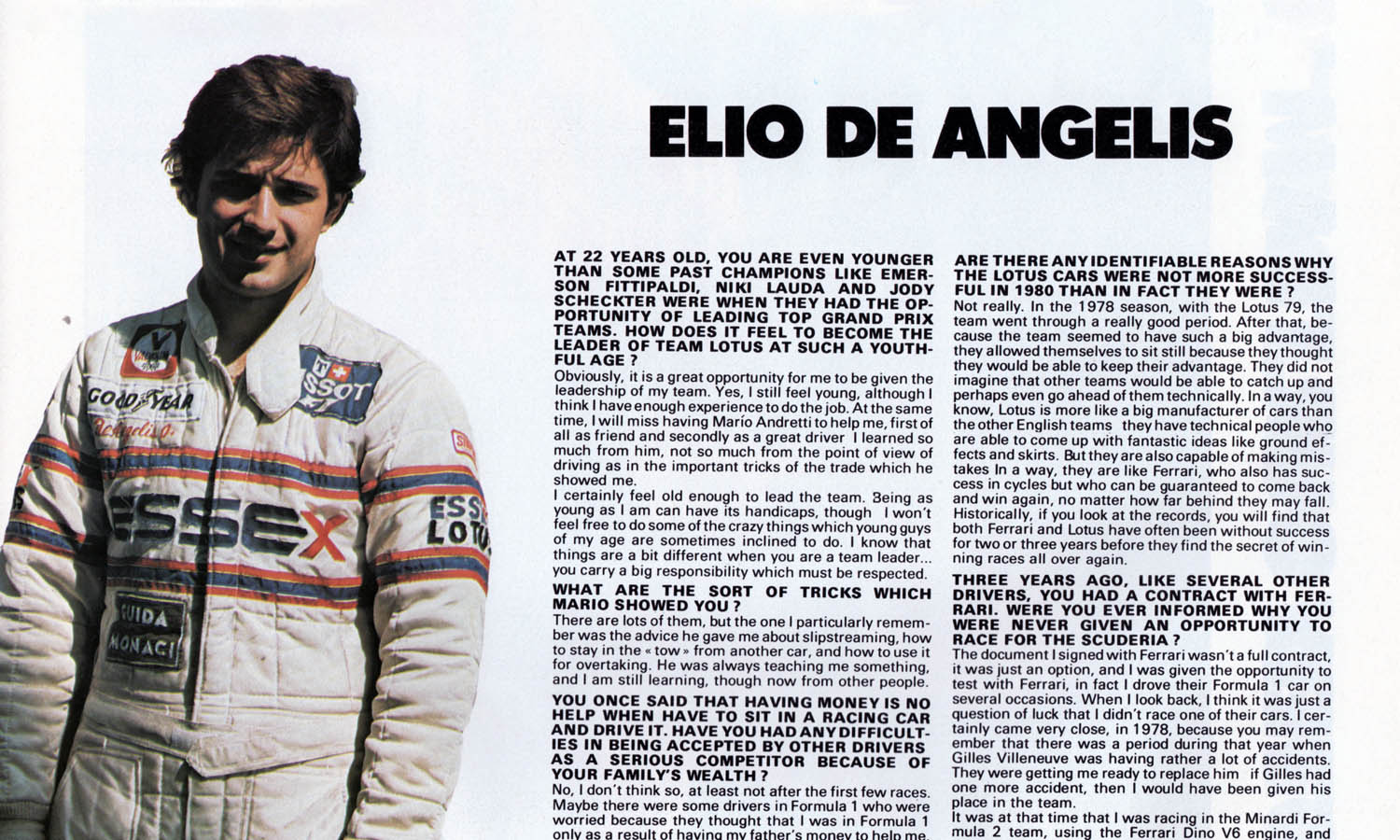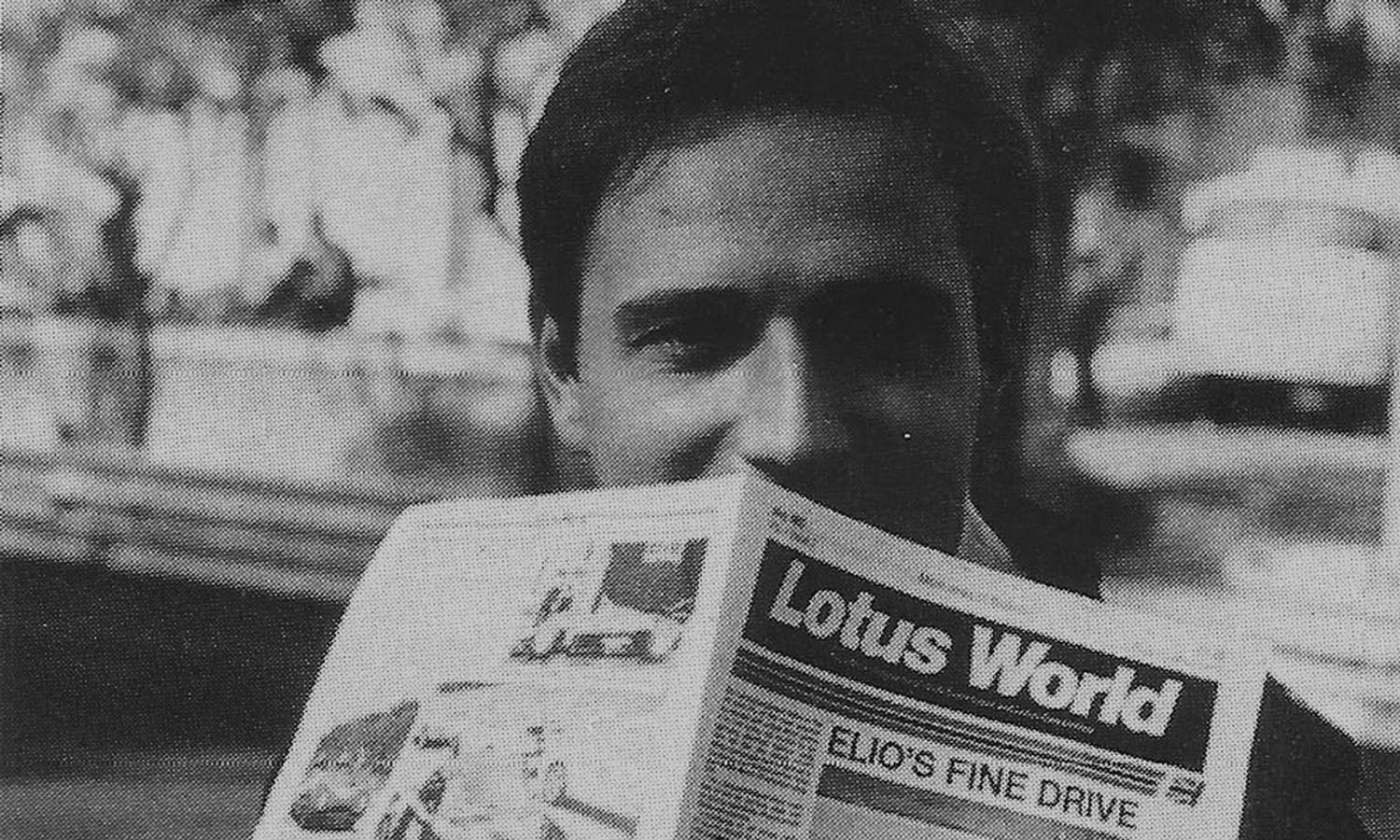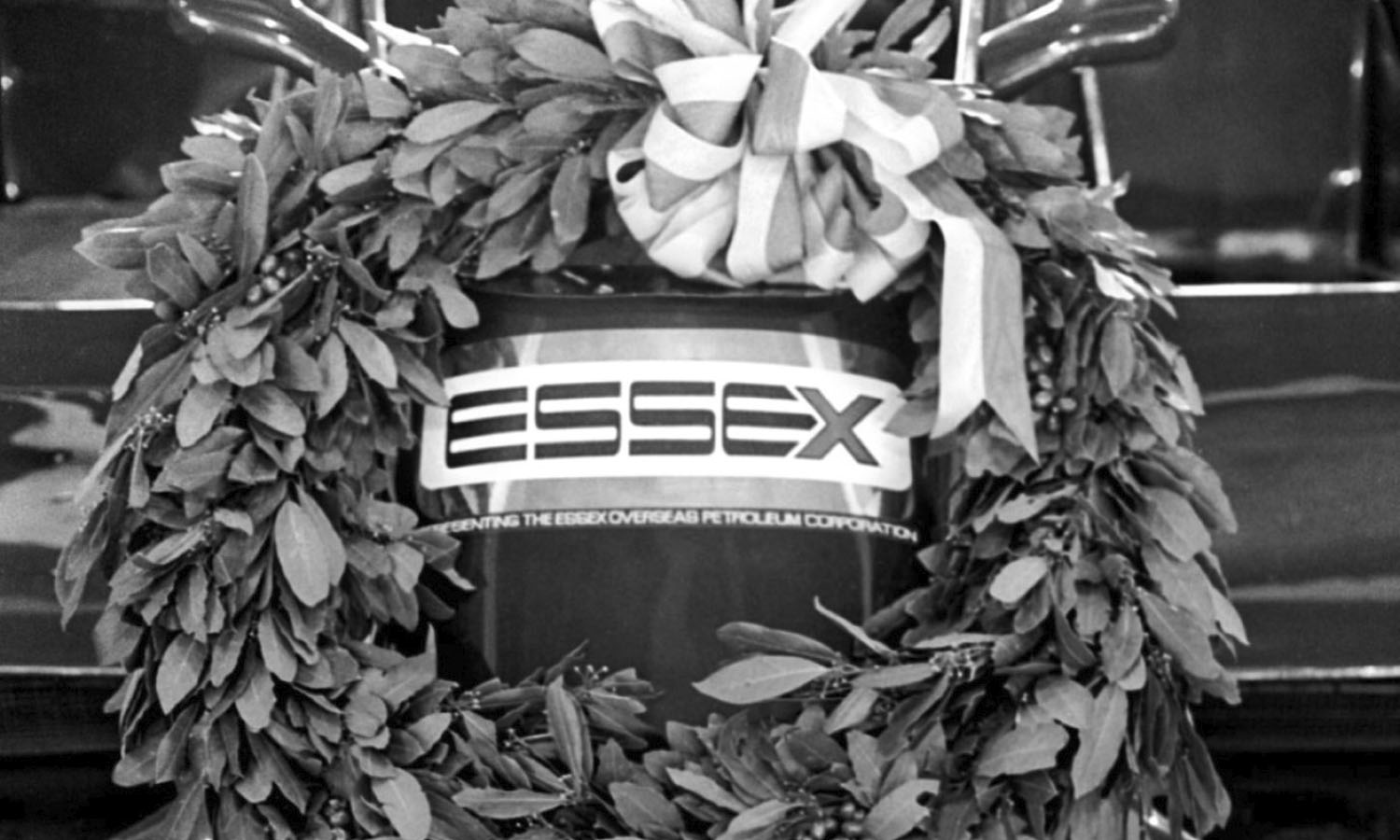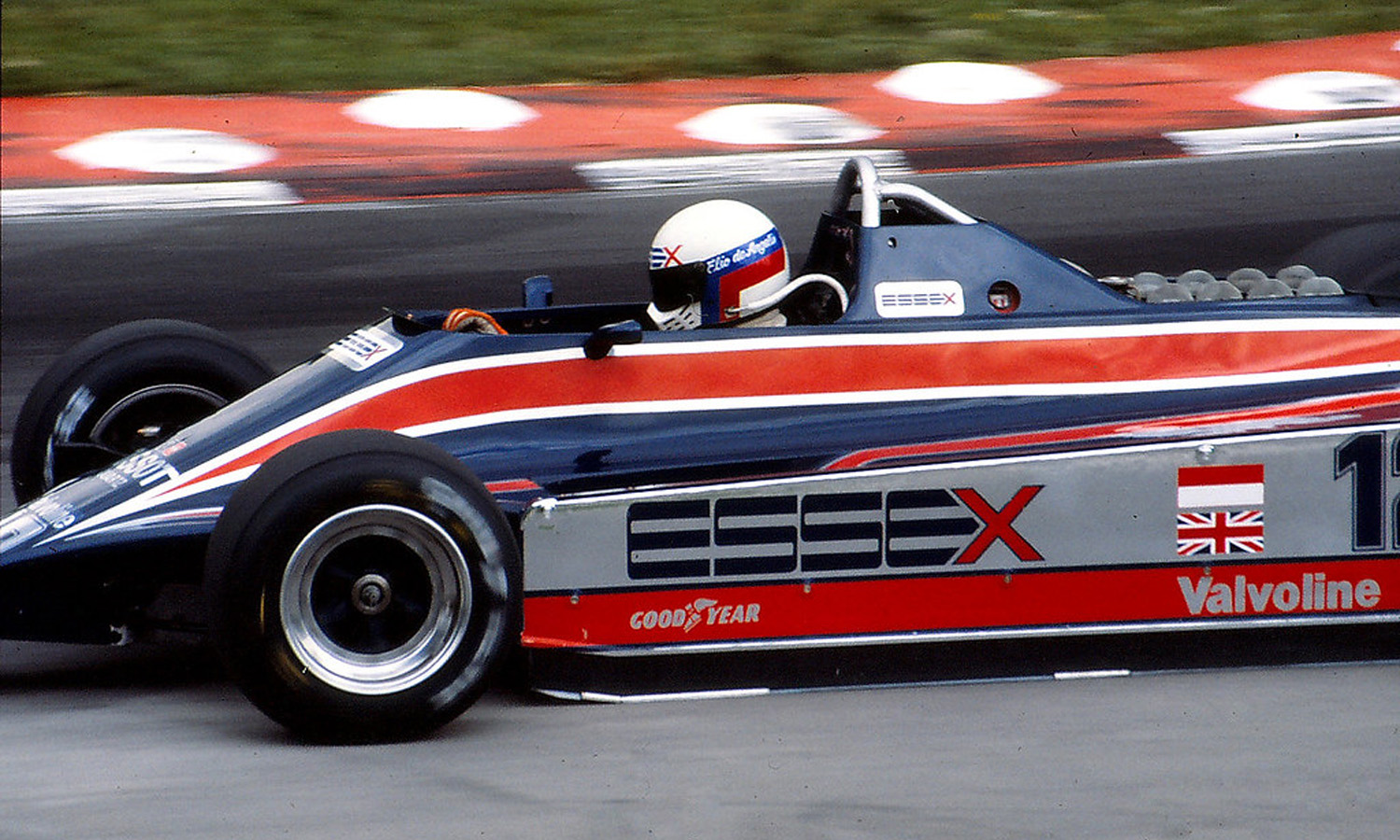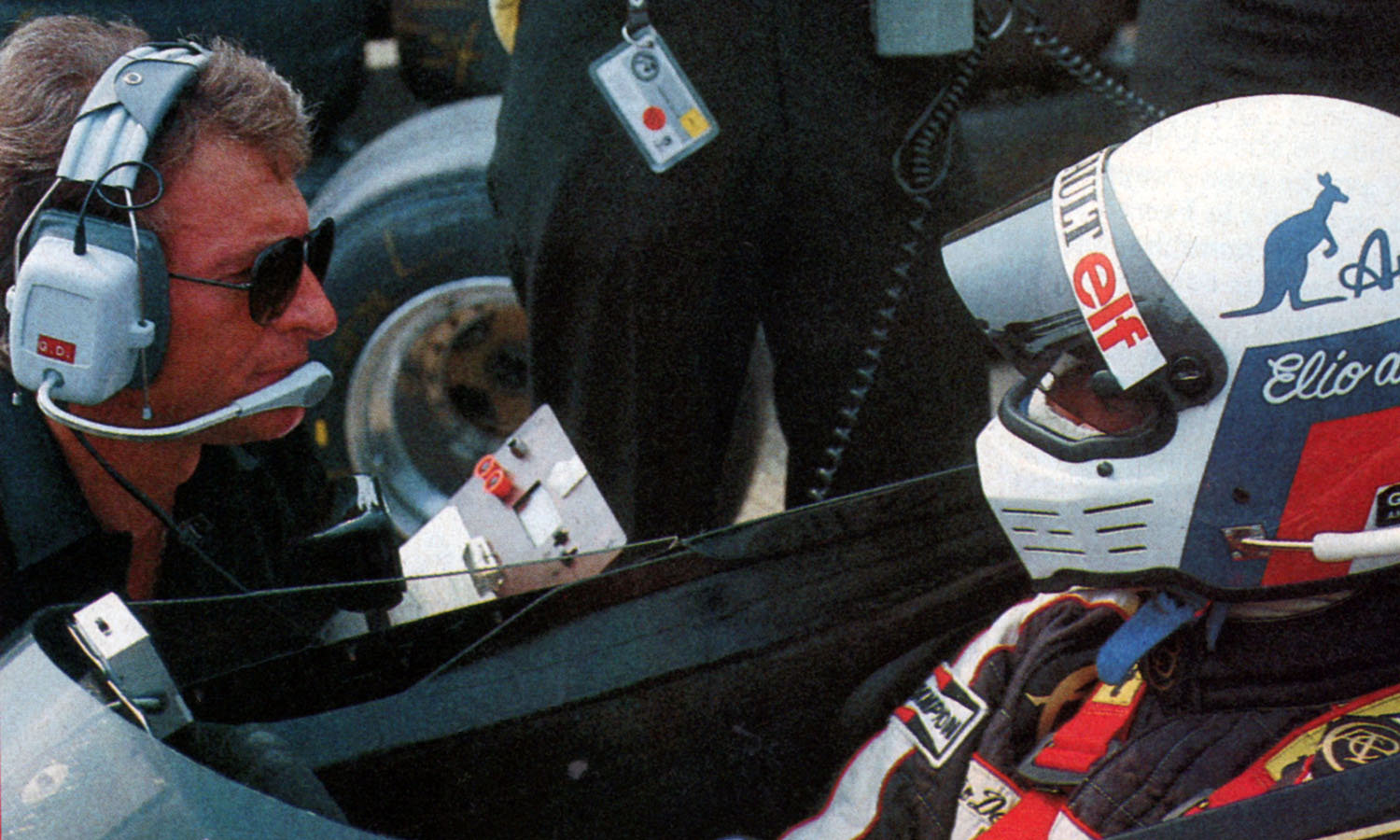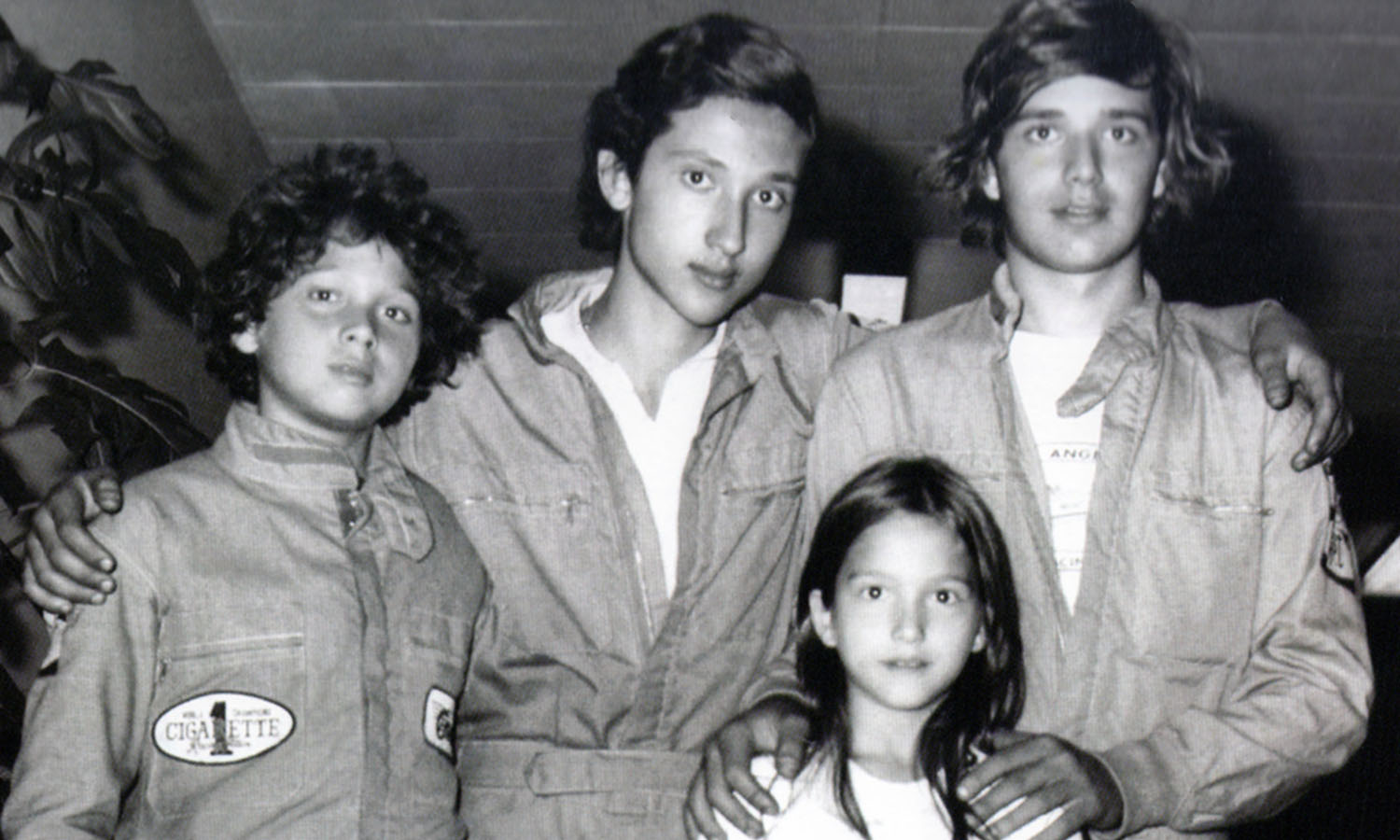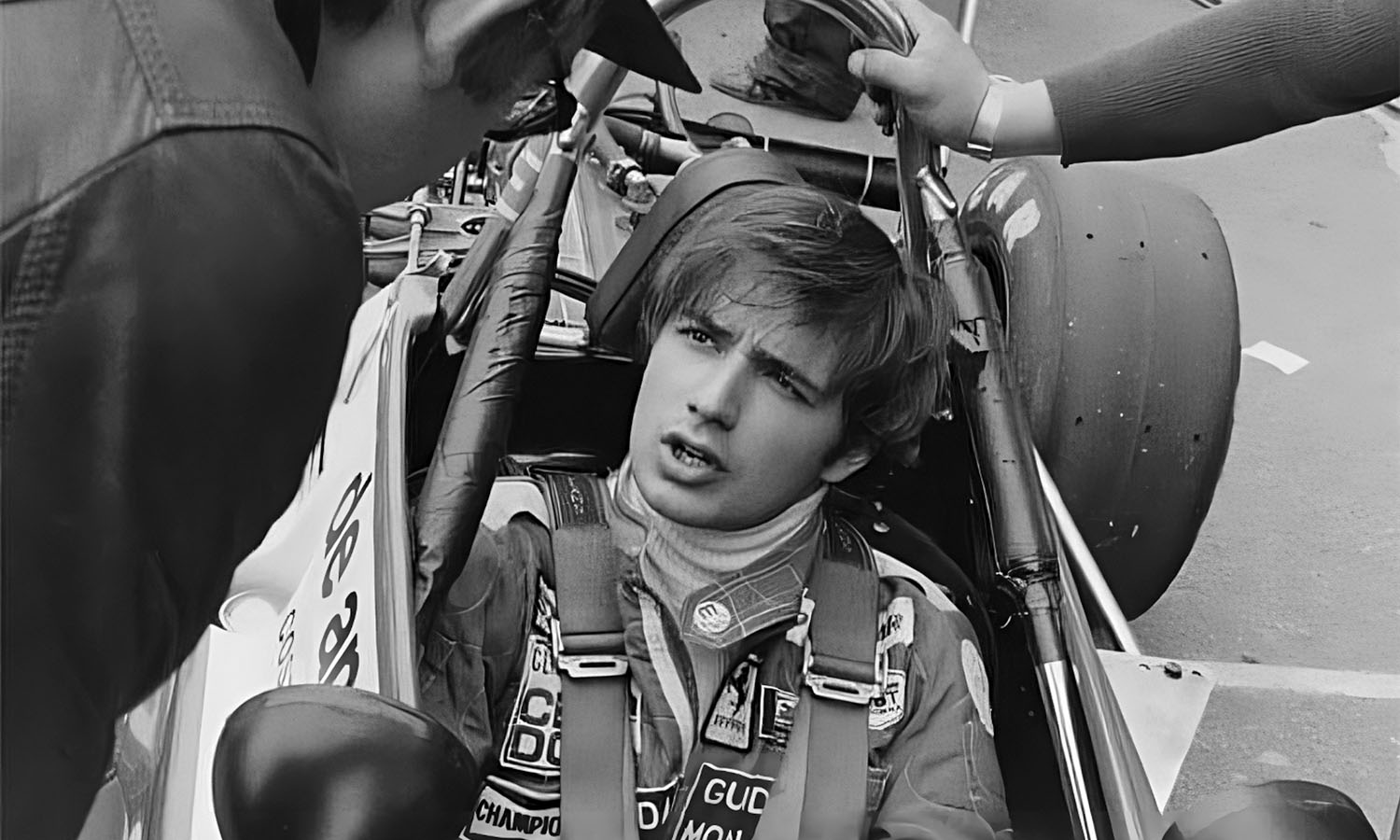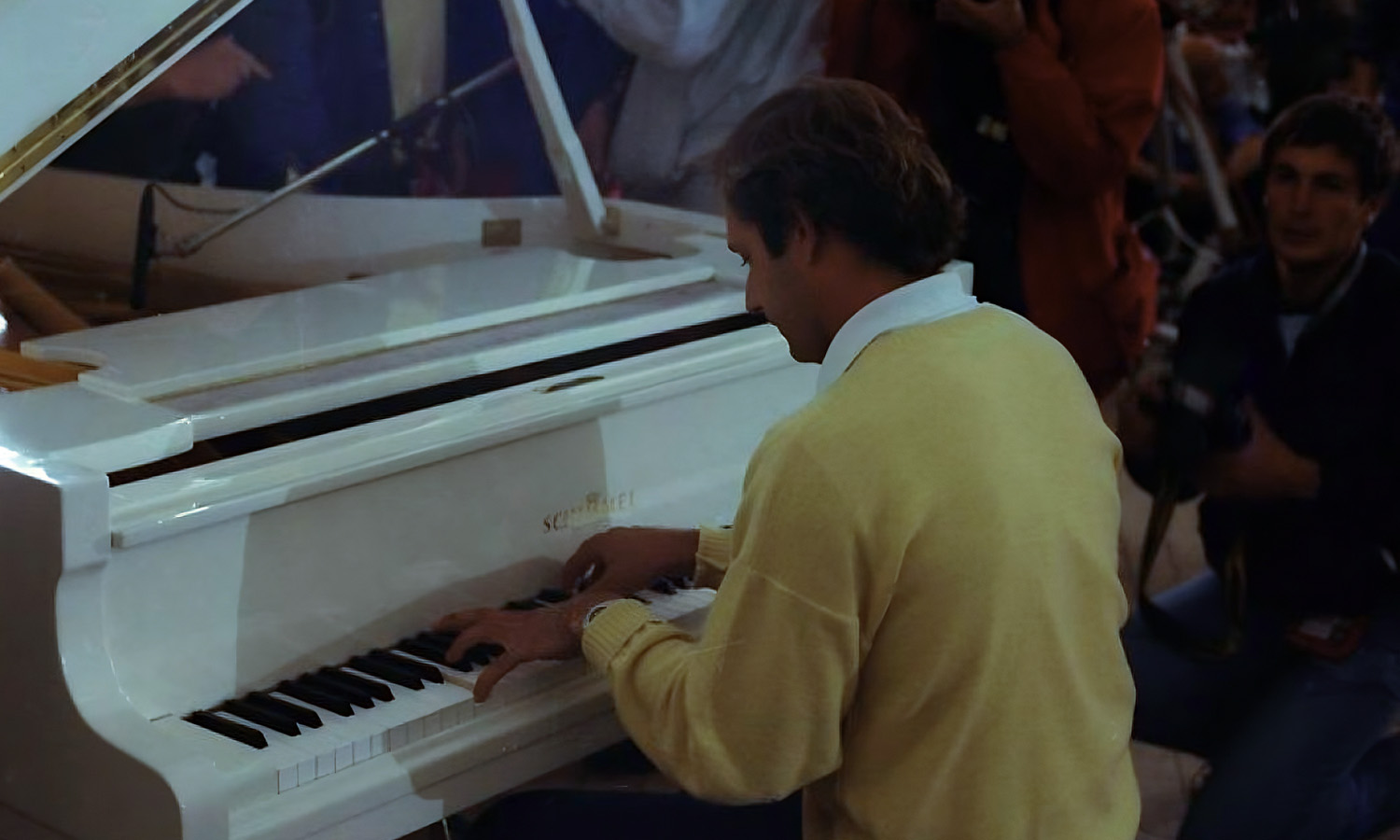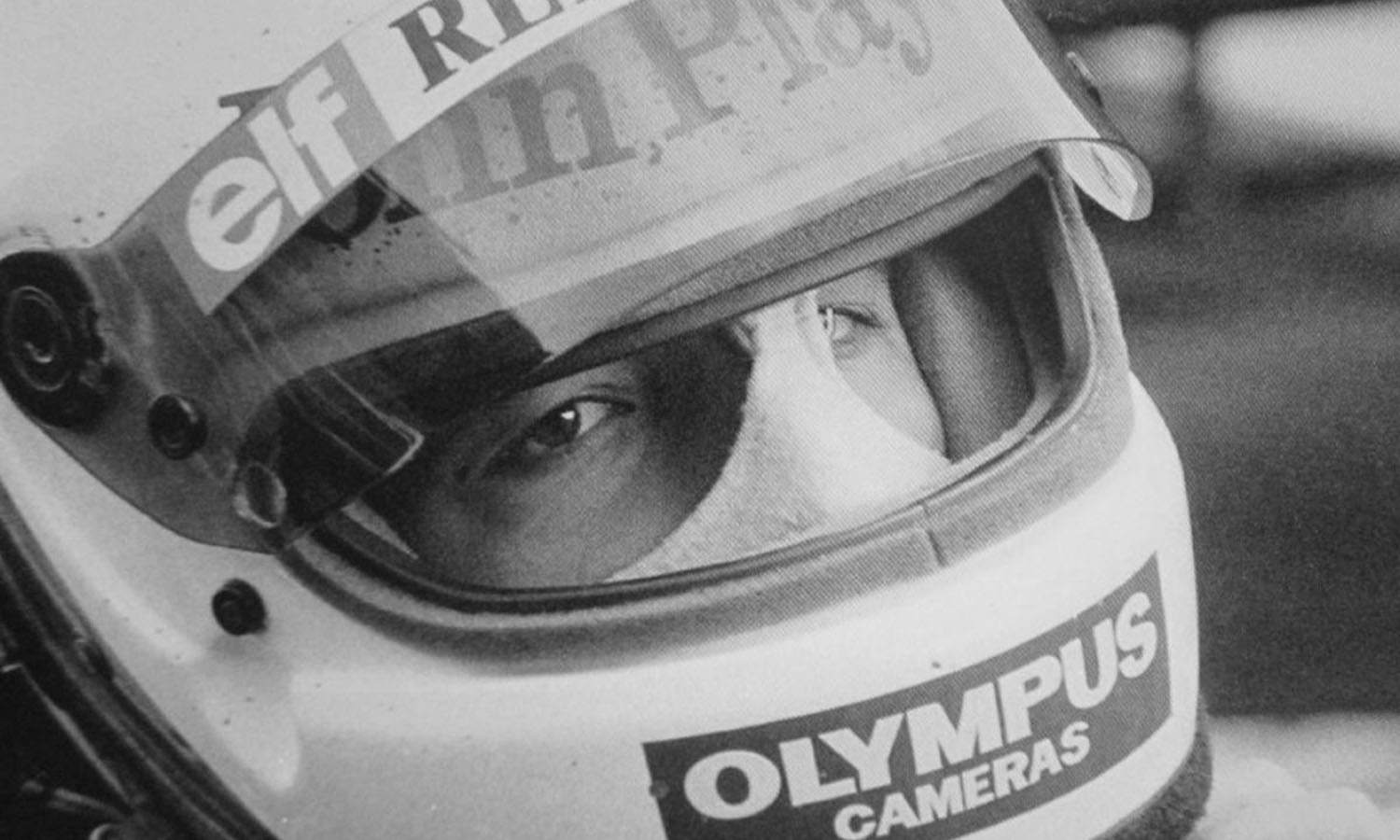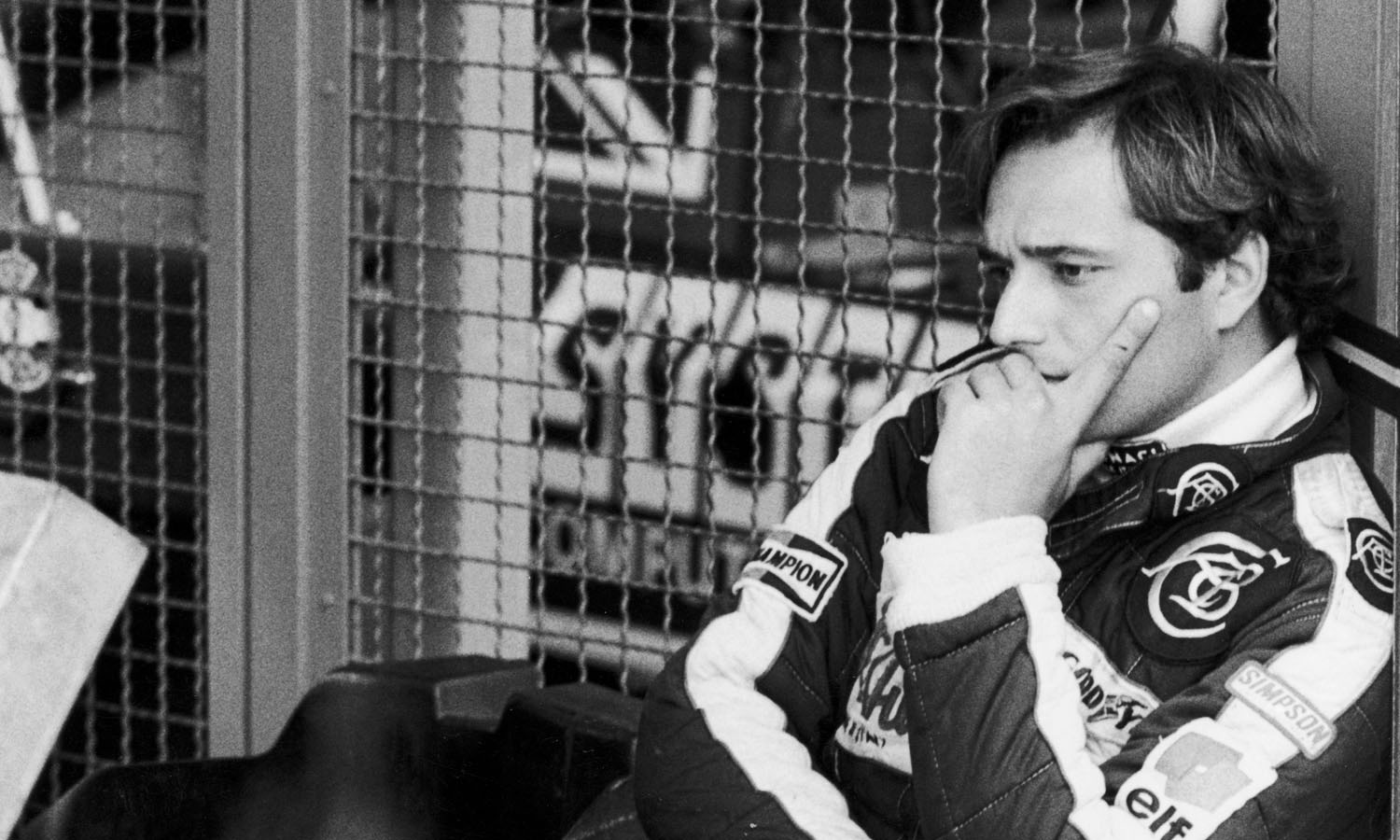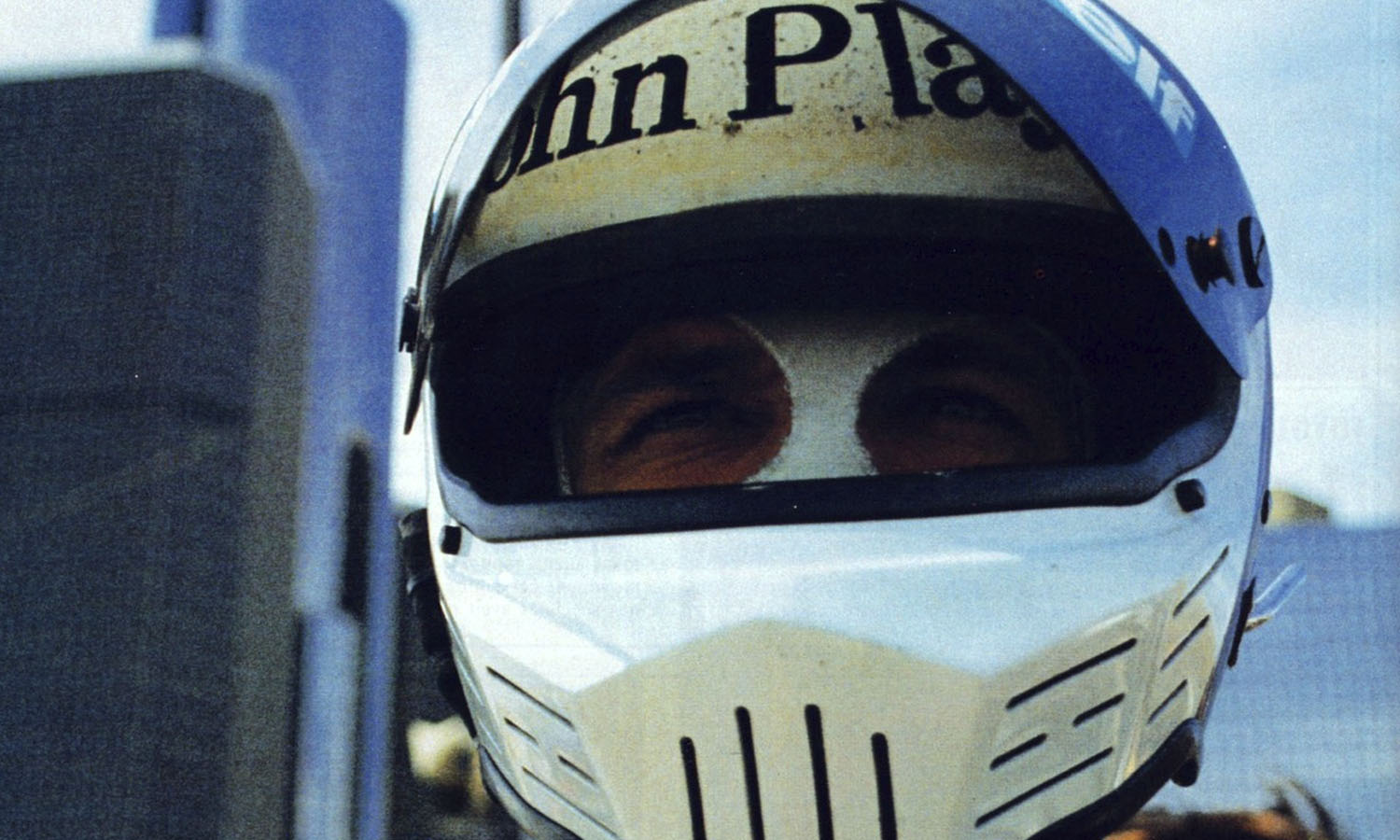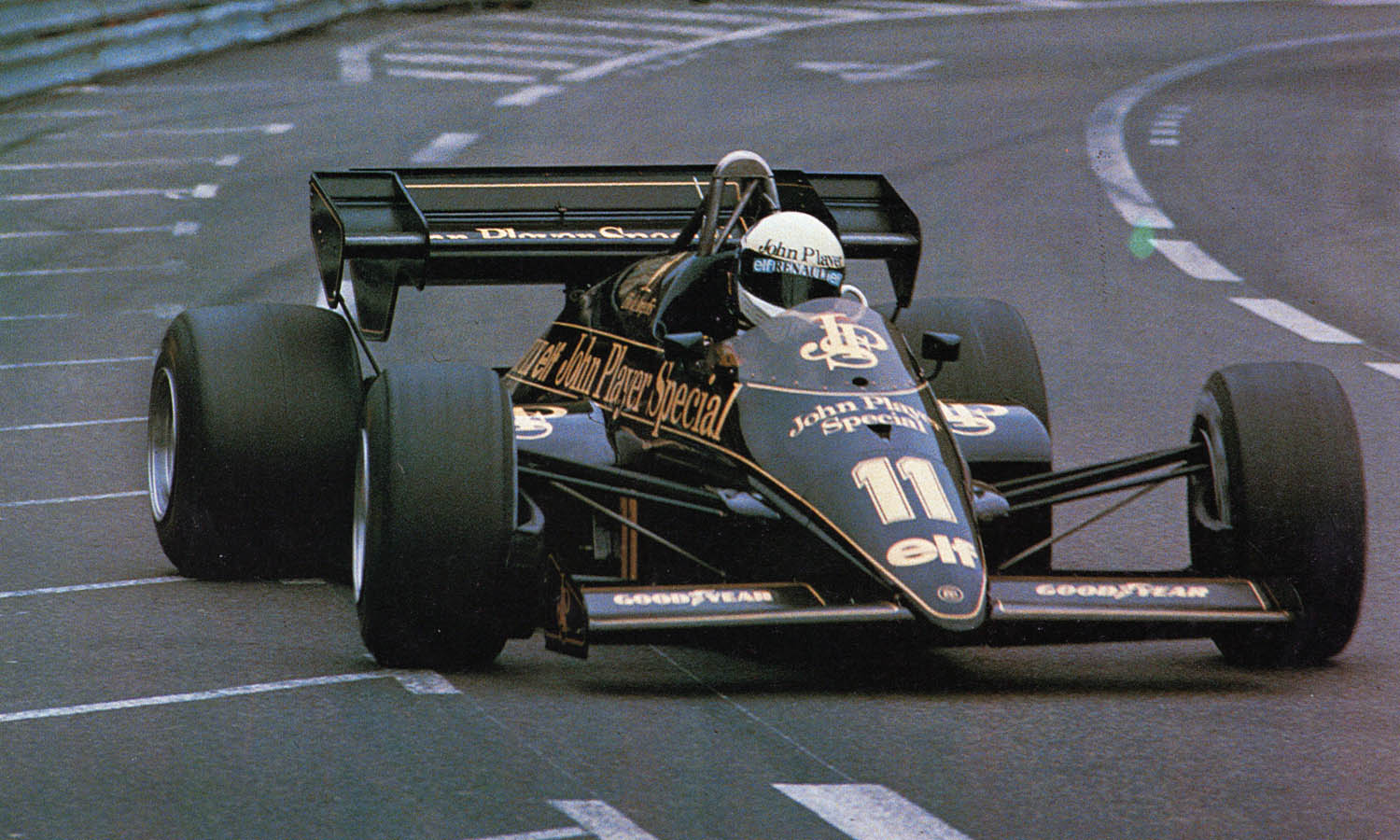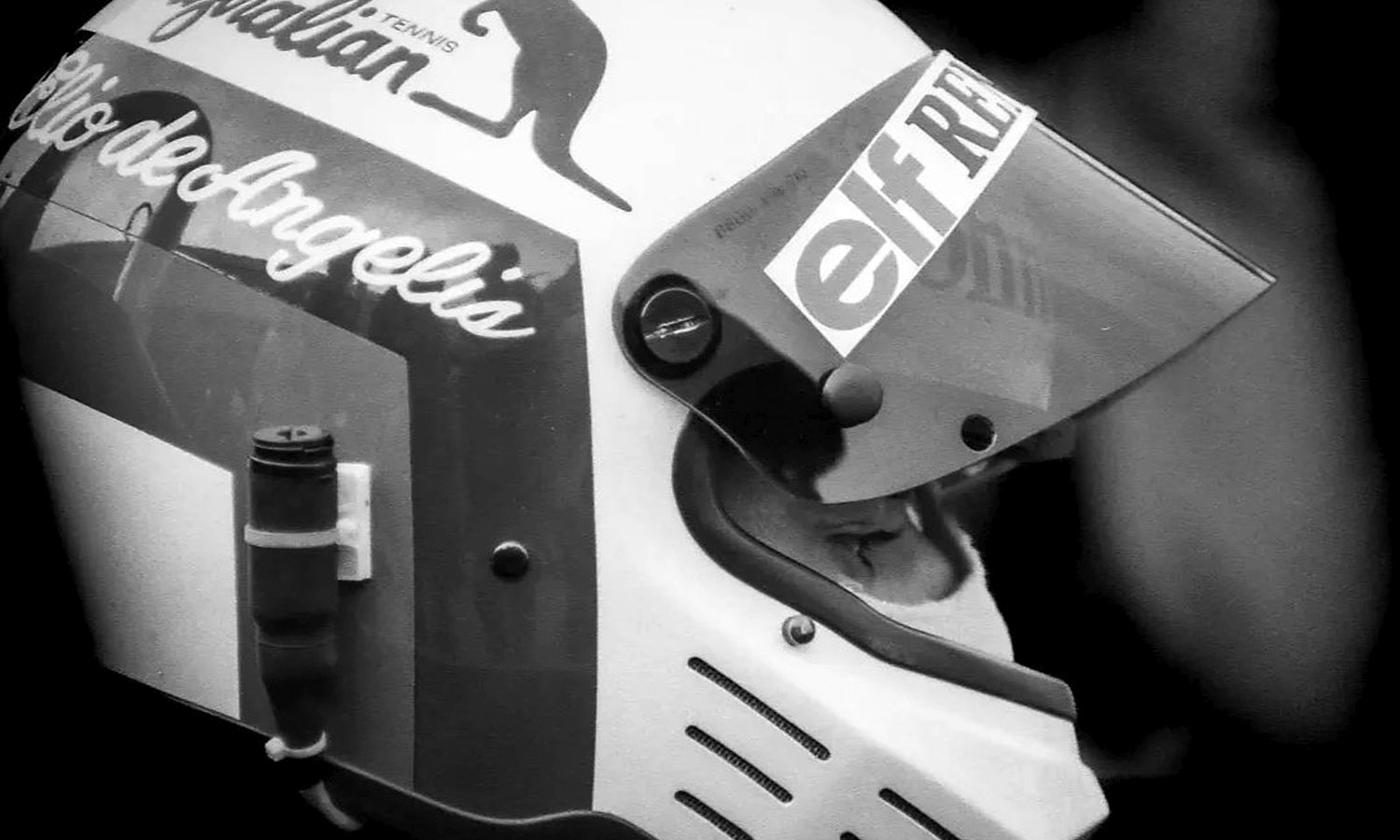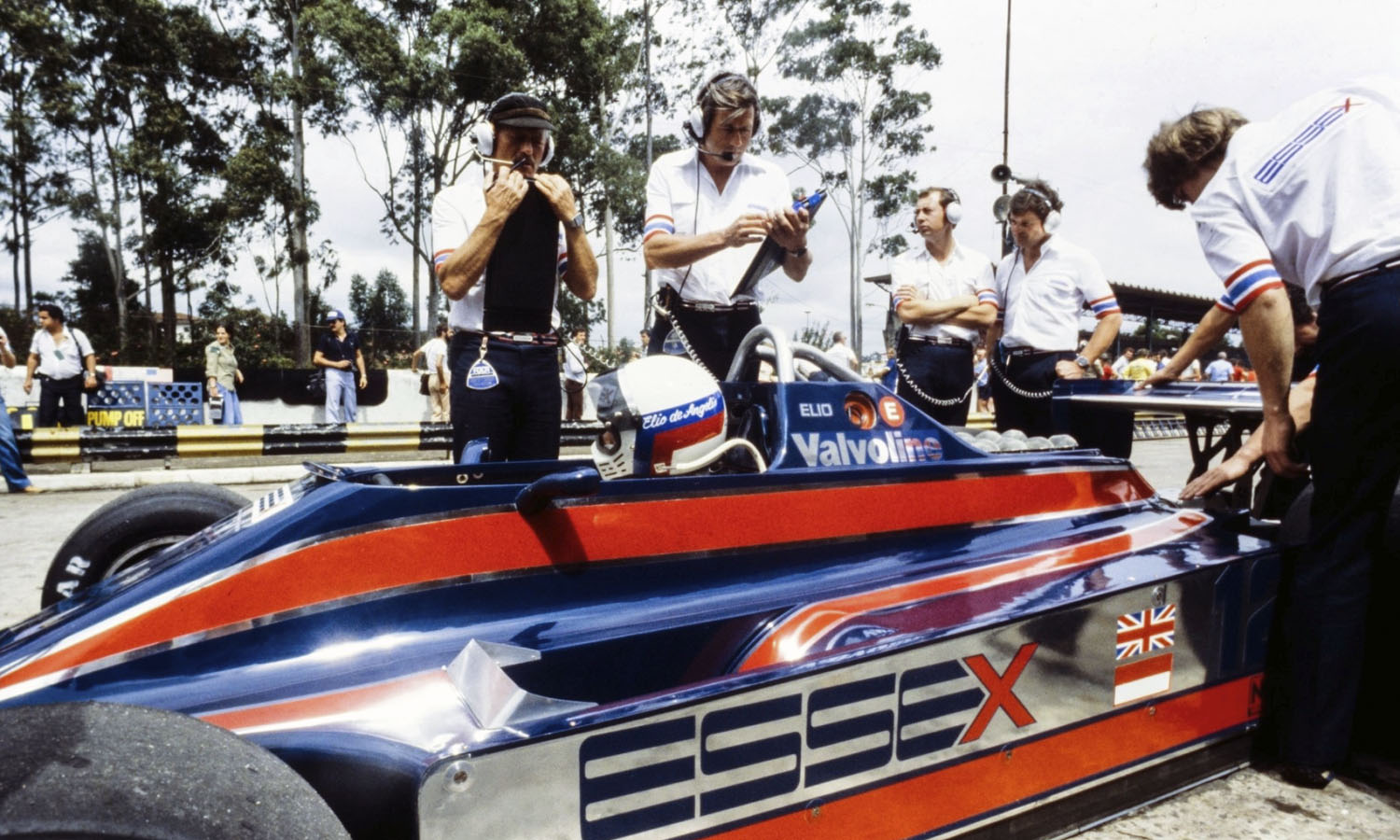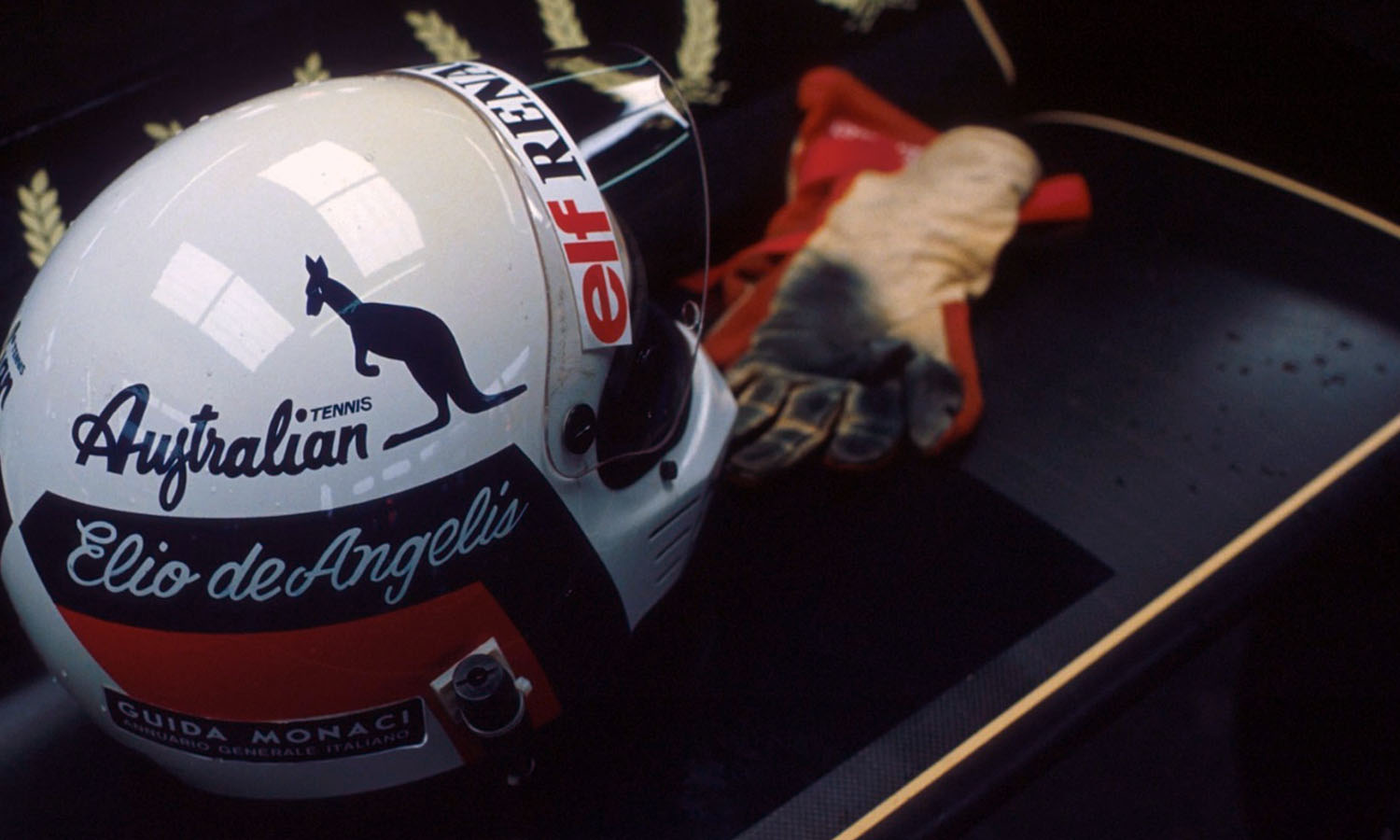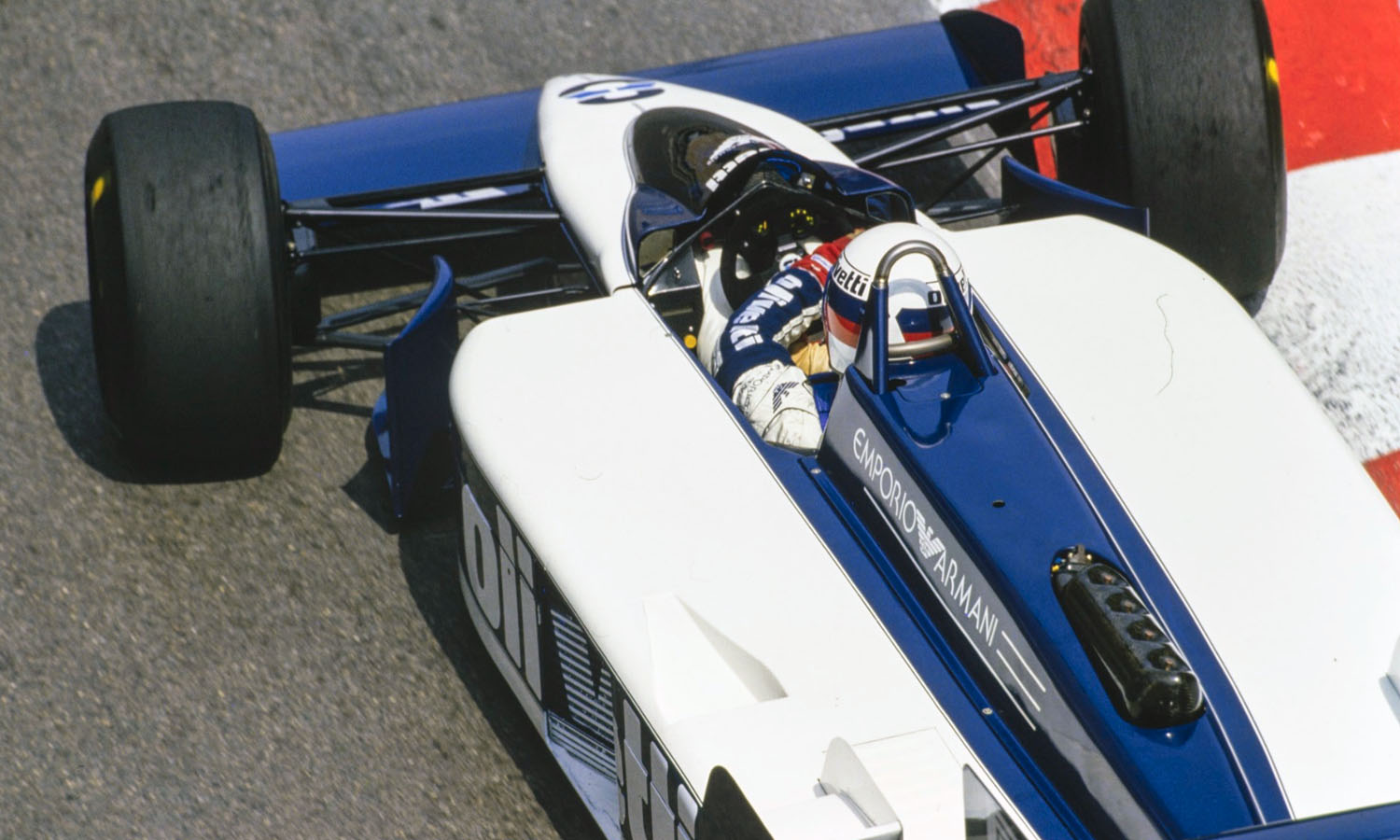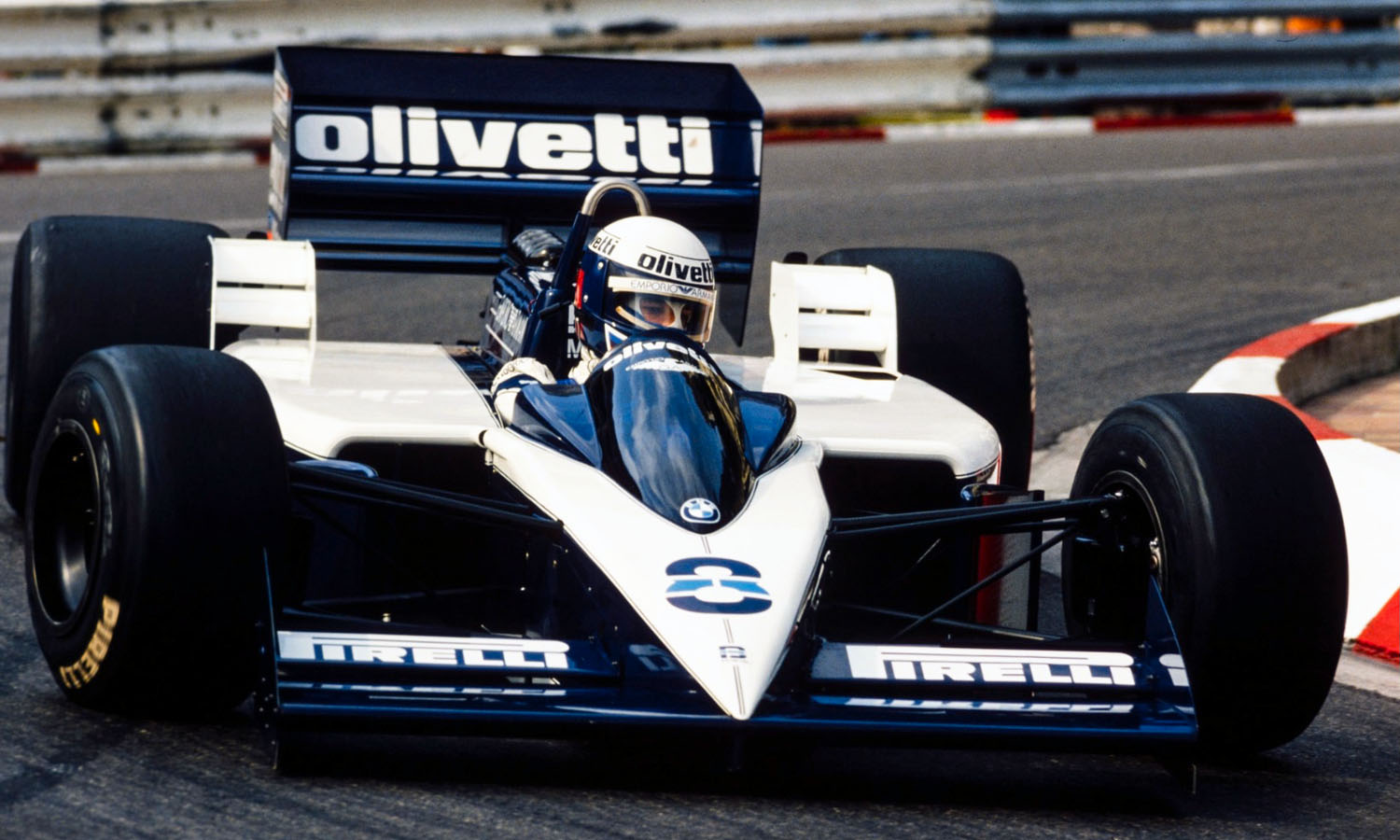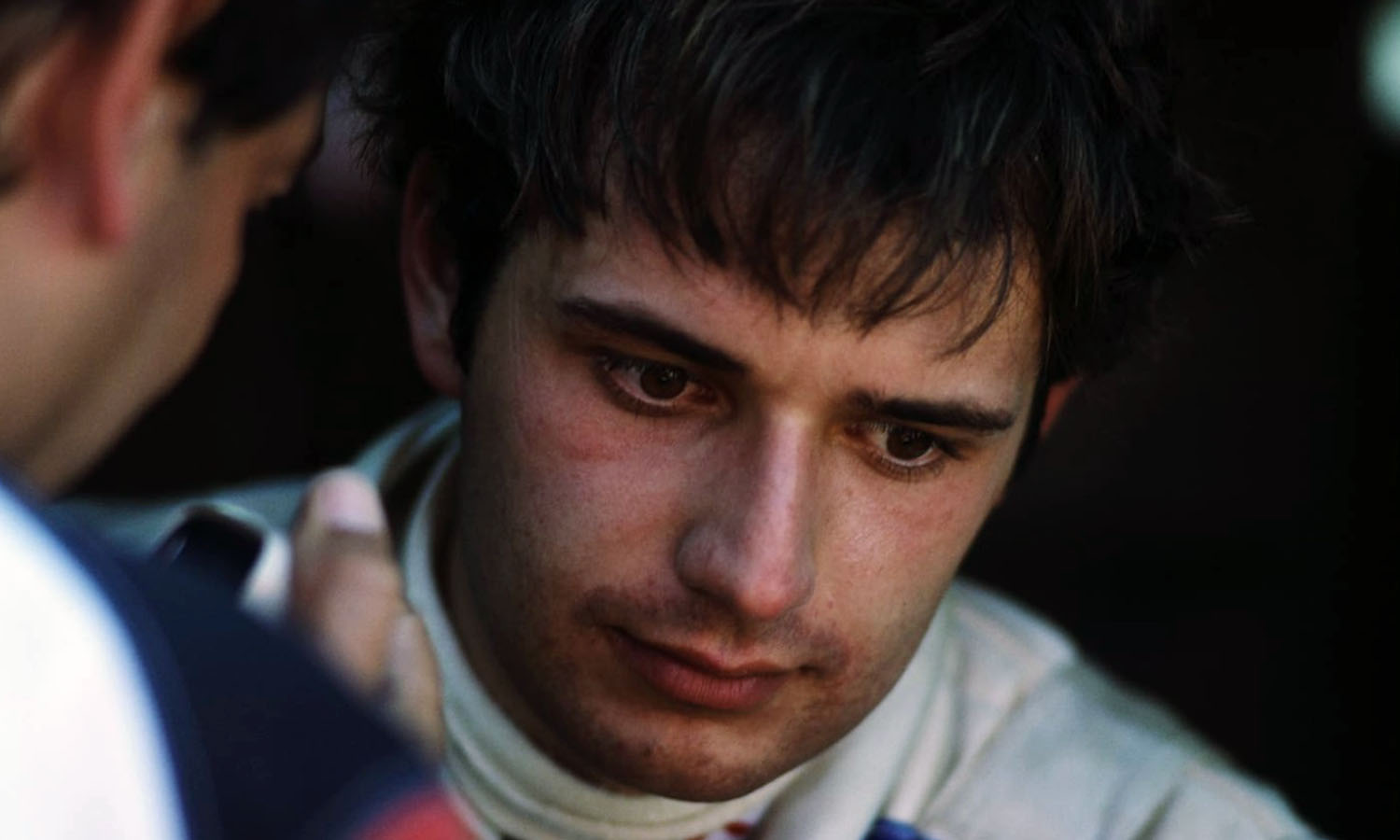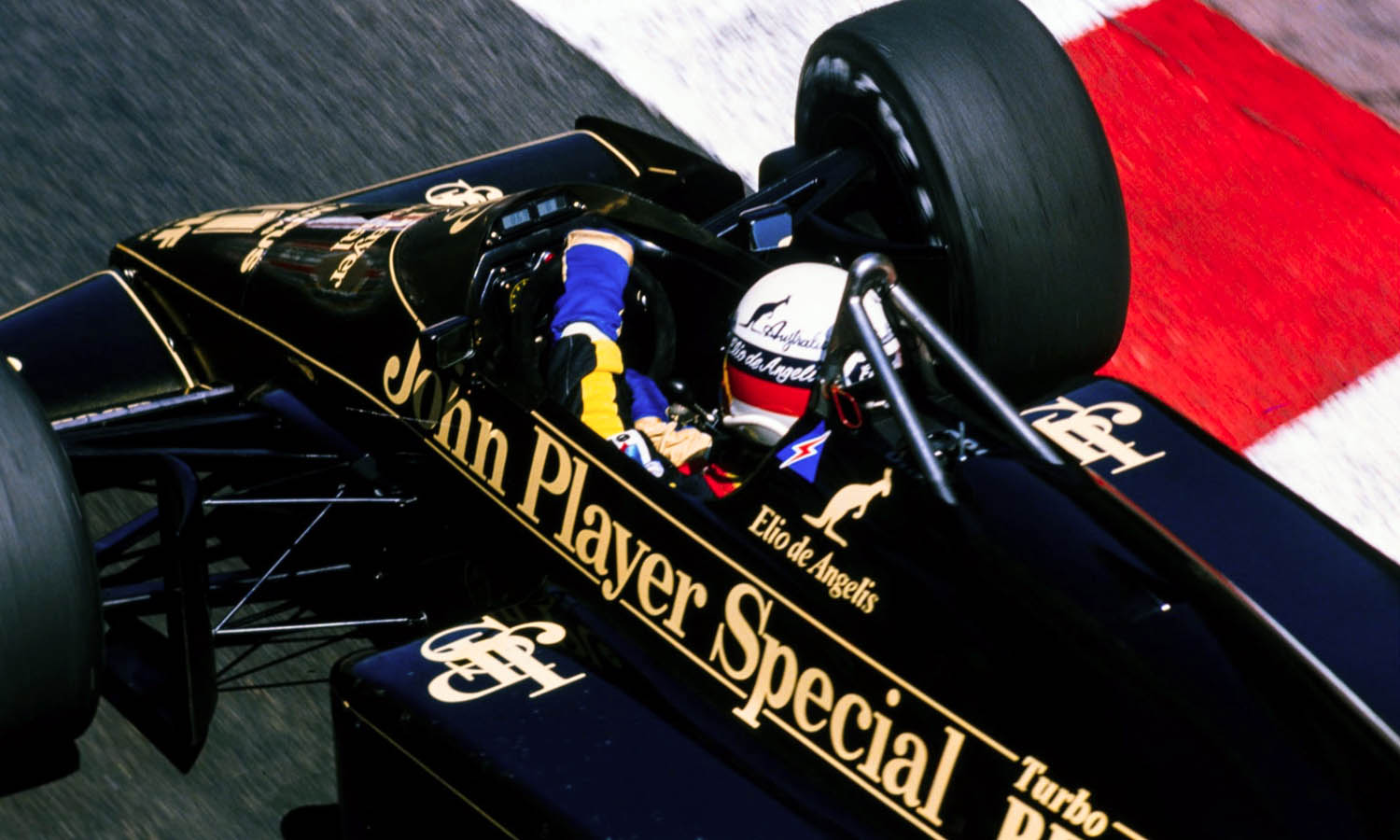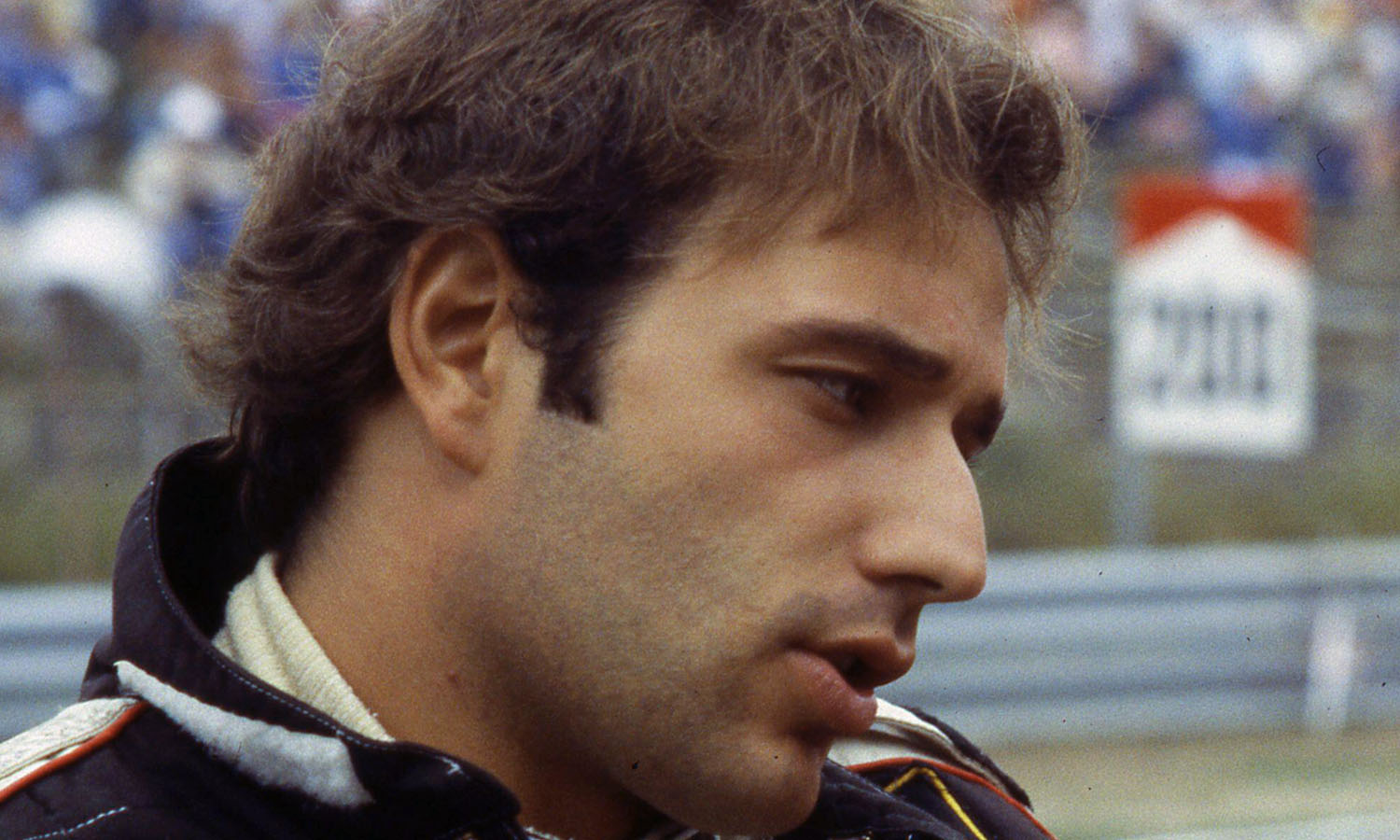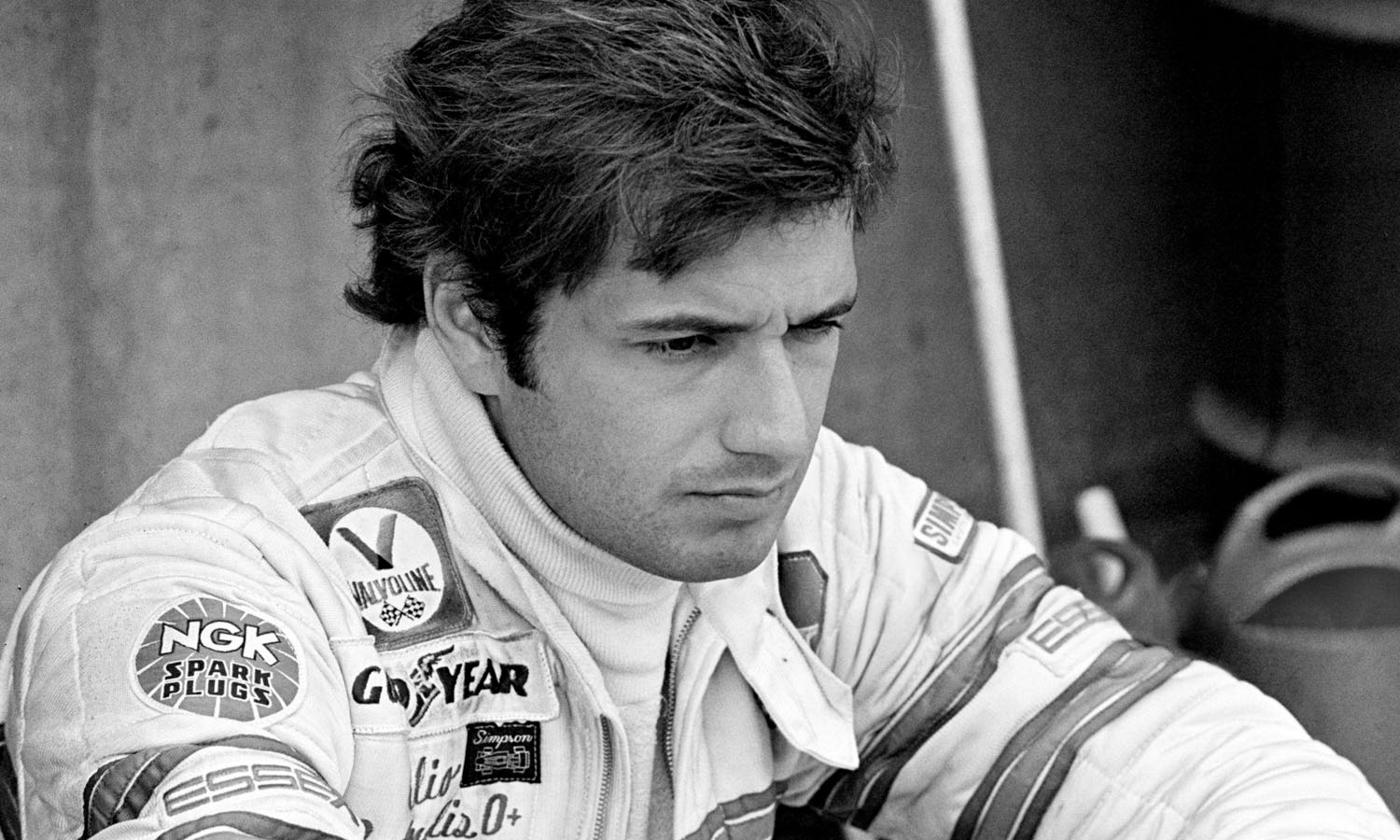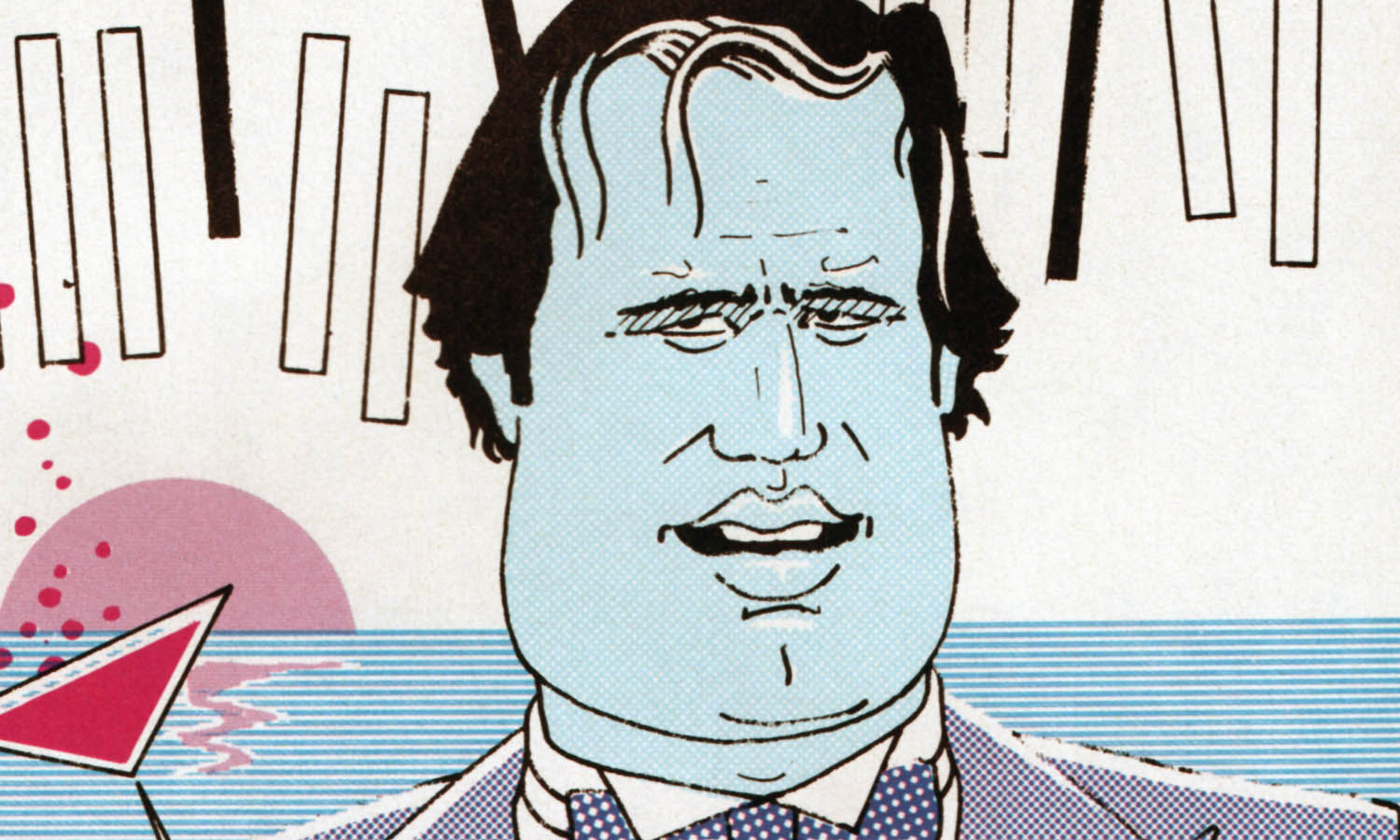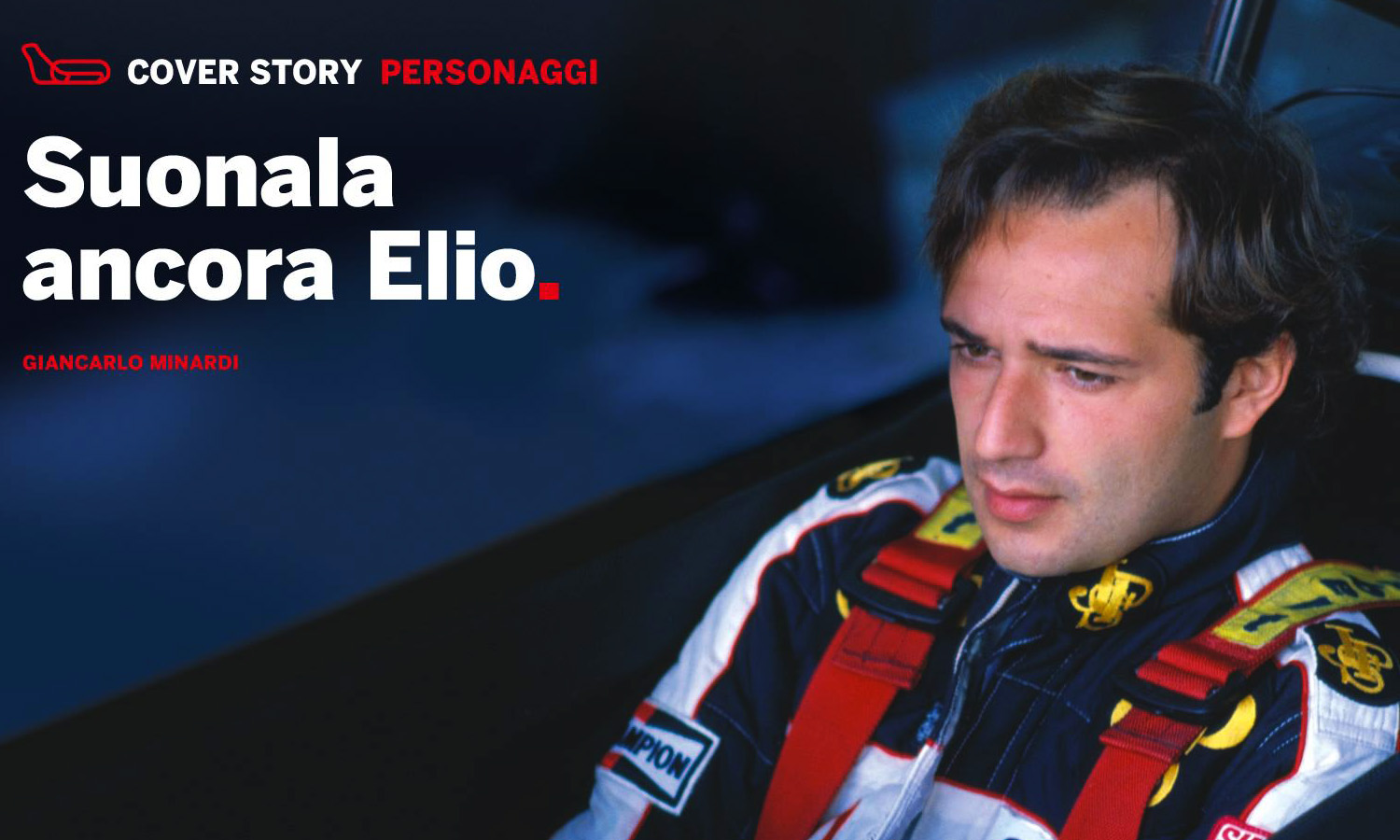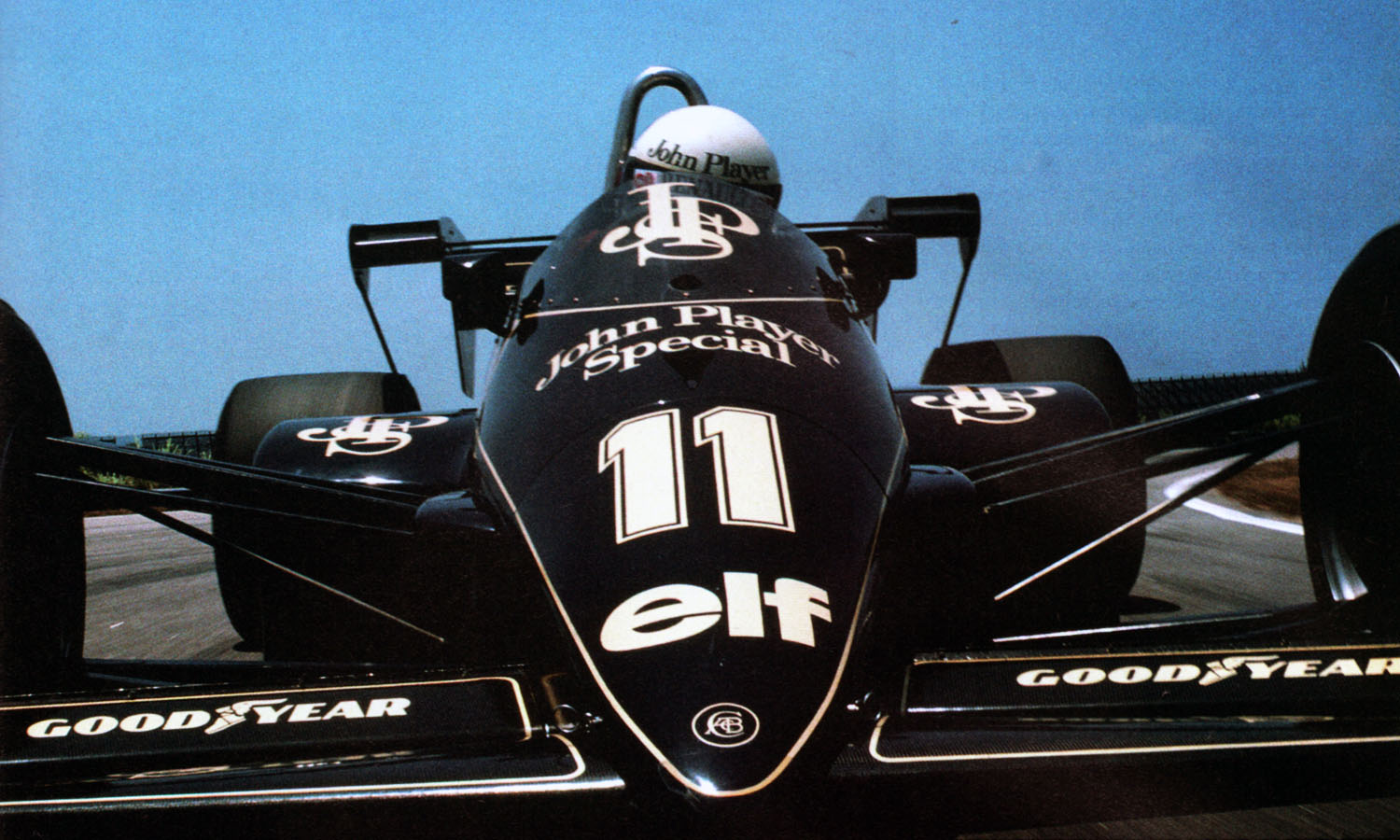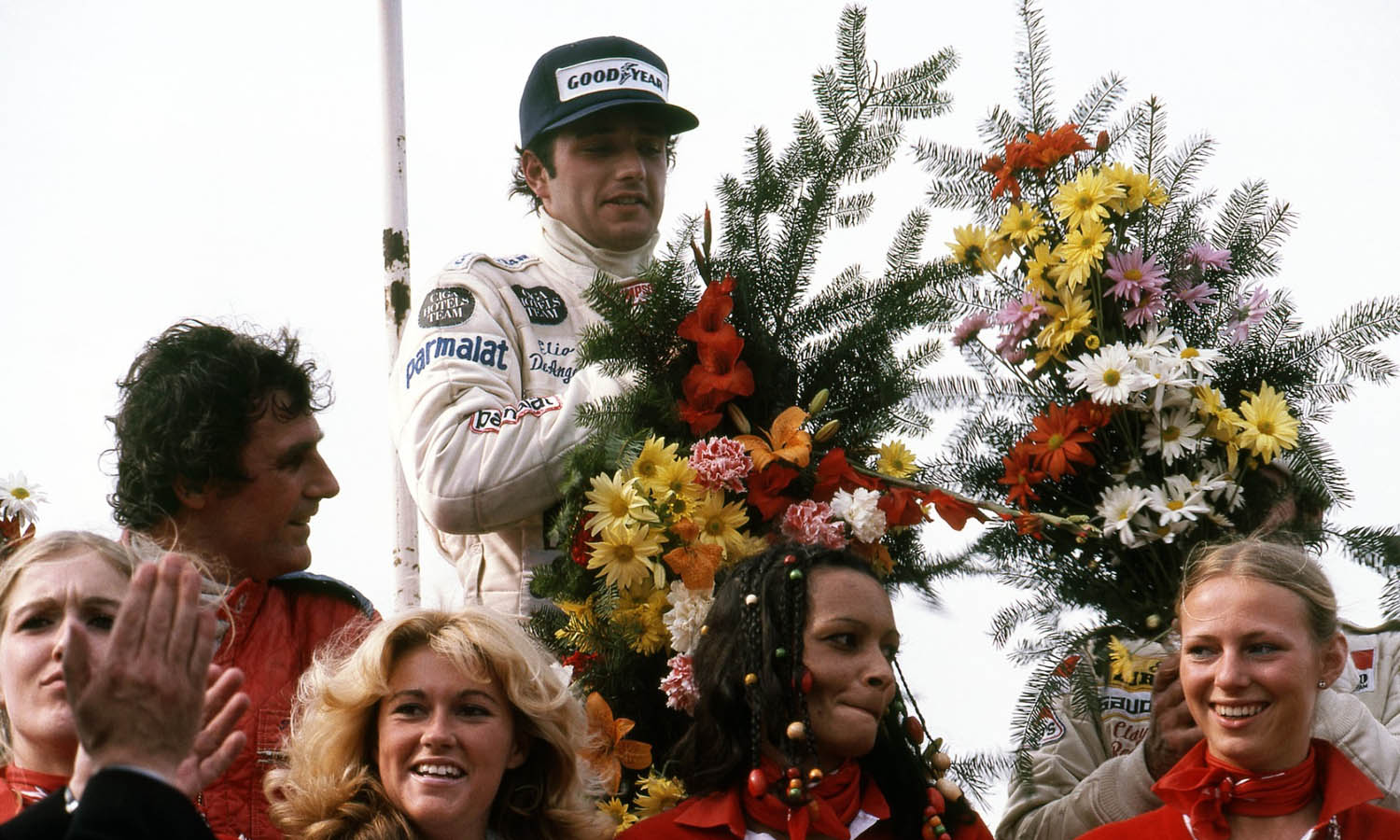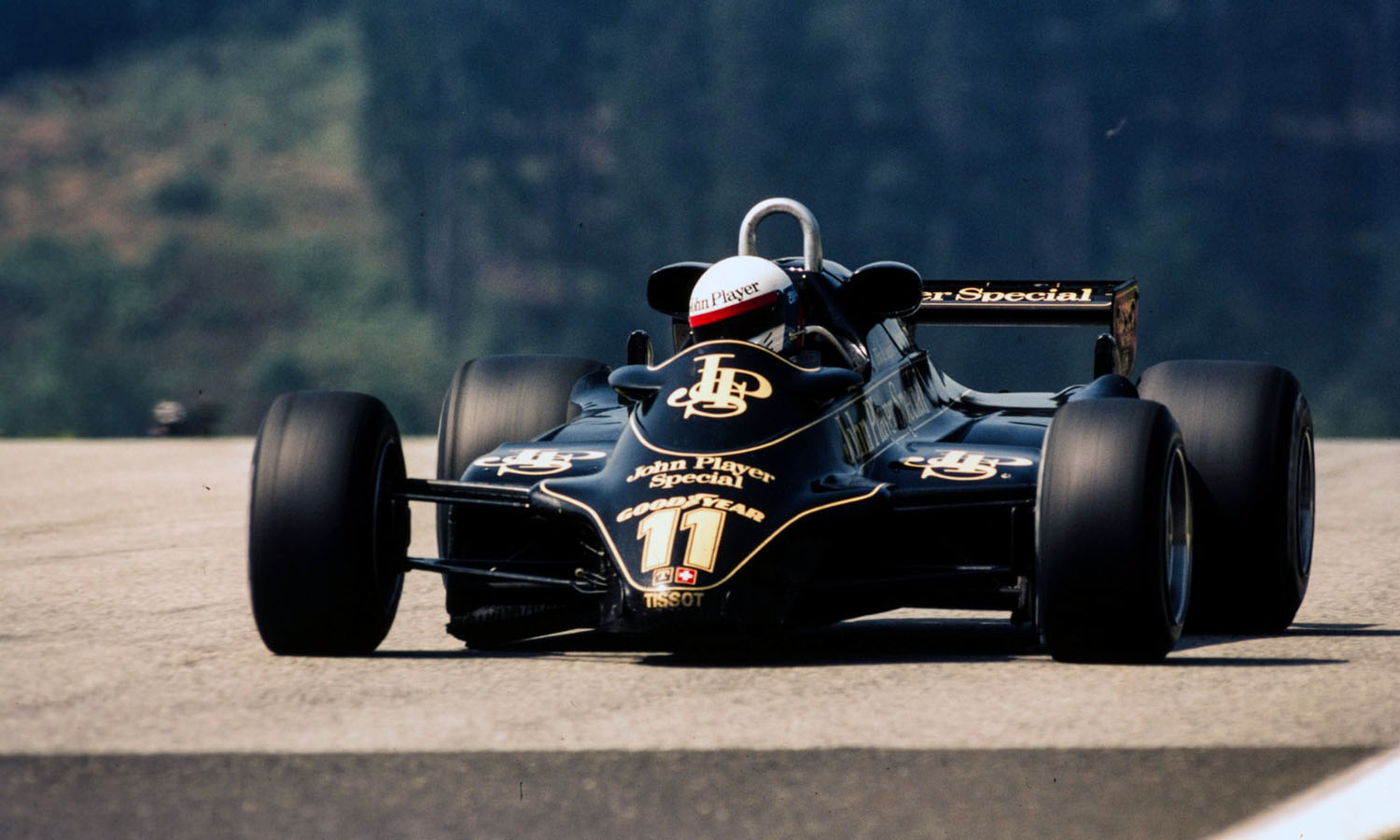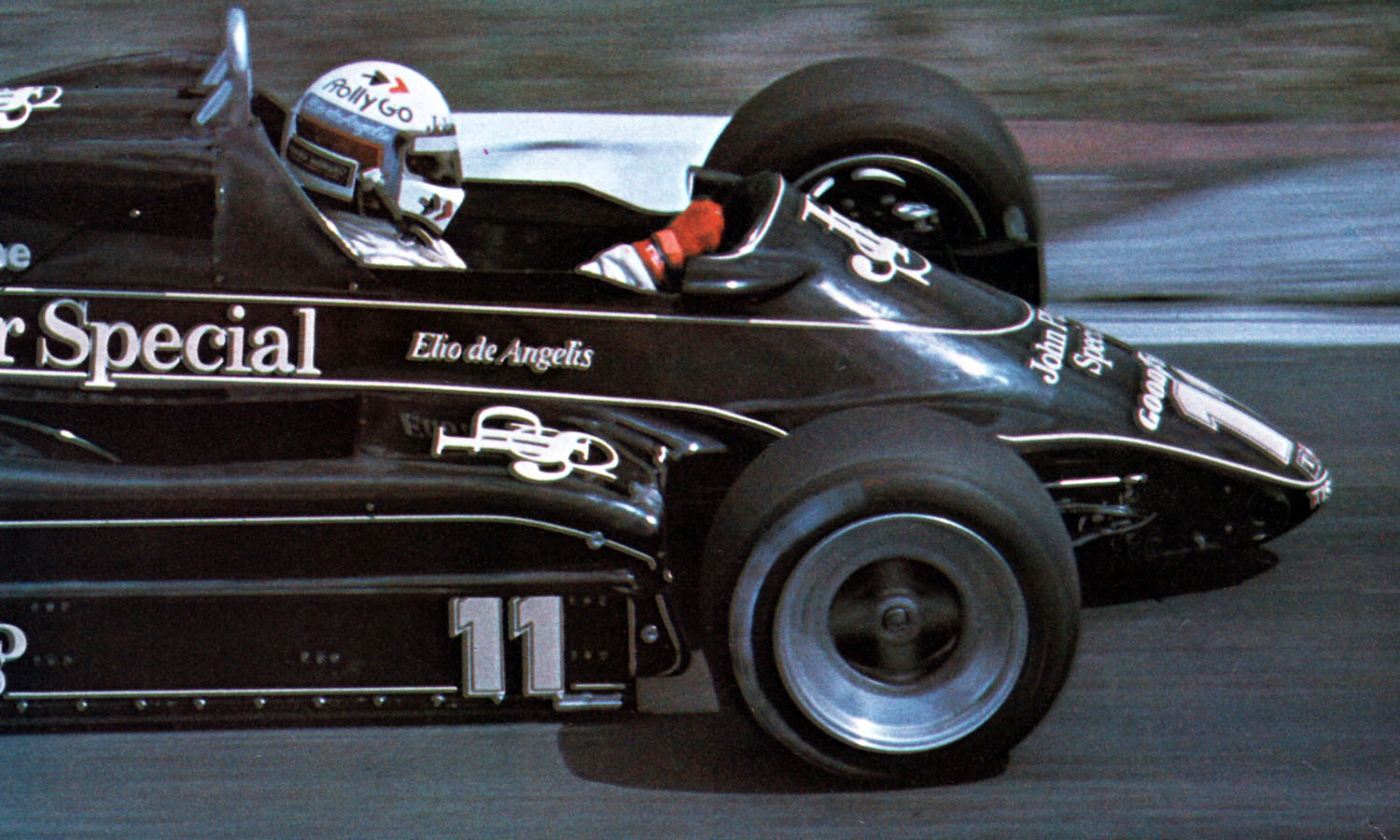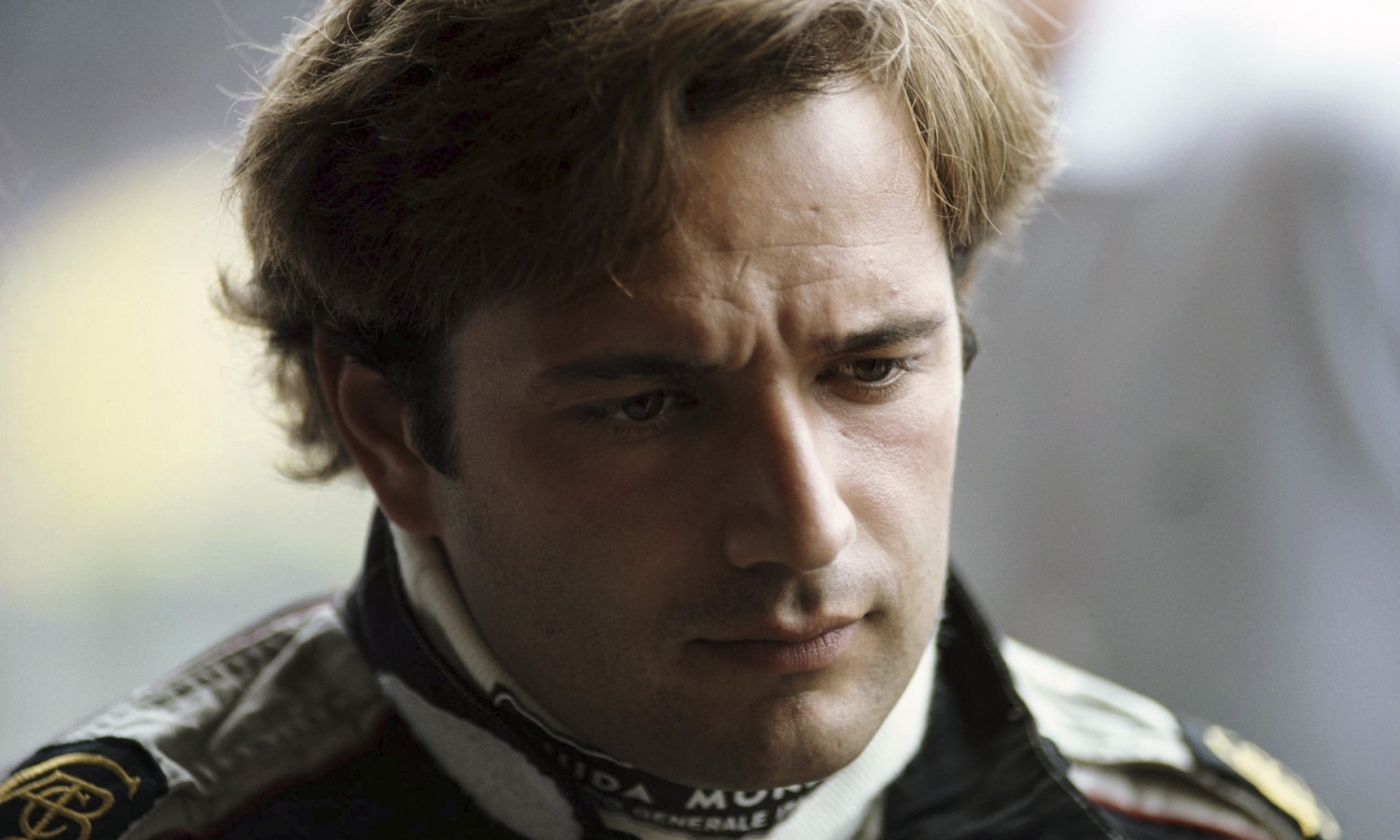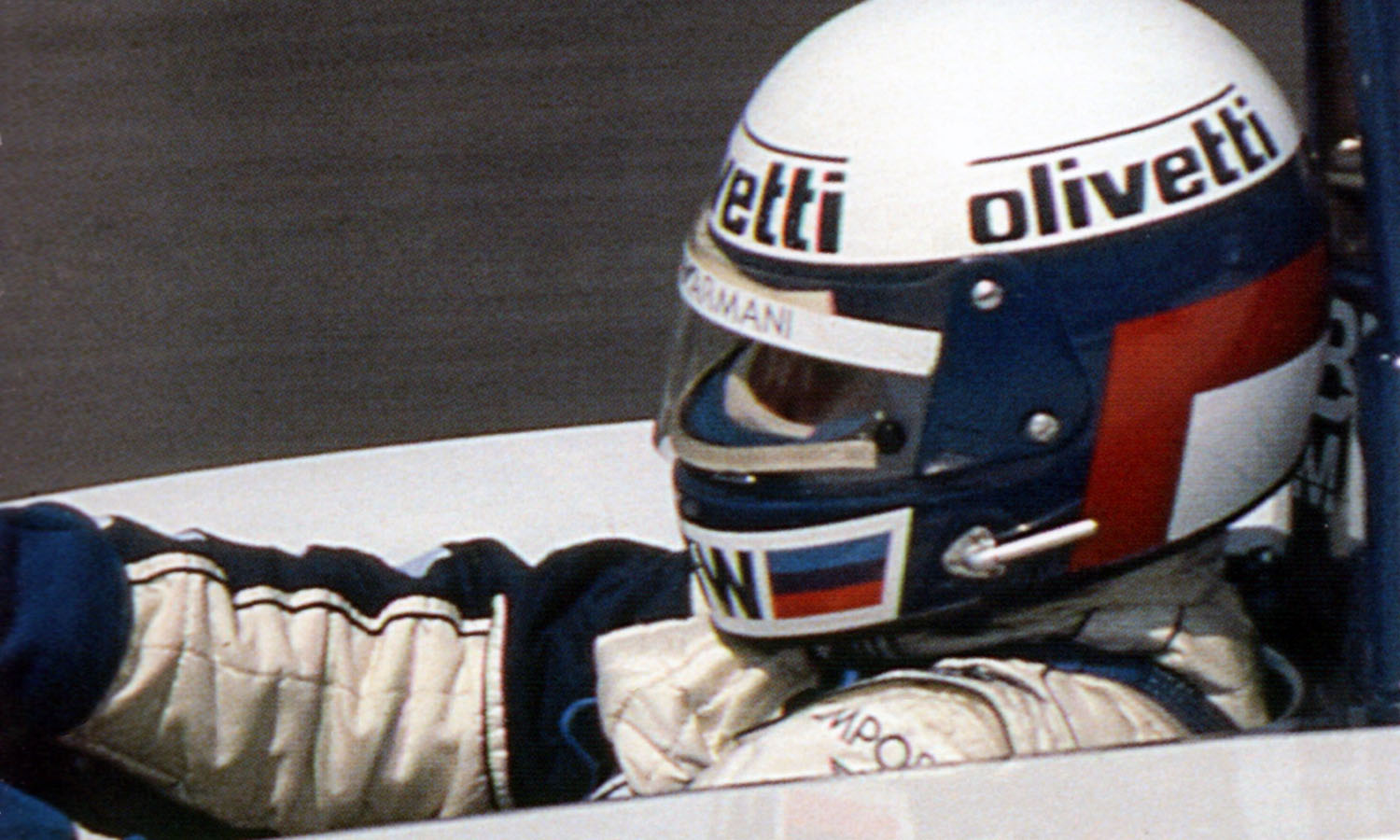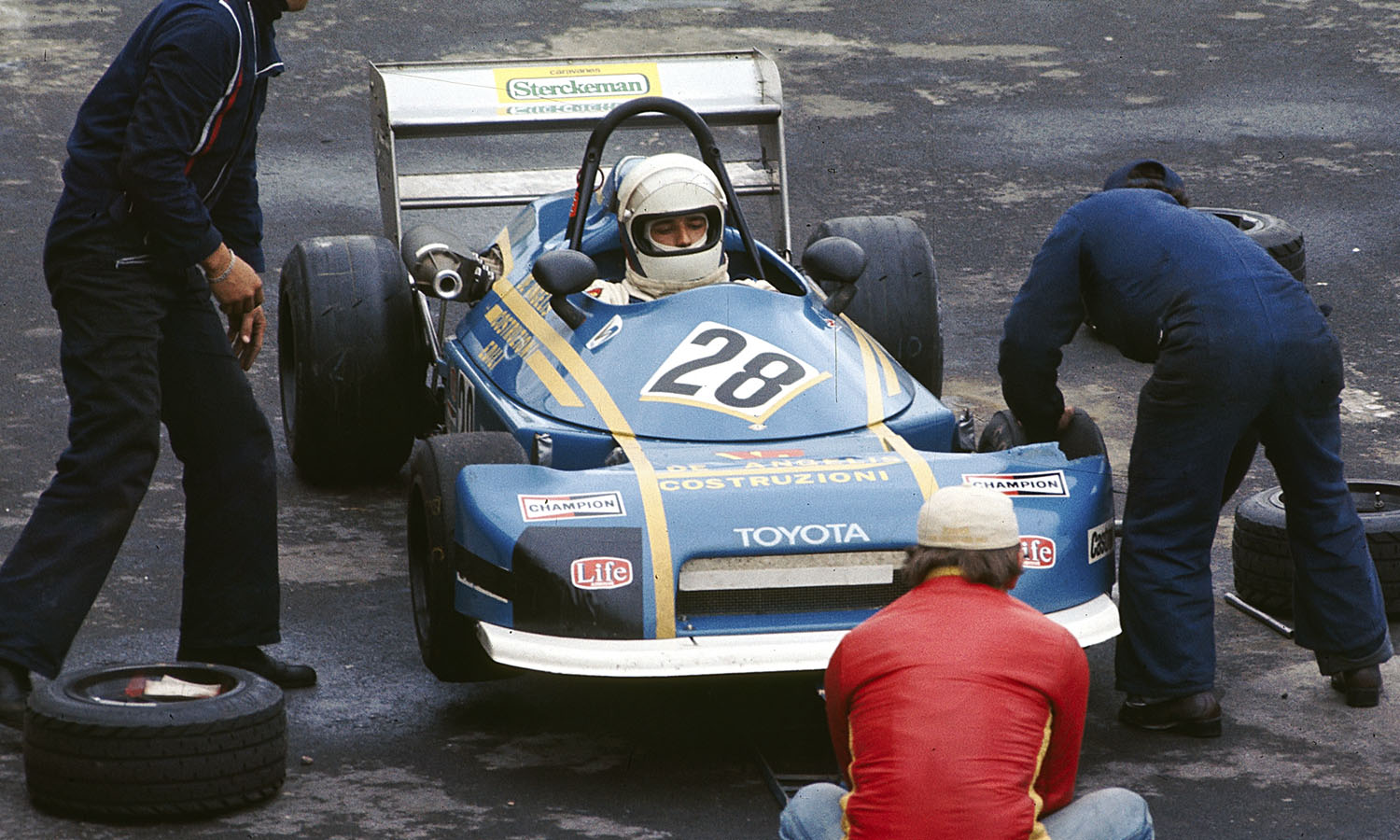Time has not faded the affection and esteem that Elio had earned. We relive his career in the testimonials of characters who summary style and quality
Translated by this website

Elio de Angelis, thirty years later. One hundred and eight Grands Prix, two wins, three poles. The numbers appear to be lying embroideries, they say but do not explain. They gasp, find it hard to justify the heart and the esteem that continue to warm up for the Roman driver, who in that magical 1985, seen as the year of Alboreto and Ferrari, was leading the World Championship after Monaco, right in front of Michele. From then on, nothing went well. His Lotus, politics, delicate internal balances, the choice to leave and the arrival in Brabham, the strange Bt55 and what followed, until that damned day at Ricard. A nightmare year, with a tragic ending. From Montecarlo to Montecarlo. In 1985 world leader, in 1986 unaware and anonymous outsider, at the last GP of his life.
No, damn it. It’s not right. And, thirty years later, the sense of indignant rebellion for this fate echoes and transmutes – as if positive feelings were renewable energies – into immense affection and the desire to not to forget.
What? So many things, of Elio. His immense passion, as a child but with an already adult intensity since the days of karting.
That strong personality that was composed inside him so quickly and so well, making him, at just over twenty years old, a man ready to risk everything for the life he had chosen, showing off his bright talent and style. With the pockets of the rich, of course, but with a soul hardened by the suffering stubbornness of the humble. All time.
The inner strength with which he was able to resist the troubled 1978 in F.2, retreating for a weekend in F.3 and going to win the GP of Monte Carlo, even closing the hypothesis of a future in Ferrari because it was too vague. And opening a way in F1 in 1979 with the dying Shadow, a team in disarray, without money and without a future, who with him in a rainy afternoon at Watkins Glen would have seen and experienced a last and incredible hurray.
Elio with the old Dn9B that after a year of hell, when the rain stopped, changes the tires and starts to go to God, putting everyone or almost everyone on. The Shadow wall going crazy, the old Don Nichols speechless, Jo Ramirez with wide eyes and dad Giulio de Angelis who plays the horns for good luck at every turn. He finished fourth and skimmed the podium driving an indebted rusty gate. This was Elio de Angelis. With his way of being and racing. Aggressively clean.
Then the entrance test and hiring by Lotus. A dream. As a child he wanted to be Jim Clark, when he grew up he found Chapman at the wall. Throwing the cap in the air when, in Austria 1982, he took the last triumph for Colin, who would be missing at the end of the year.
From there the new challenge: resurrect Lotus by becoming much more than a driver. Remaining the soul of the team that would flourish around him, while his teammate Mansell took – for years – a second per lap. Let’s remember these things.
Elio, the Black Man. Pissed off Simpson Bandit helmet, dark visor, black-gold colors and pedaling. Then 1985. Senna arrives, okay, but Elio, winning the San Marino GP, brings Lotus back to the top of the world championship.
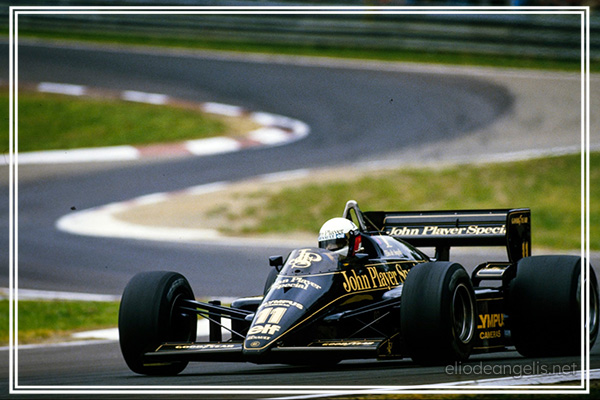
A man cannot choose the ending of his life, but those who loved him, this man, many years later, reliving him backwards, have the right to stop the film at the moment that most represents him. This. With Elio romantically in front of everything and everyone.
Roberto de Angelis
Elio was a great driver and a good man

The de Angelis family is a family with engines in their DNA. “Starting with my father Giulio – recalls Roberto, Elio’s brother – a high-level motorboat rider who instilled passion in us. From there for Elio, me, a year younger and Andrea, born in 1962, it became logical to race in karting, where Elio himself started at 12, obtaining the 2nd place in the world championship at Ricard in 1975 as his best result. Then he switched to F.3 and at the first test he proved faster than Patrese who was testing his car. In F.3, among other things, he also won the Monaco GP in 1978, but was slowed down in F.2 by the Ferrari engine that was not developed so much, so he called the Drake and told him that he could not be happy to finish eighth, he who wanted to go to F1, adding that he would only stay with a view to becoming a Ferrari driver in the GPs. But it was not so. Although, on the occasion of the Long Beach GP in 1978, Elio was on early warning until the end, because Villeneuve was indisposed due to mumps. Then the F1. The disappointment with Tyrrell, the lack of competitiveness of the Shadow and the Lotus, which was no longer what it once was, but which Elio also led to success. Hence his efforts to take Ducarouge and find him sided with Senna, at the beginning of 1985. Well, if my brother had been colder and more calculating, he would have achieved more, but he was basically a good guy.
He was a generous, cheerful boy, he cheered for Roma and deserved so much more from his career. He died of an accident in a test that was not supposed to be his, in which he was called at the last moment to replace Patrese. It was destiny… However, we are consoled to think that Elio, whose best position in the world championship is 3rd in the ’84 World Championship, left a great memory among the fans.”
Beppe Gabbiani
In Kart we formed a big group
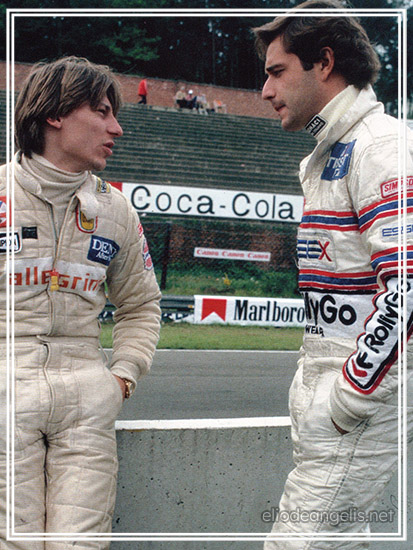
Among those who attended Elio in the first part of his career, Beppe Gabbiani is one of his closest friends: “We raced in karts and the de Angelis were a big family on the track too – says Beppe -, with Elio, Roberto and Andrea, sister Fabiana – who later became Ross Cheever’s wife – cheered for them from the pits. They were all good, even if Elio was perhaps the most gifted. He was blazing fast and more thoughtful than me. On the track, once Elio ended up with his index finger in the wrong place, under the carburetor, between the pinion and the chain and a phalanx was amputated, so all of us went looking for it…” After the kart, in which Elio was vice world champion, the single seaters arrived: “In F.3 in 1977 we emerged as Italians with strong people such as Piquet and Warwick racing there, then the 1978 season stopped us a bit in F.2 with Ferrari engines, him with Minardi and I with Trivellato, but he moved to Chevron-Hart at the end of the year and returned to the podium. Then came F1 and he got something out of the Shadow. We met again in 1981, when I was racing with Osella and he in Lotus, then in 1986 we had an appointment for dinner after the test at Ricard, which proved fatal for him. I never digested this; I didn’t even go to the funeral.
A few years ago, I overcame the trauma in Monza, when Pirro and I drove Elio’s Lotus, owned by Colin Chapman’s son, on the occasion of the historic F1 GP weekend. It’s incredible, Elio was someone who never banged, in all he had a couple of accidents and one took him away from us…”
Mauro Forghieri
His family is one of strong and true values
Engineer Mauro Forghieri has two distinct memories of Elio de Angelis, one as a driver, the other, surprising and almost unexpected, as a sudden guest of the de Angelis family, on a New Year’s Eve in Porto Cervo, Sardinia. “As a driver he was strong – remembers Forghieri – a very fast guy with a head. I remember him testing the 312 T3 for us at Fiorano and immediately showing himself to be very efficient, even if this was not followed up by any further developments”. The other is an exquisitely human cross-section: “A chance meeting, on New Year’s Eve, at the de Angelis family home in Porto Cervo. We ended up spending the party together and I discovered a simple, warm family, with a sense of welcome and many true values.
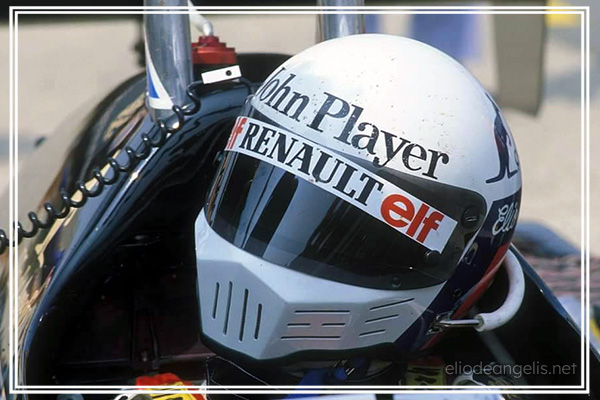
Well, it was beautiful, because that environment explained exactly Elio’s way of being, certainly from a good family and at the same time true and pleasant as a person. One of the few capable of playing a piano and squeezing the best out of a single seater”.
Jan Lammers
At Shadow he was faster and more mature
Jan Lammers was Elio De Angelis’ first teammate in F1, in 1979, within the Shadow: “We were both very young, on the right side of our twenties and both were rookies in the world championship. Of course, I gave a lot of importance to our comparison, but I must admit that Elio, although two years younger than me, was very mature as a driver and, especially in the first part of the season, it was difficult to get close to his times. Things improved a little in the second part, but the truth is that the Shadow team was finished, the money was gone, the technical evolutions were not there and soon the same reliability became a big problem, because the typical breakdowns of pieces that had long since reached the end of the mileage occurred.
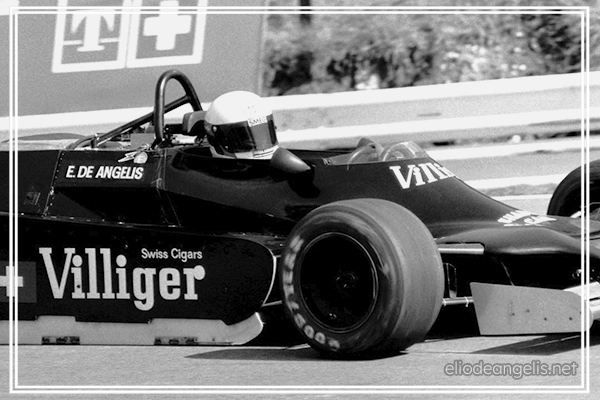
In the whole season there was only one evolution, related to a suspension. As for Elio, at that time I lived things with concern and excitement but looking back I can only appreciate his light-hearted spirit, his ability to smile even when things weren’t going too well and the many laughs made together with him and Jaime Manca”.
Jo Ramirez
When he gave driving lessons to Ongais
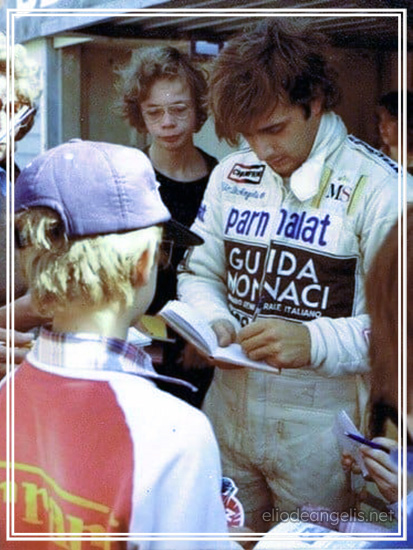
In 1979, inside the Shadow in disarray, Jo Ramirez was one of the few fixed points: “Elio at the last moment preferred not to go to Tyrrell and at Shadow he had brought 100 thousand dollars, from the sponsor Staroup Jeans and from the family coffers, since he could. He was a wonderful guy. I remember him at Ricard in testing with our third driver, the Hawaiian Danny Ongais, who felt understeer from Signes and asked Elio for guidance. He told him, ‘Danny, if you keep your foot down, the understeer disappears. You have to press the accelerator: this is for what that pedal was made for’. Ongais listened to Elio, got back on the track, took a second and a half off his time and then he never drove for us again”. For Elio the redemption of the very difficult 1979 takes place at the US GP at Watkins Glen, where he takes the race of a lifetime. Ramirez says: “It rains, then it stops, Elio is among the last to stop and we decide to play a wild card, mounting front qualifying tires. He is doing great and is fourth. In the evening we celebrated that fourth place as a victory and he found an old piano to enthusiastically perform his highlights. At the Glen he had saved his season and would soon be joining Lotus”.
Mario Andretti
A fast driver and a great gentleman
Elio arrives at Lotus for the 1980 season, where a direct confrontation with Mario Andretti awaits him. And it was precisely “Piedone” who had to remember that intense but unfortunate year: “I raced together with Elio de Angelis in my last season in Lotus. He showed up showing off two important qualities: he was very fast on the track and in his life he moved with the class of the great gentlemen, even though he was just over twenty years old. There was little for us to do with that car. It would take some reinforcements in the frame, but Colin Chapman was completely against these things. For him, adding weight to one of his cars was not even conceivable. Also, by now I saw him a bit distracted.
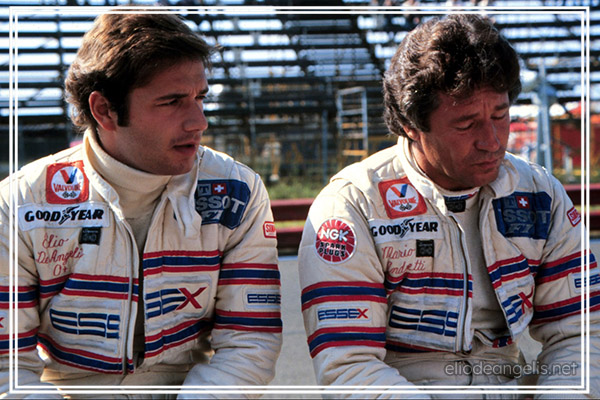
So much so that for Elio the best result came at the beginning of the season, with a good second place at the Brazilian GP, while I had to settle for just one point, but I left myself just fine with Chapman, so much so that I could share wonderful memories”. The ending is singular: “I called Elio back at the end of 1982, to ask for information on Chapman’s death. Well, they didn’t even show it to him… But don’t ask me if I think who knows… Simply not even Elio, who had given him his last victory, could have said goodbye to Colin”.
Keke Rosberg
He won by beating me in a sprint and he deserved it
The big day of Elio de Angelis’ first F1 world championship victory arrived at the 1982 Austrian GP, with Lotus, managing to beat Keke Rosberg’s Williams in one breath, also very much on the way to his first world title. Here is the memory of Nico’s father: “If there was a driver I bonded with, that was Elio. I have often wondered if that afternoon instead of him there had been another how I would have behaved… It was a very fast corner and Elio behaved exactly as he should have, effectively locking me inside. As for me, I could have tried aggressively on the outside, but there was a real possibility of ending up against the guard rail”. In the end Keke settles for the second, 5 cents from Elio: “I have no regrets, that was his day and not mine.
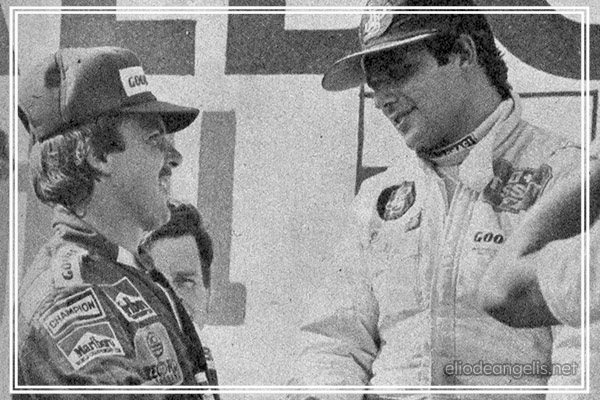
And my first victory was only a matter of days, I felt that I was more mature, so much that two weeks later I managed to win a GP by equalizing the score with Elio, who was very nice to me”.
Peter Warr
Maybe he just lacked the... nastiness
After the sudden death of Colin Chapman, which took place on 16 December 1982 in Norfolk, the Lotus helm was taken over by Peter Warr, who ferried the F1 team by leveraging Elio and not finding in the other driver, Nigel Mansell, the same confidence inspired by the Roman. Warr, who passed away in October 2010, thought about Elio like this: “On my return to Lotus, I found this Italian driver, who in some ways immediately caught the eye as he was as singular as he was original. He did not disdain to smoke a few cigarettes, he played the piano and if there was half a glass of whiskey to drink, he did it. He had a refined girlfriend, Ute, who was simply gorgeous, and he loved driving racing cars.
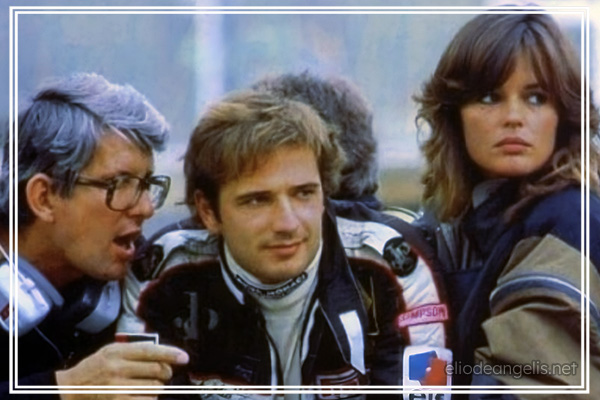
In addition, he was supported by a strong education from the wealthy Roman family, which had taught him how to behave. So, a nice man and a very, very consistent driver. If I really have to find a fault in him – concluded Warr -, on closer inspection it was also a virtue. That is, he wasn’t hungry. He lacked the atavistic, bad anger that allows you to seek and express that extra something that you hide in your soul. But to me Elio – concludes Warr, by whom Elio felt betrayed in favor of Senna – pleased us infinitely more than our other driver Nigel Mansell, one who did not know how to behave and who was convinced that the whole world was angry with him. The arrival of Senna and the all-encompassing behavior of the Brazilian on and off the track then advised us to take a second driver more compliant and Elio, who had also won a GP for us at Imola in 1985, then went to Brabham”.
Stefan Johansson
That bracelet symbol of destiny
Finally, a story told some time ago by Stefan Johansson, precisely about the year marked by destiny: 1986, which saw Elio at the wheel of the Brabham BT55, the innovative and recalcitrant “sole” designed by Gordon Murray. “Elio and I have never been team mates, but we have always met a lot – explains Stefan -, we had affinities, we loved each other. For both in 1986, things were not going as they should. My Ferrari wasn’t a winner, as much as his Brabham, it wasn’t even easy for him to score points, the car was still to be developed. Well, when we were in Rio, for the Brazilian GP, he had bought a lucky bracelet, dedicated to a deity of Bahia. They had explained to him that it was enough to make a wish, put the bracelet on his wrist and everything would be fine.
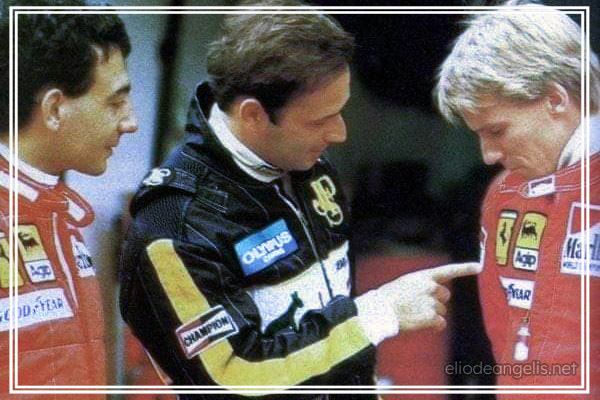
A couple of months later, we were testing at Ricard, me with Ferrari and he with Brabham, and I asked him: ‘Hey, Elio, so does the bracelet work?’. And he ‘Not at all, nothing!’ Took it off and threw it away. So shortly after he got out behind the wheel of the BT55 and had the fatal accident”.
The Last Interview
Elio and his honest cry of pain
This is the fundamental interview to understand Elio de Angelis. Made at the beginning of 1986, the year of the transition to Brabham and, unfortunately, of the fatal accident in the Ricard tests. In it there is everything: the years of the period in Lotus, from 1980 to 1985, which represented the fulfillment of a dream and the natural and deserved development of his career. With sublimations, crisis, problems, victories, rebirths and the final disappointment that preludes the definitive divorce, which took place in no uncertain terms and with clear reciprocal positions. Between the lines Elio does not hide the bitterness for how this long adventure ended and says bread to bread and wine to wine, even of his relationship with the technical Ducarouge.
He also talks about the relationship with fellow rival Senna and with the Lotus team principal of the time, Peter Warr, by whom he feels betrayed. An honest and sincere cry of pain.
© 2016 Autosprint • By Mario Donnini • Published for entertainment and educational purposes, no copyright infringement is intended


